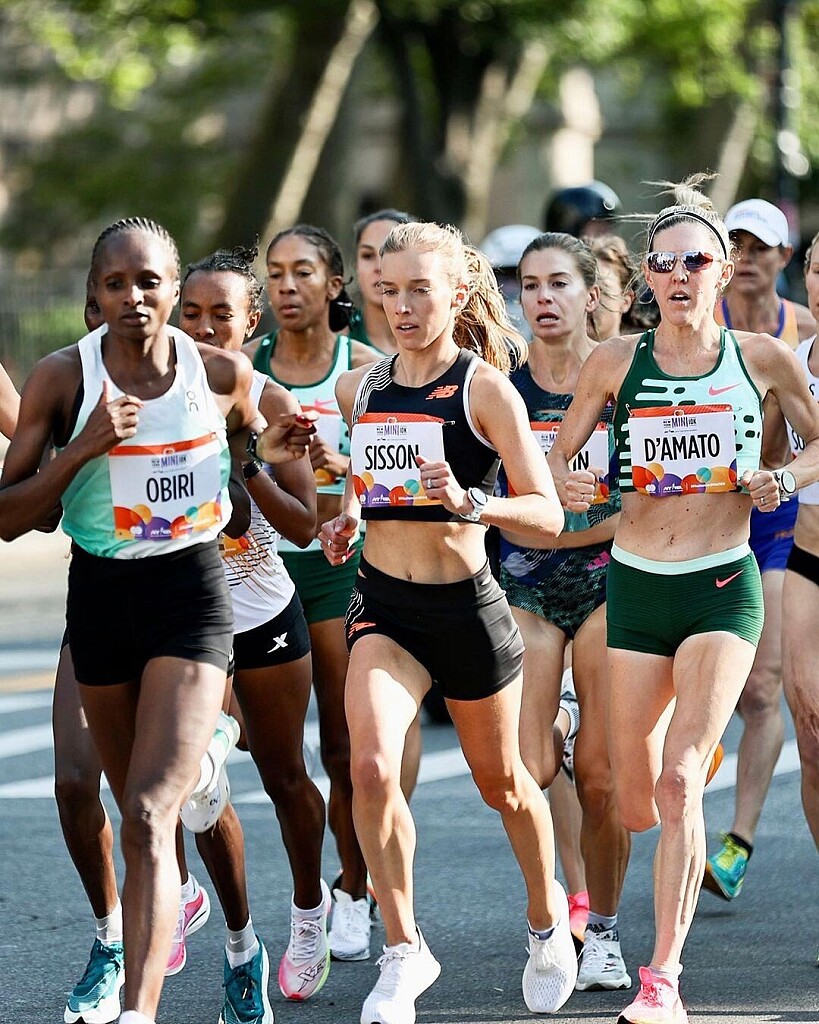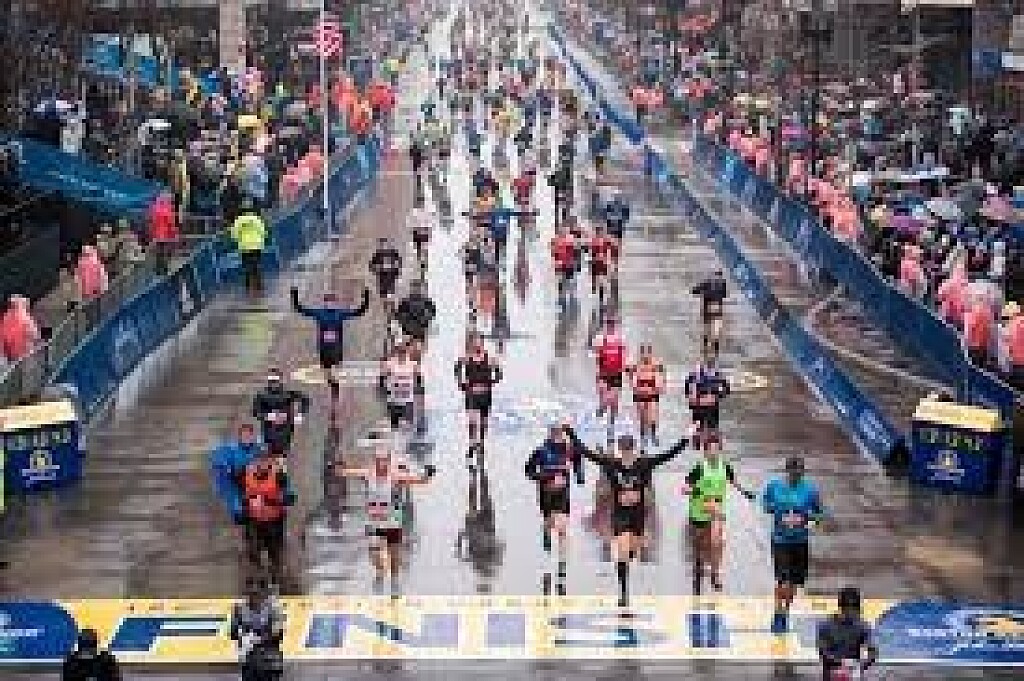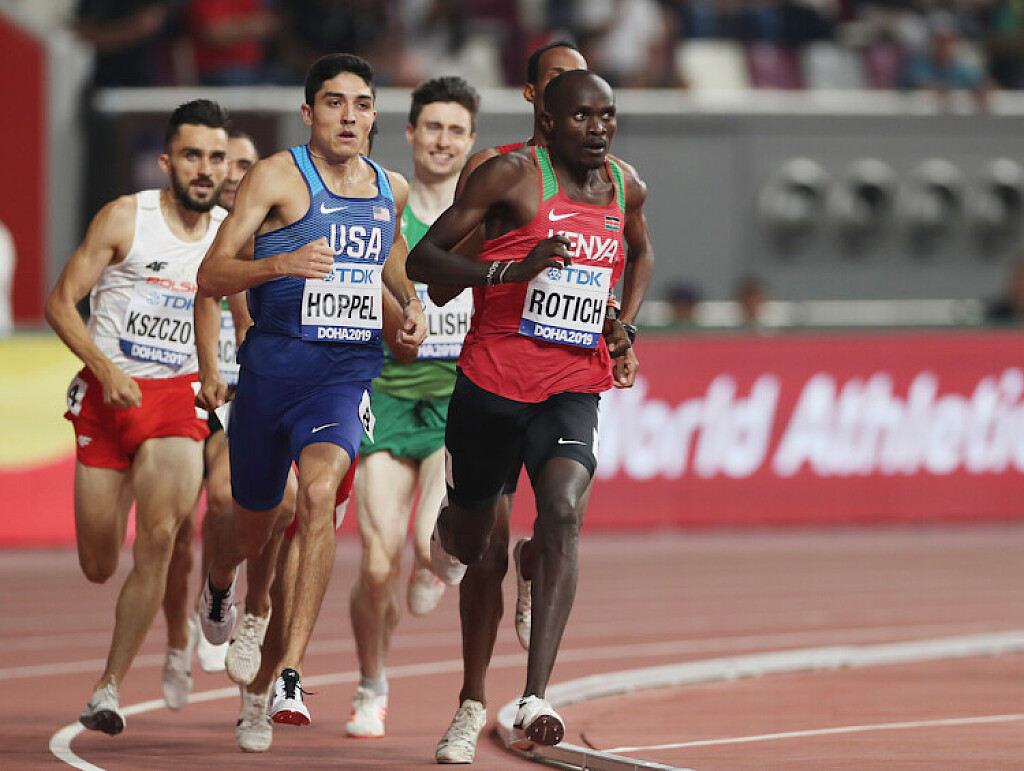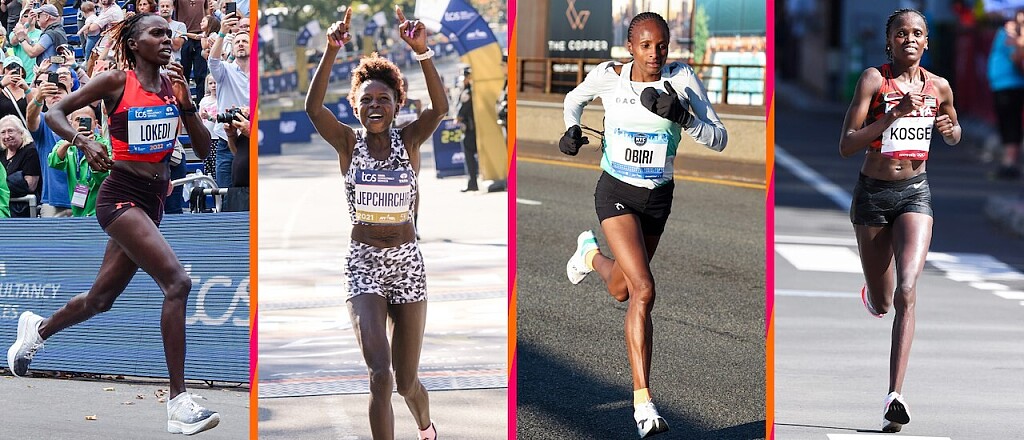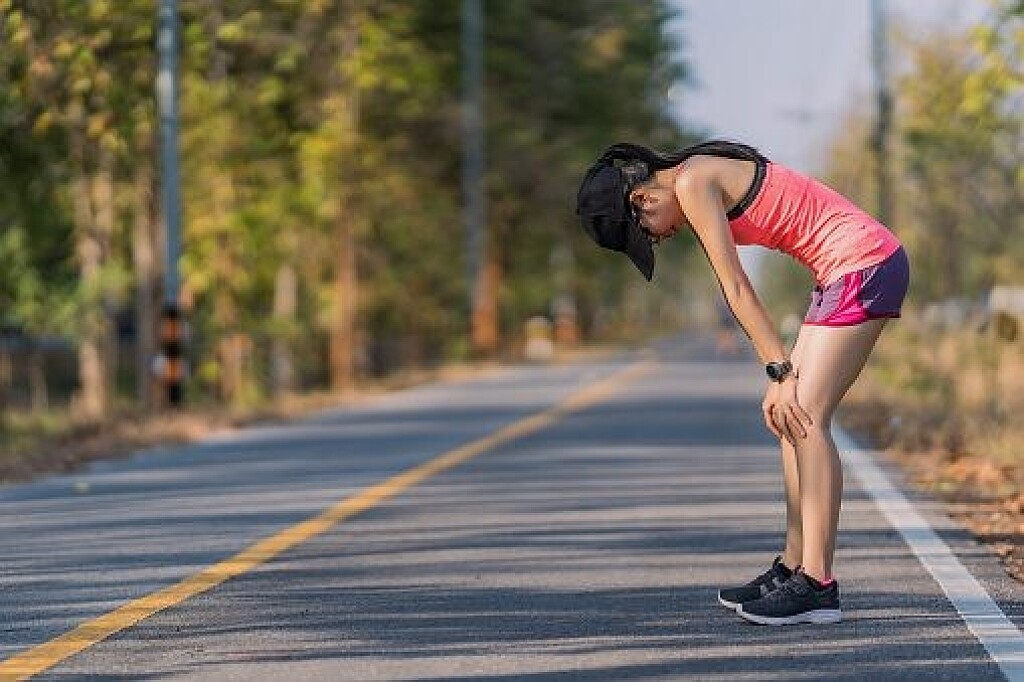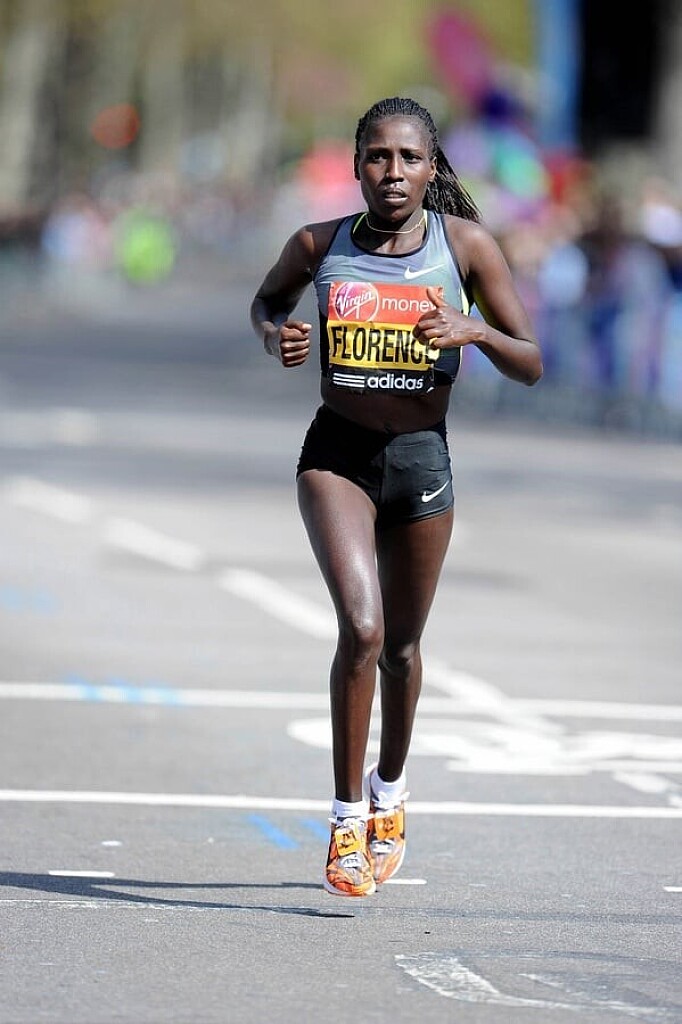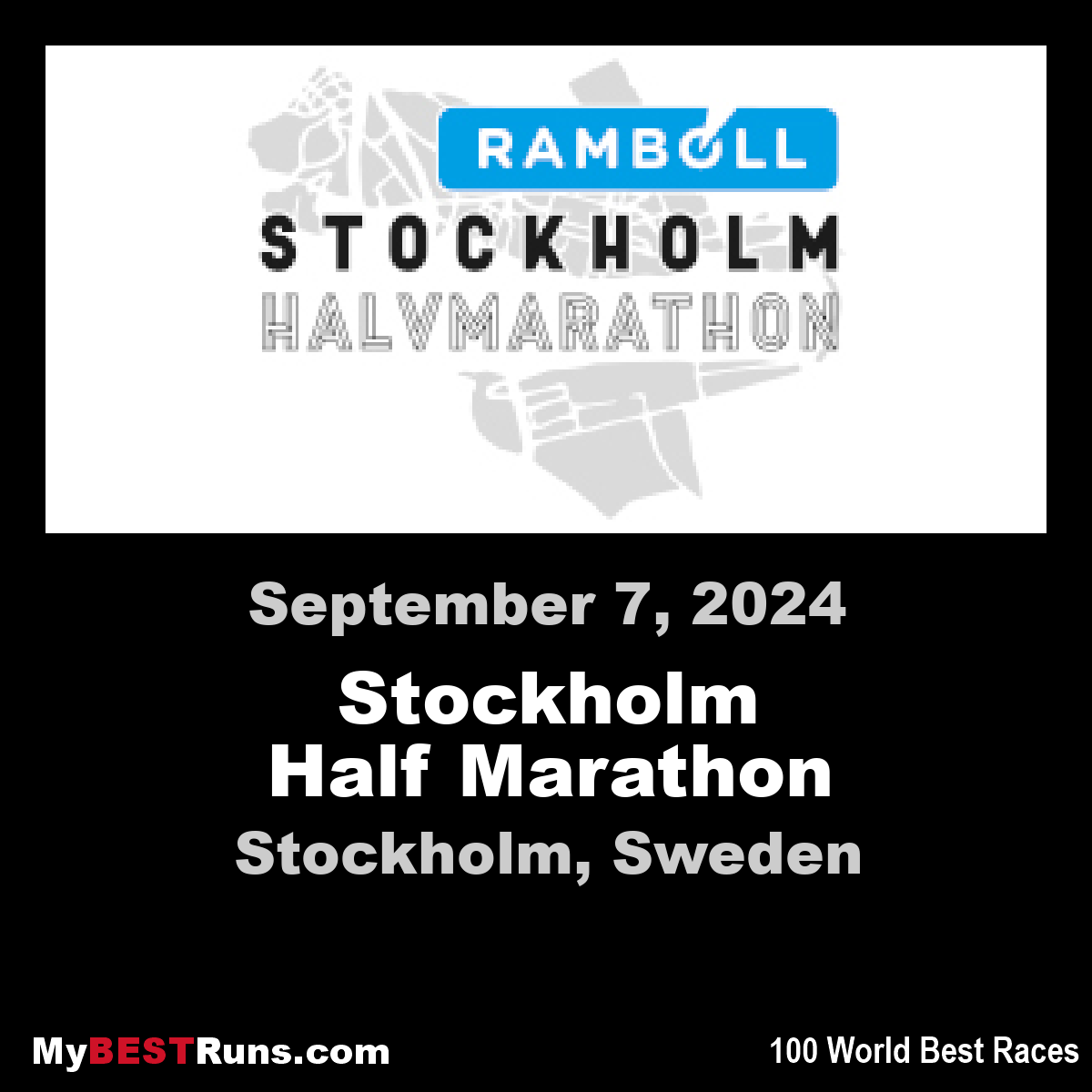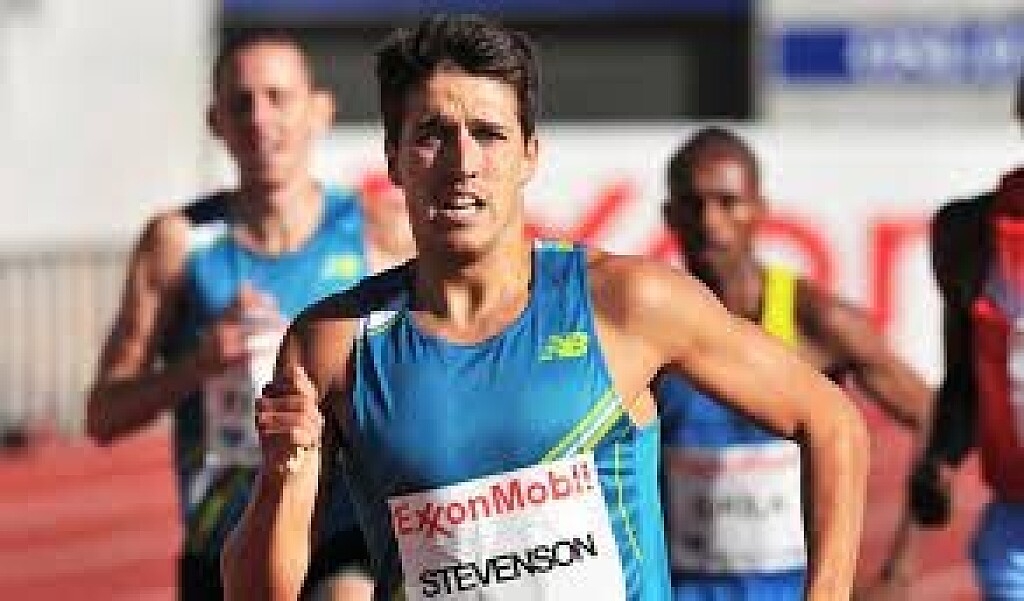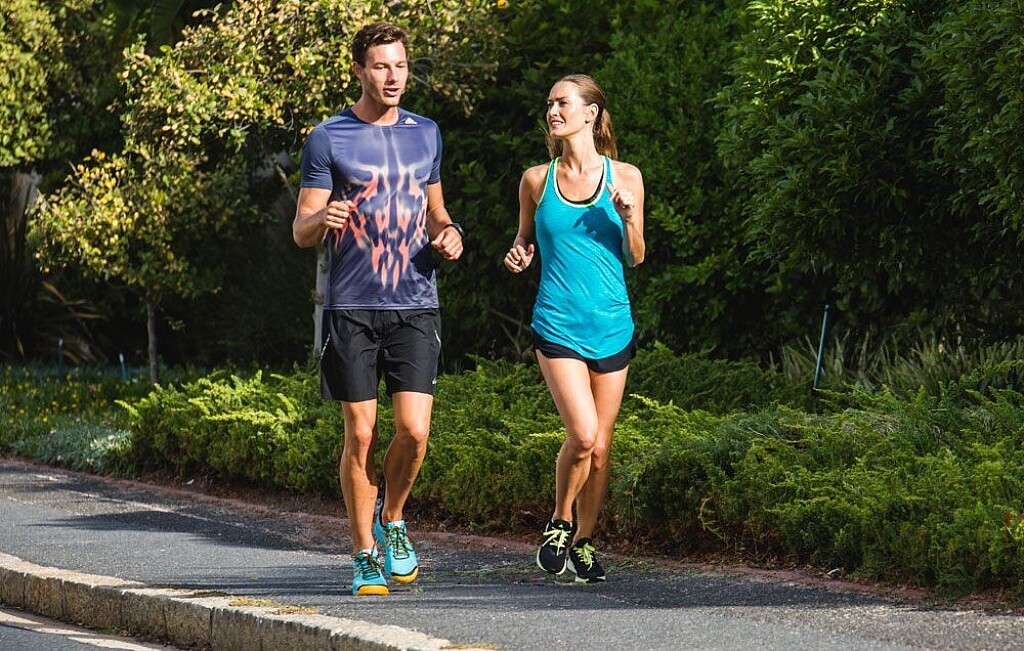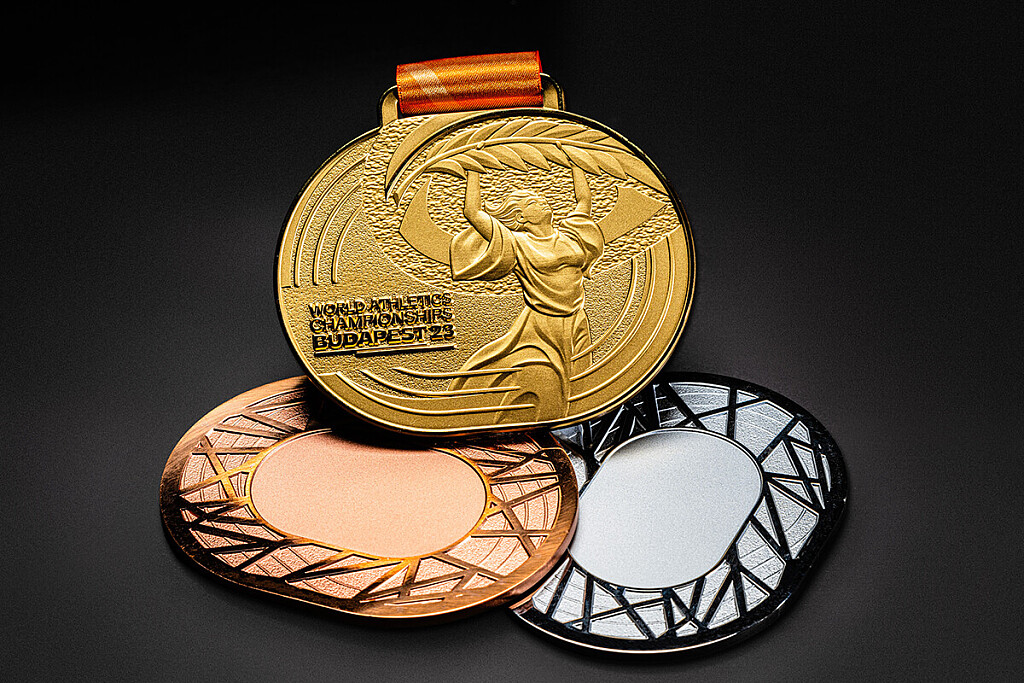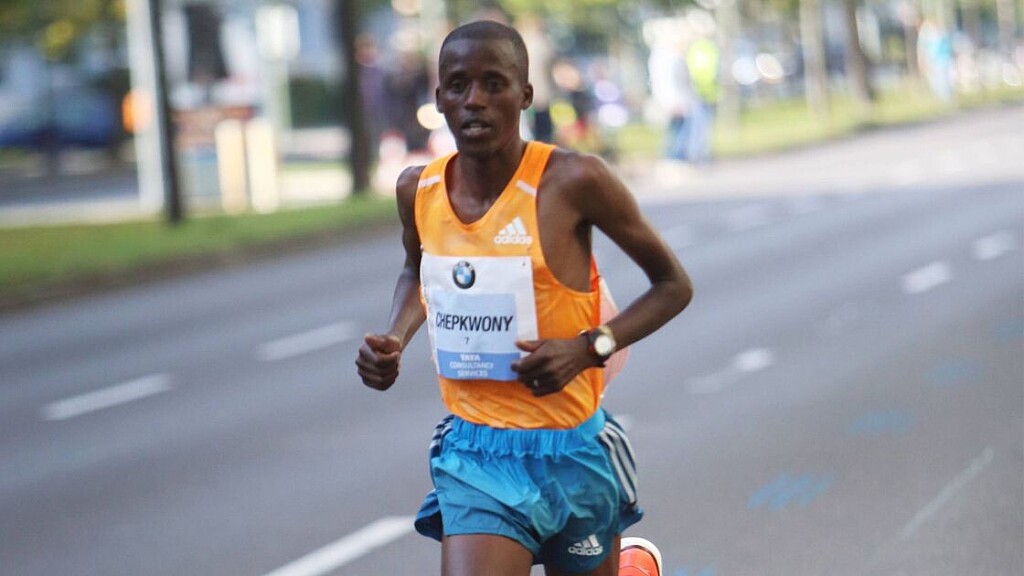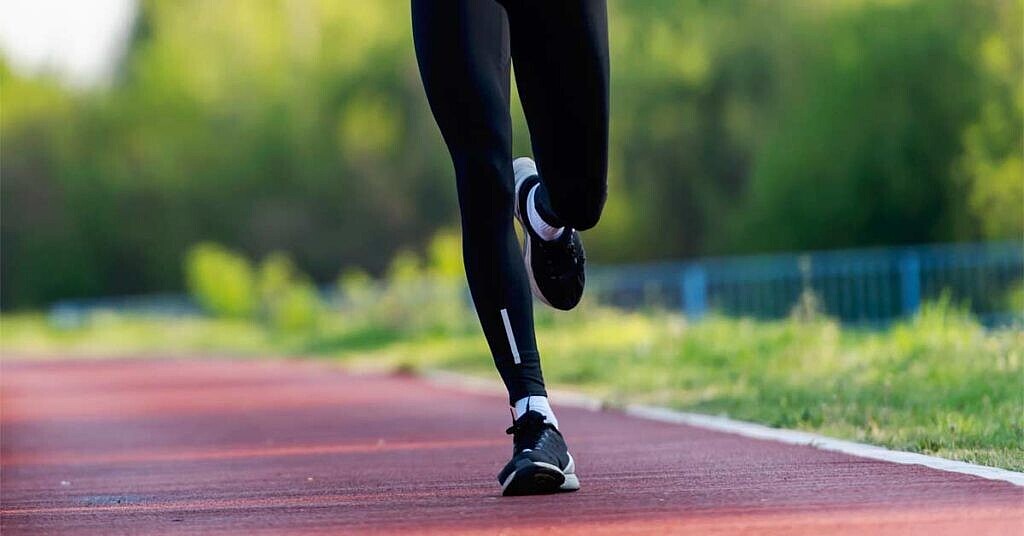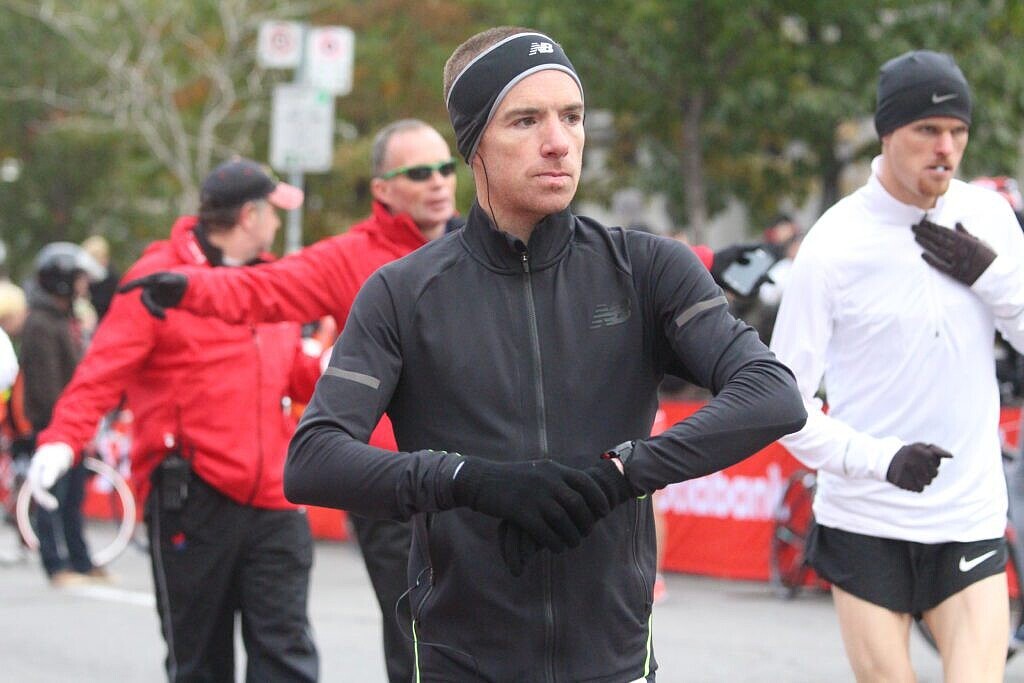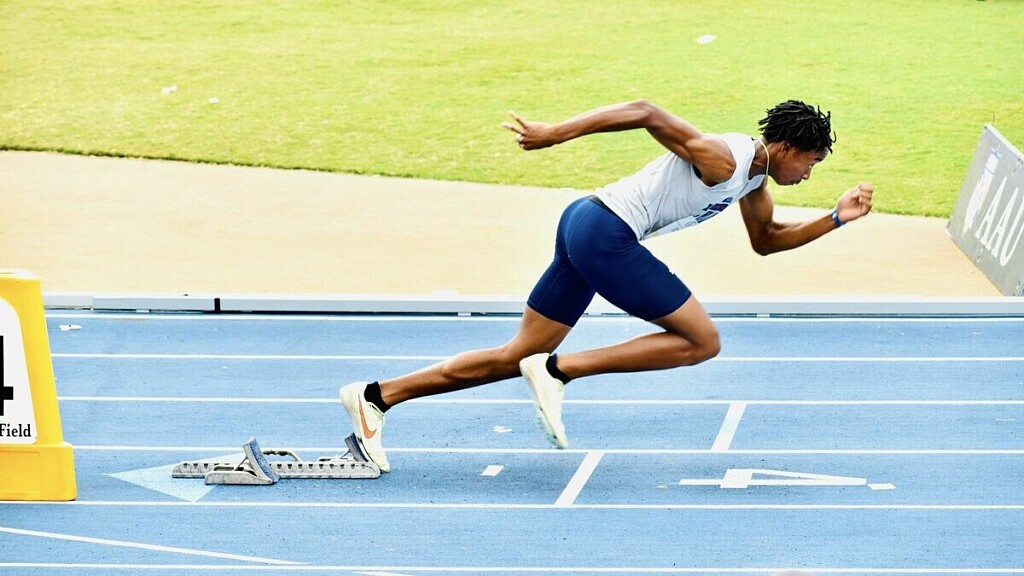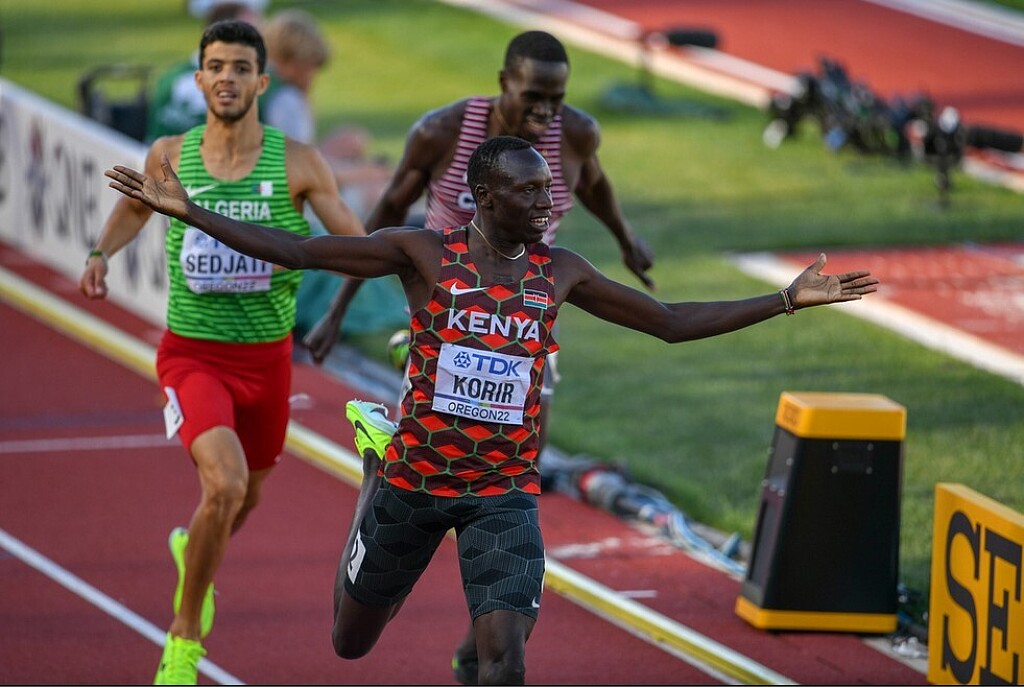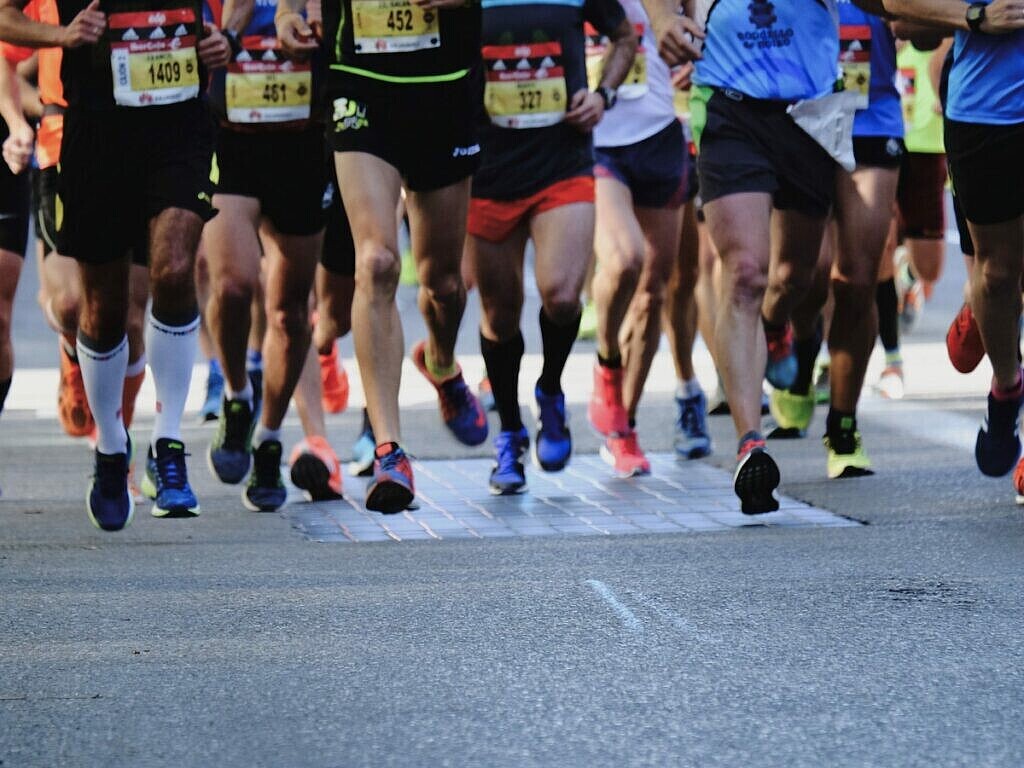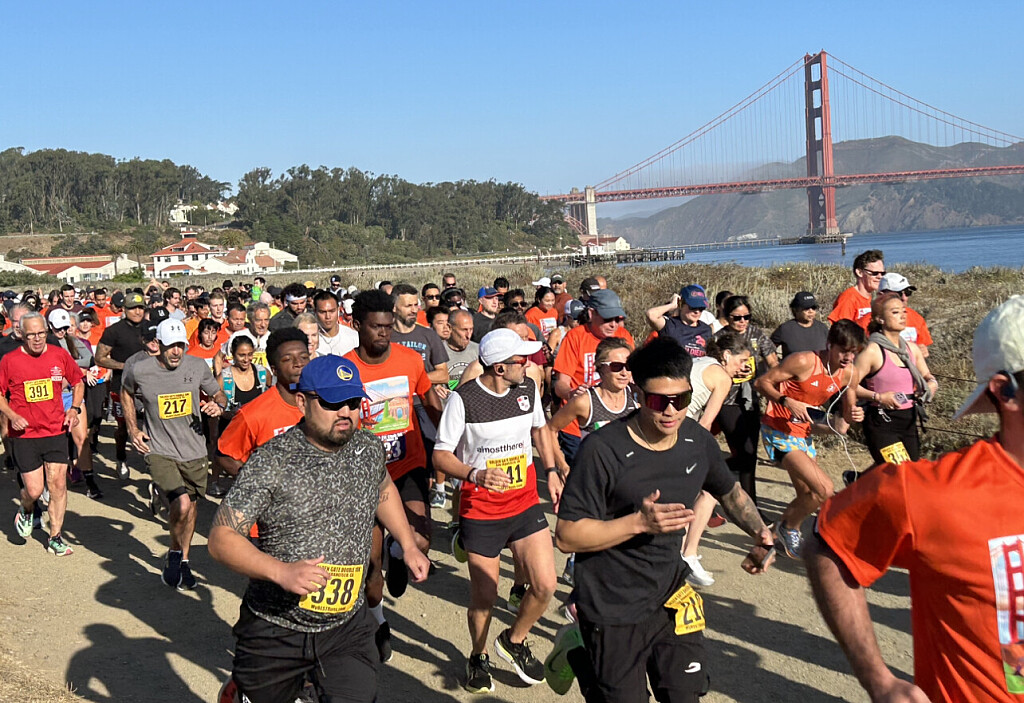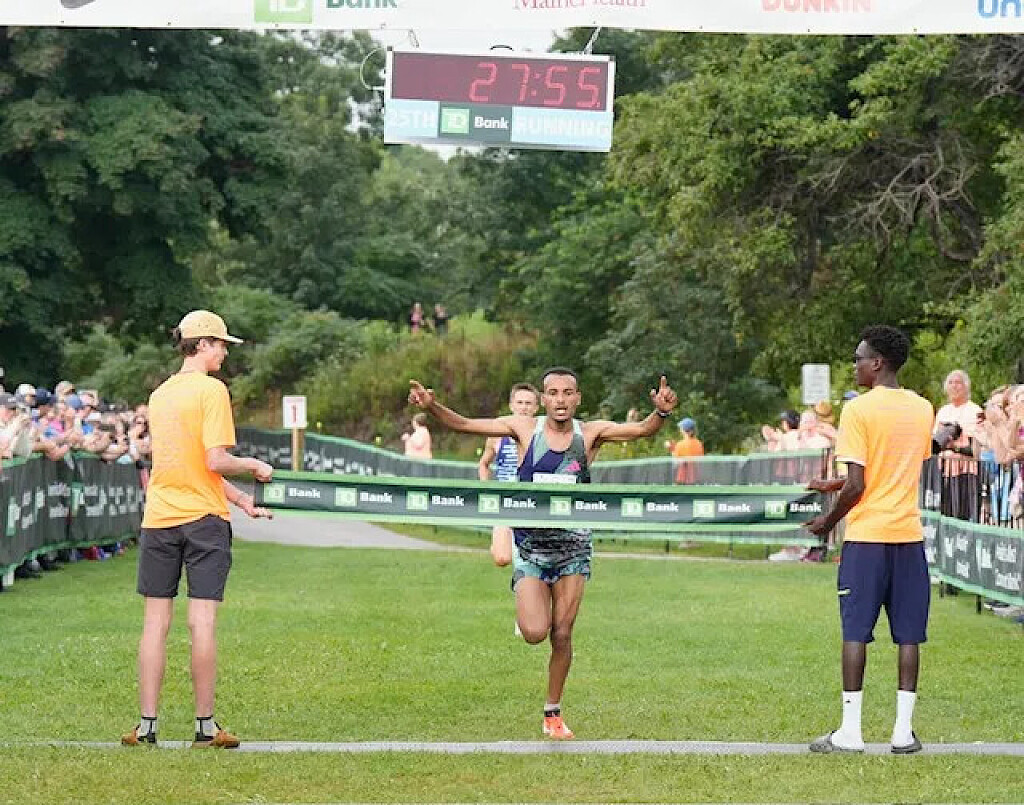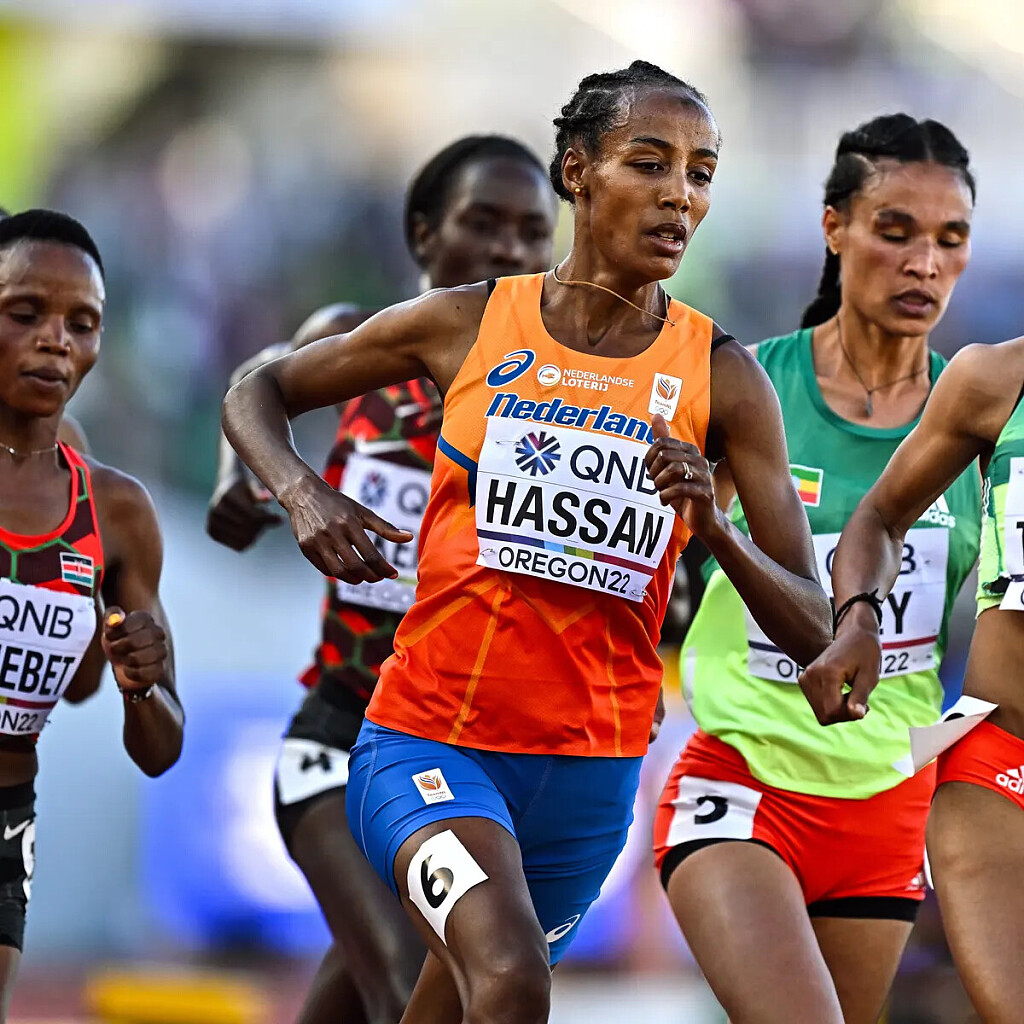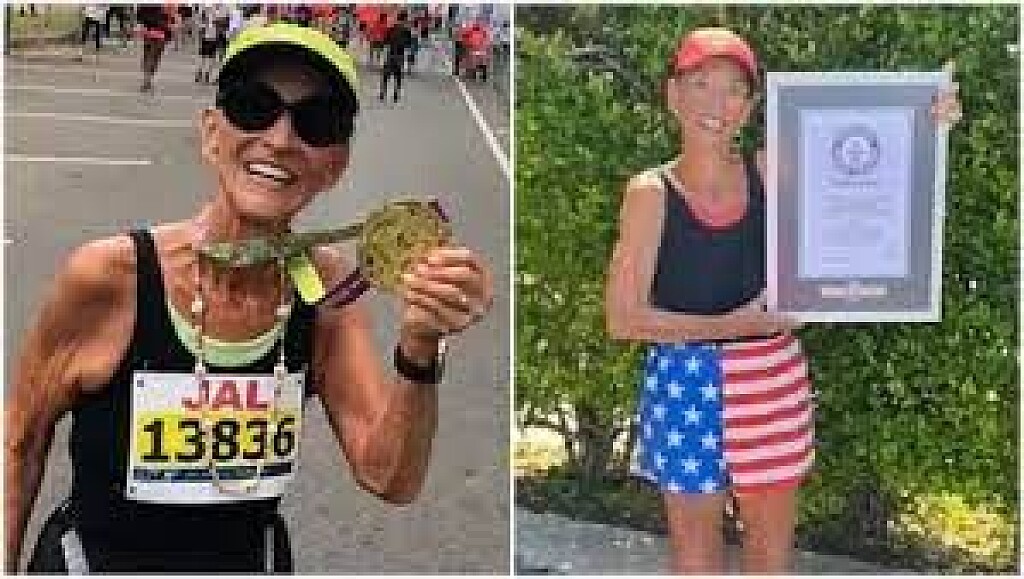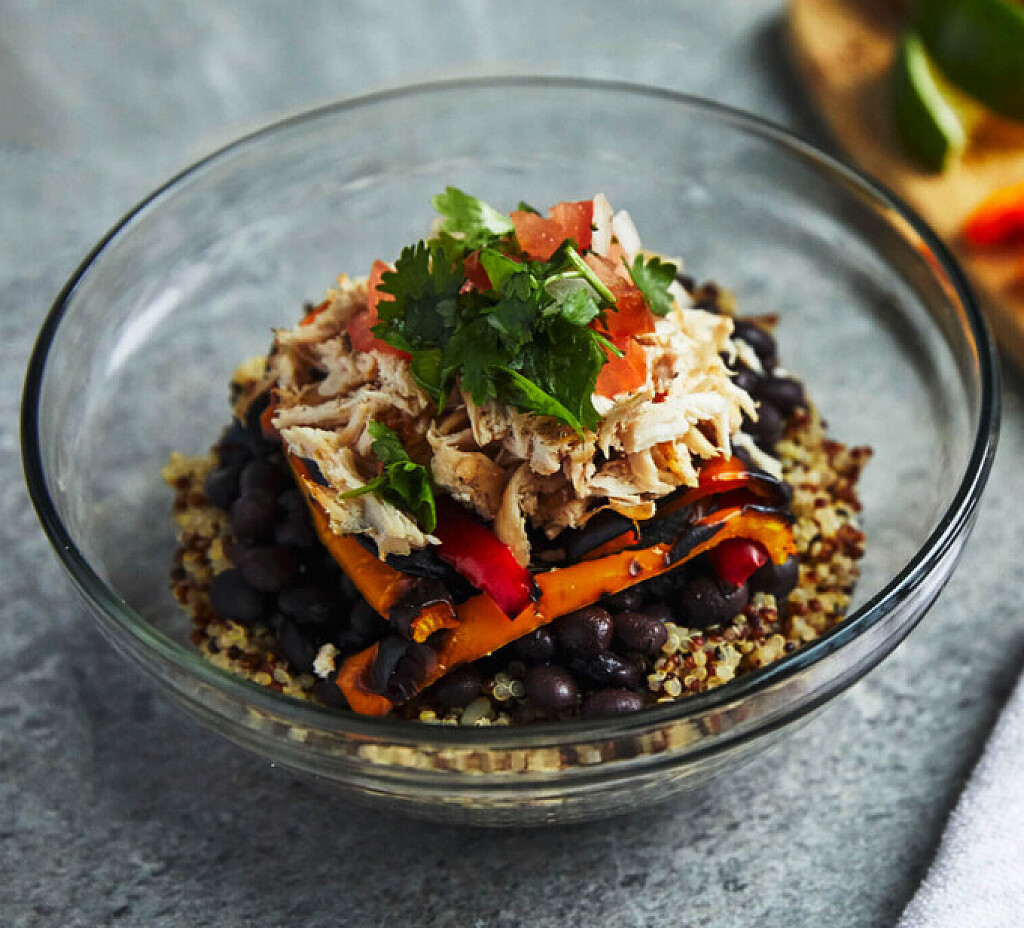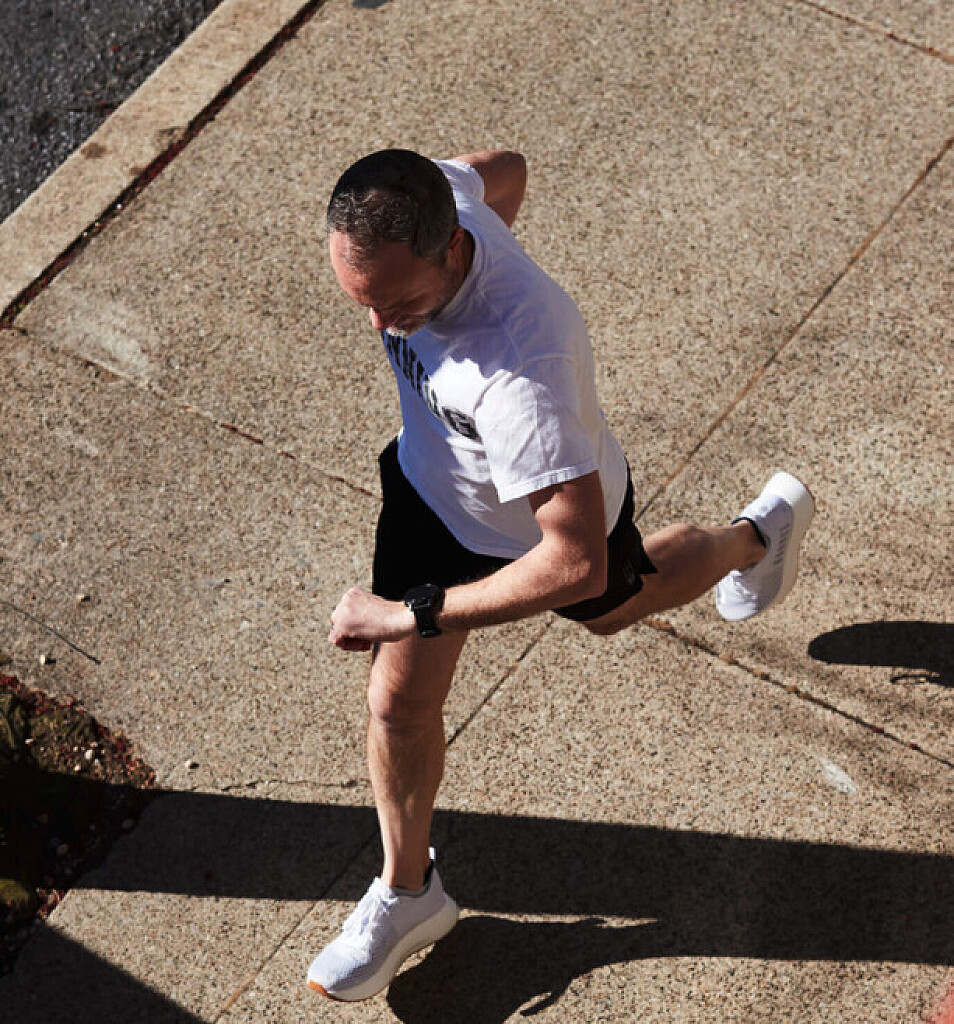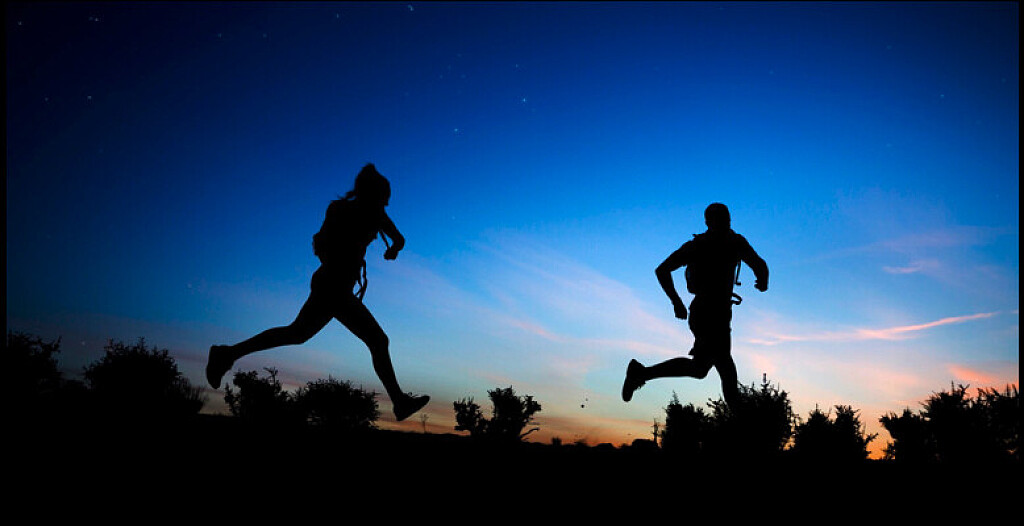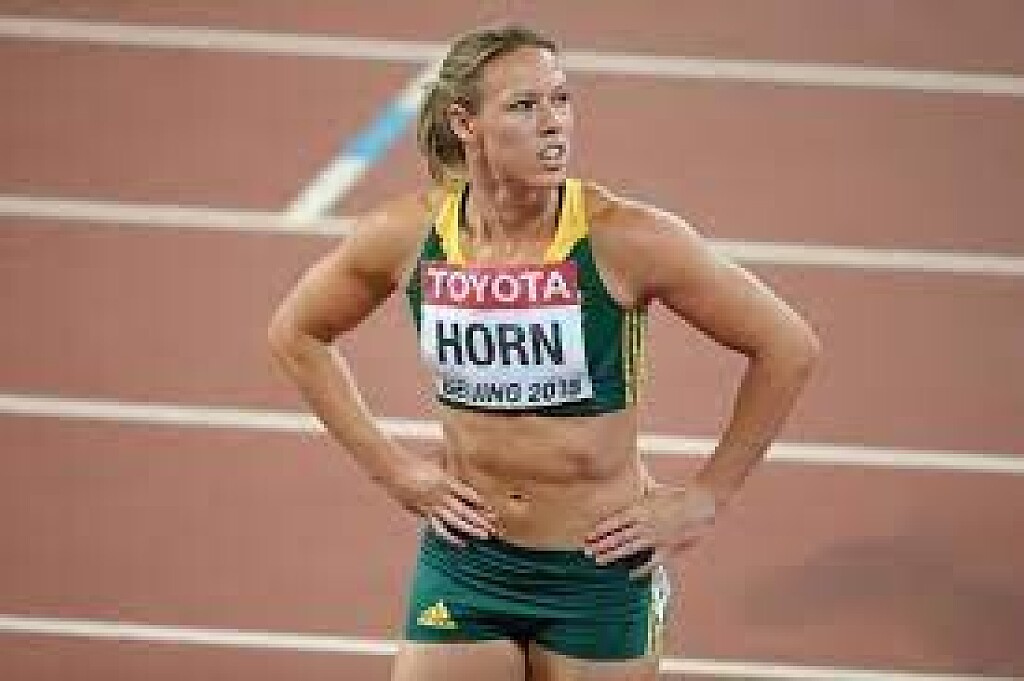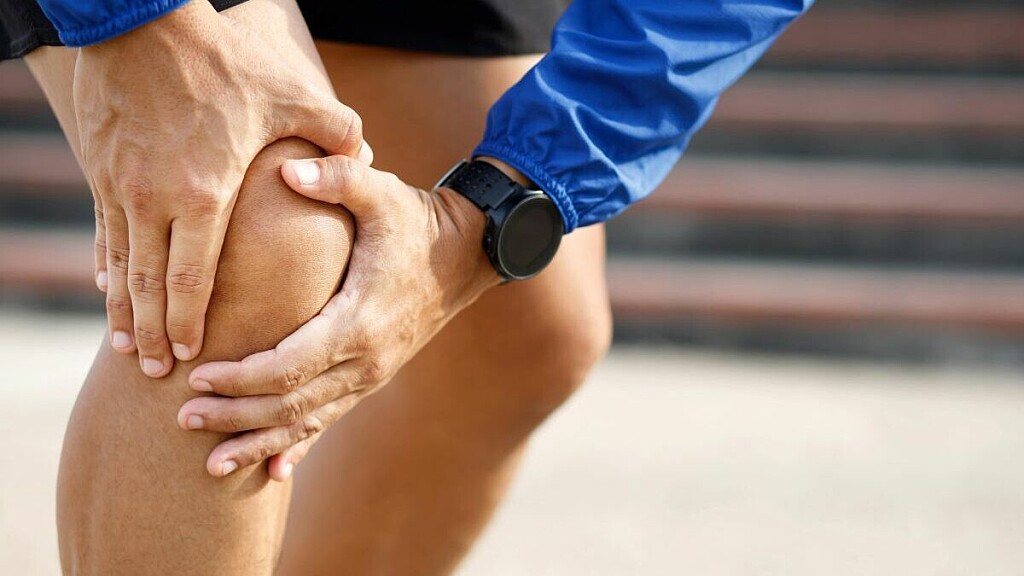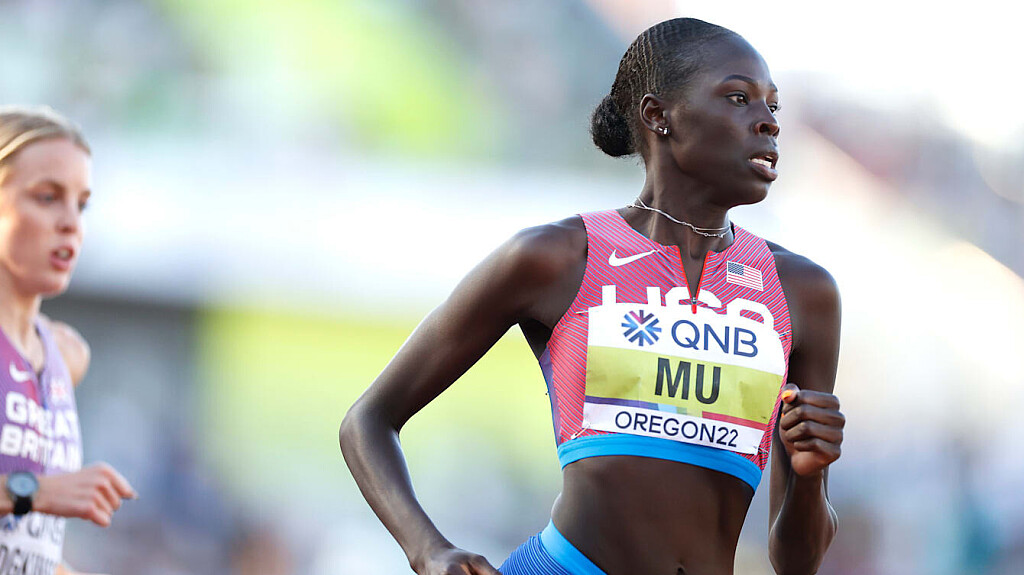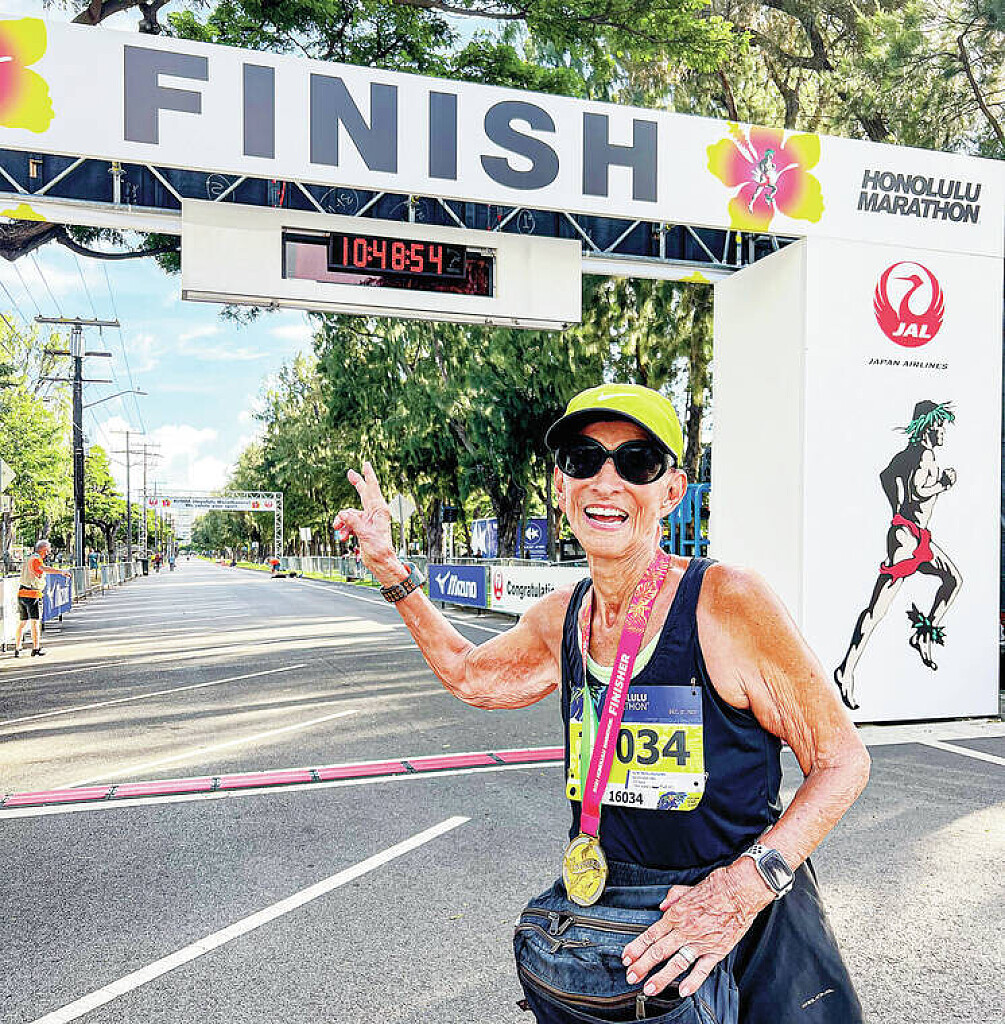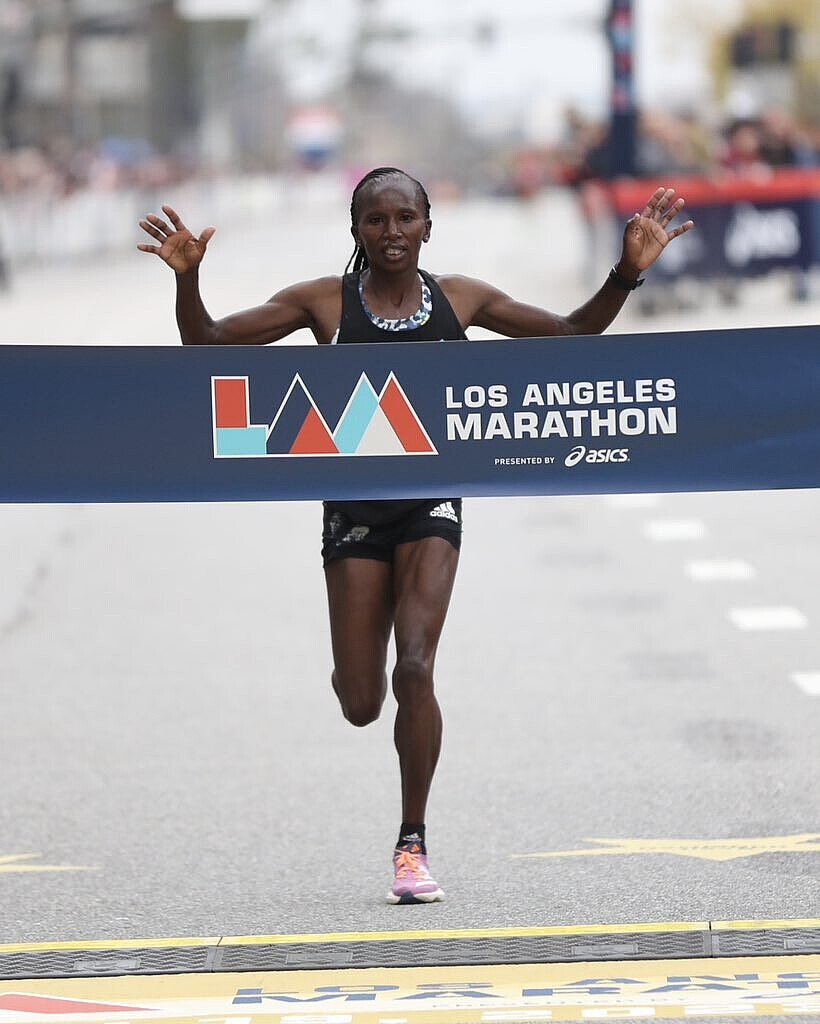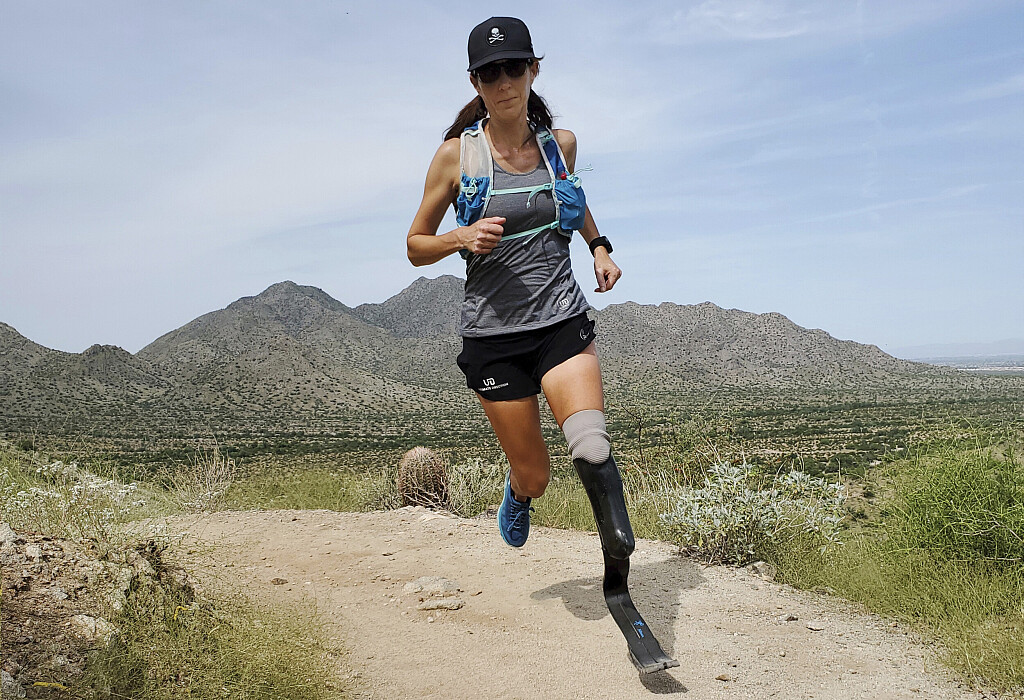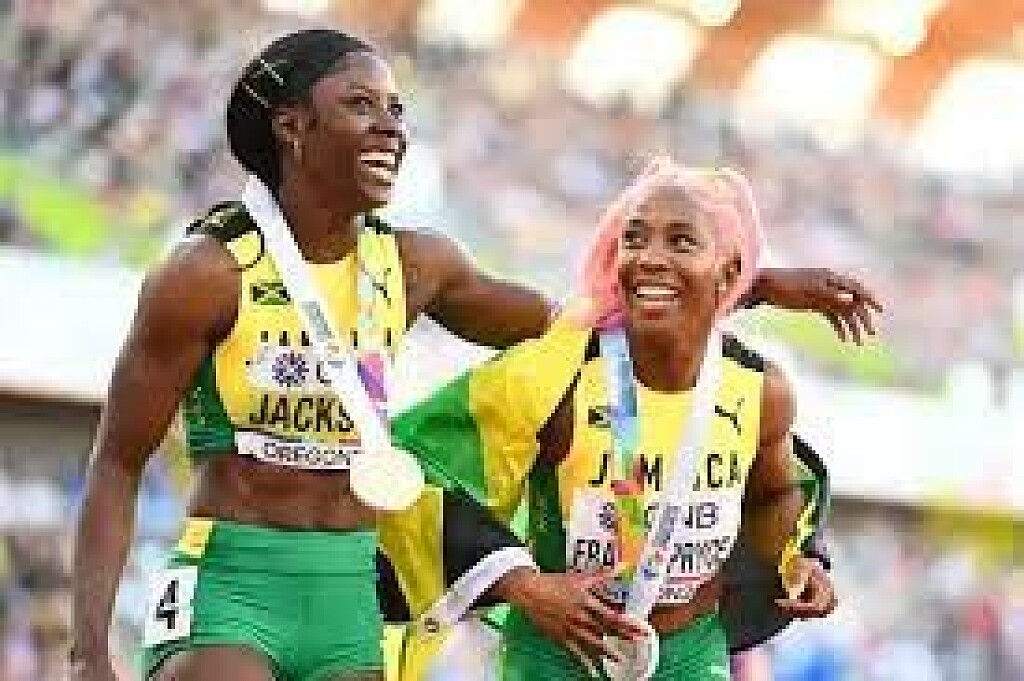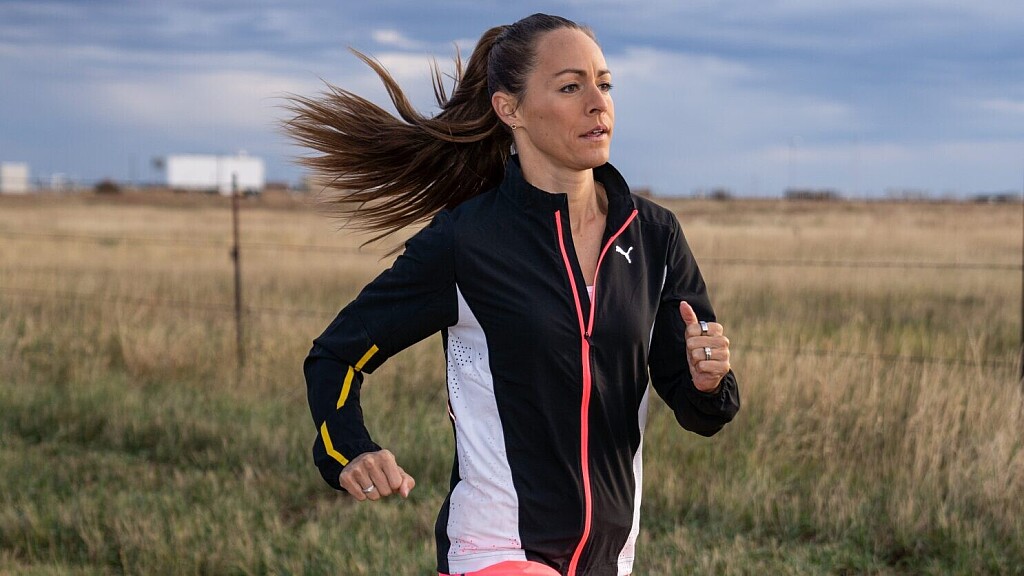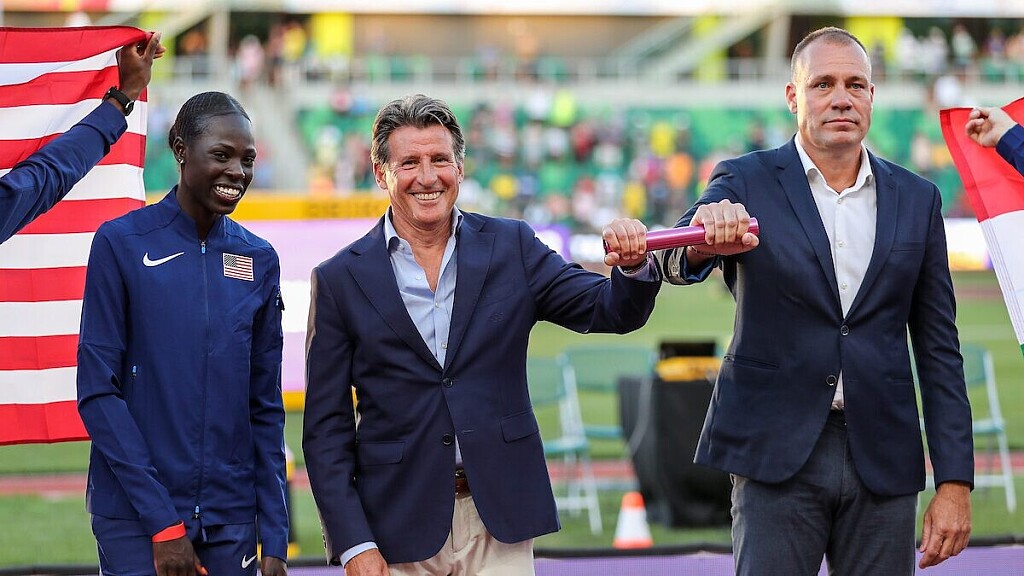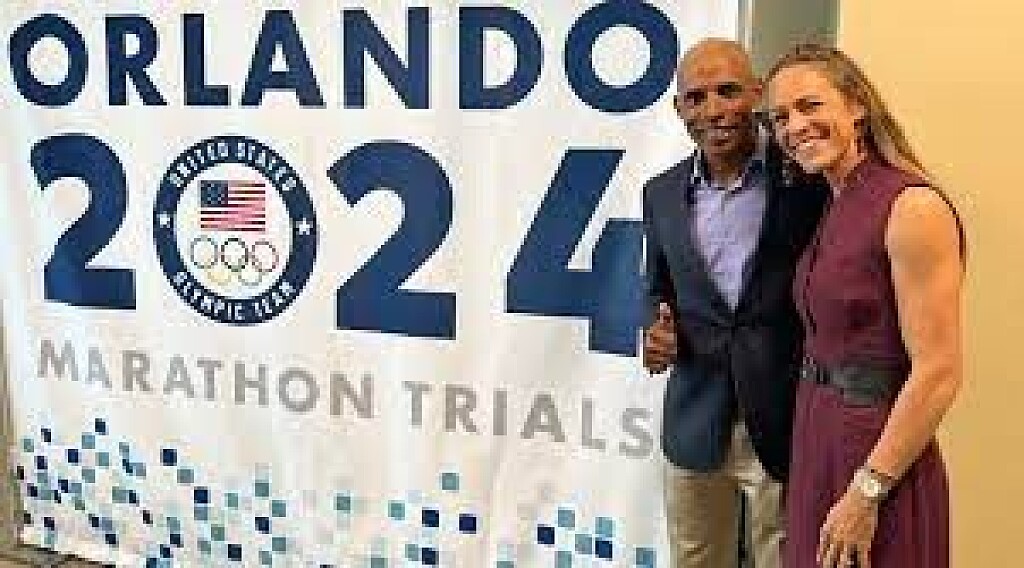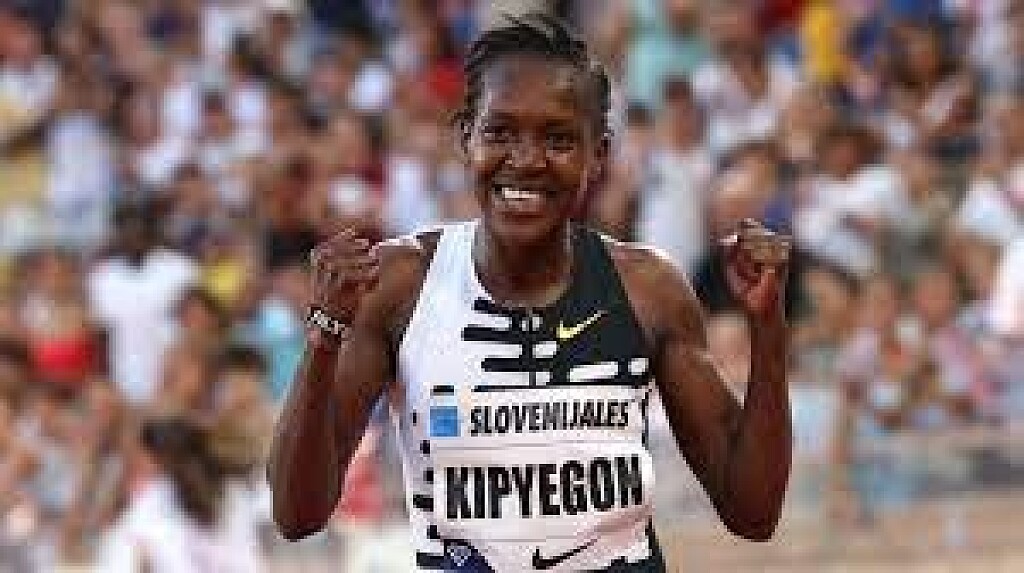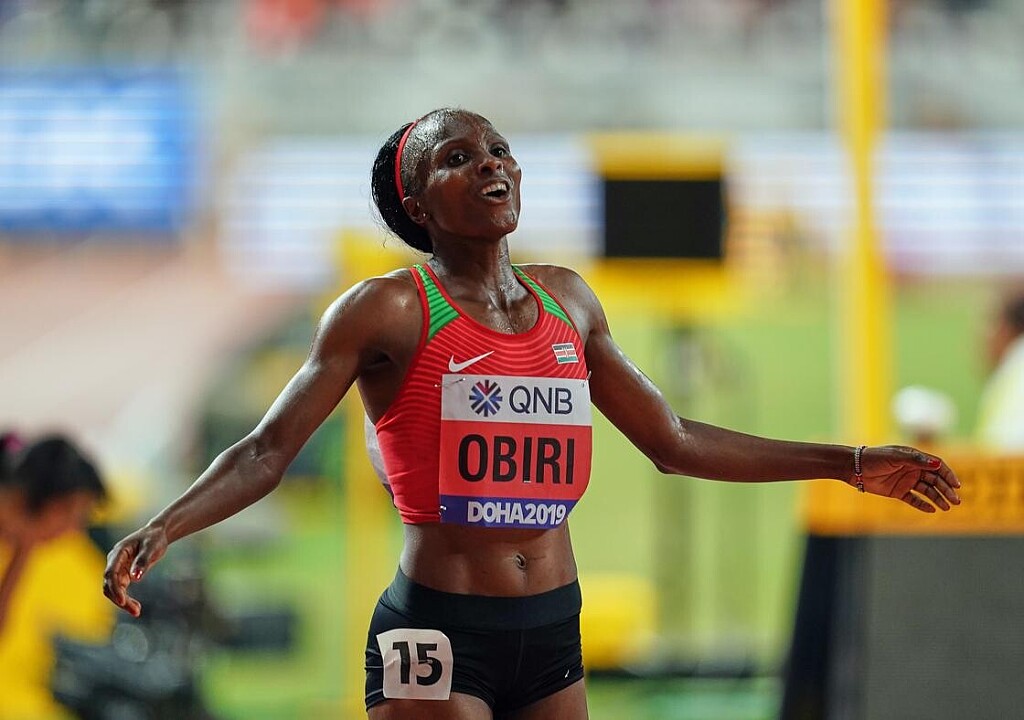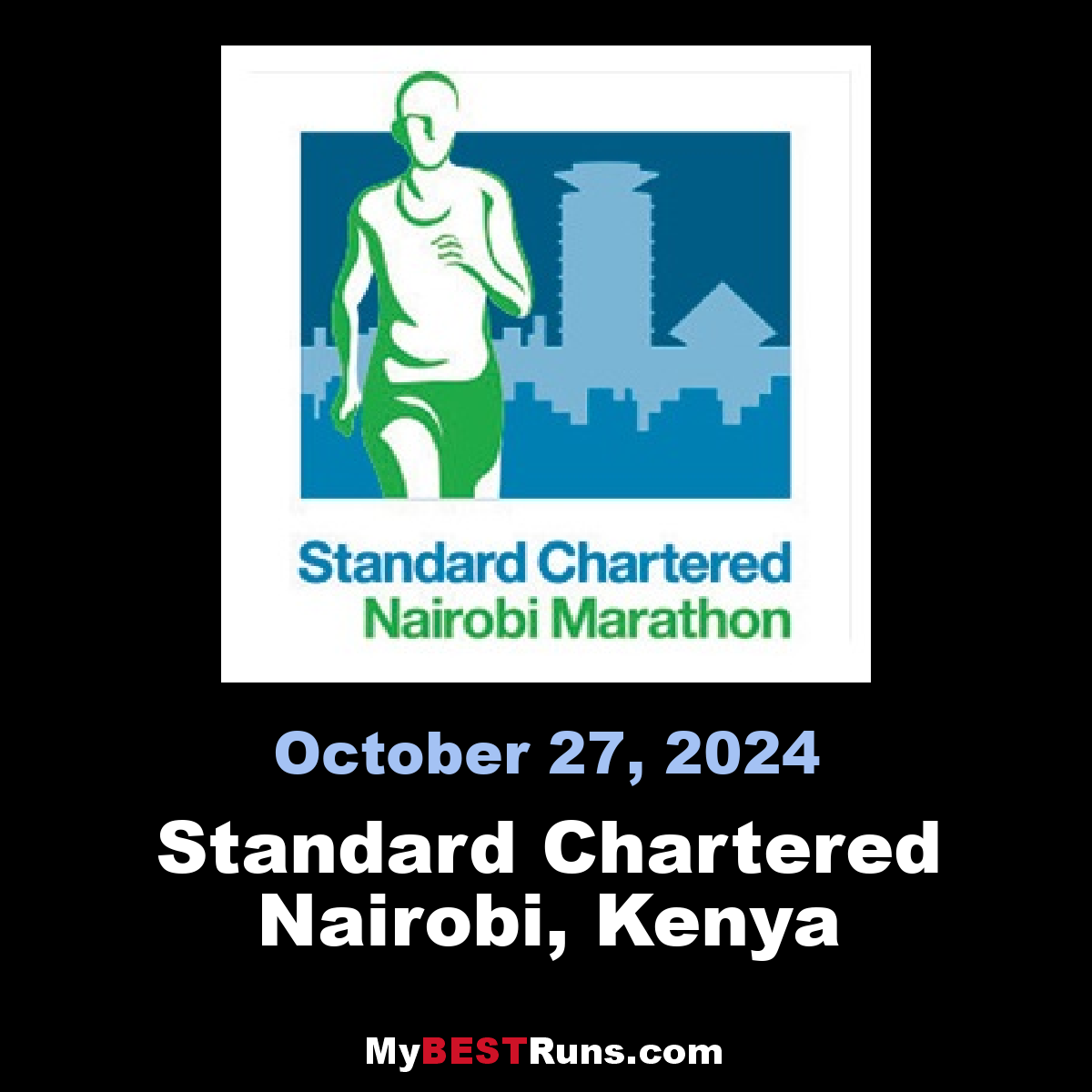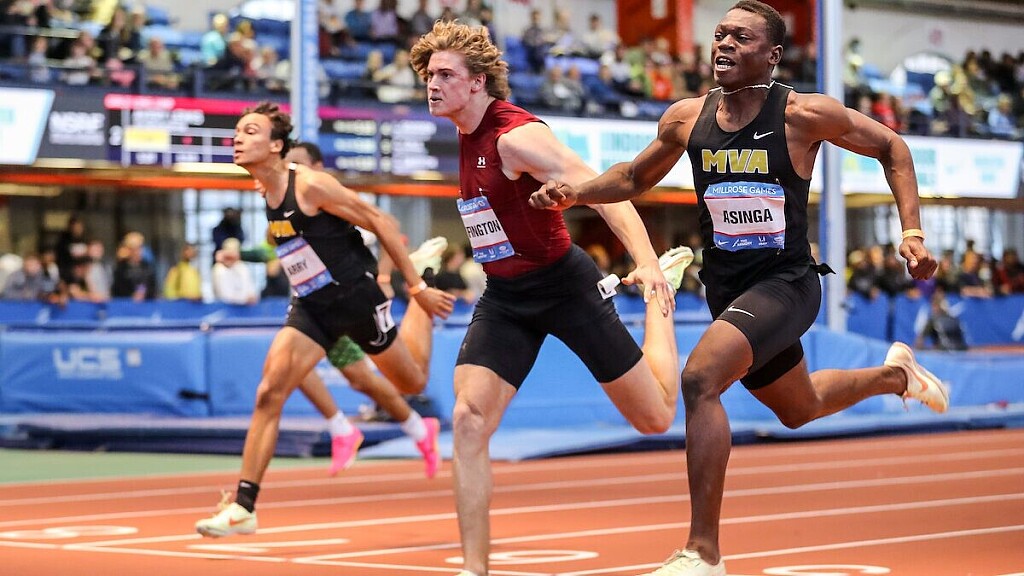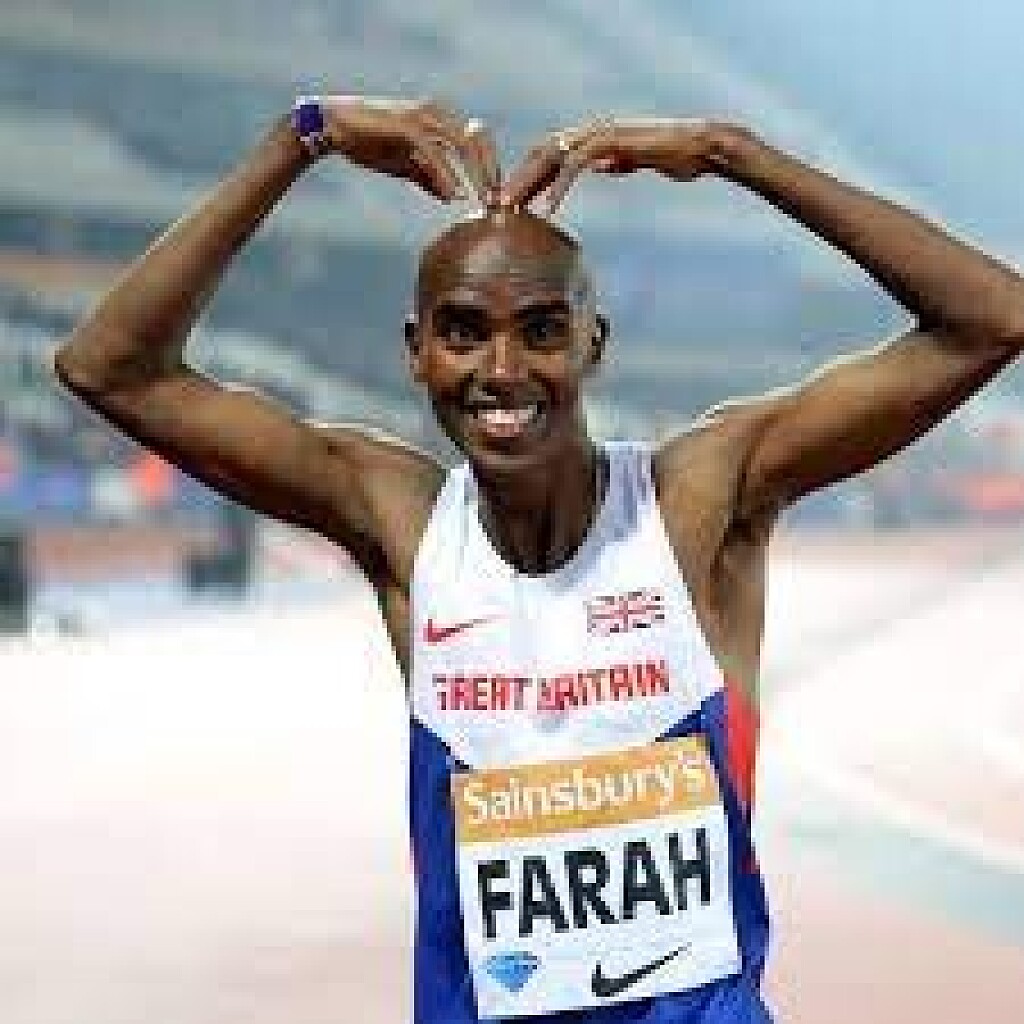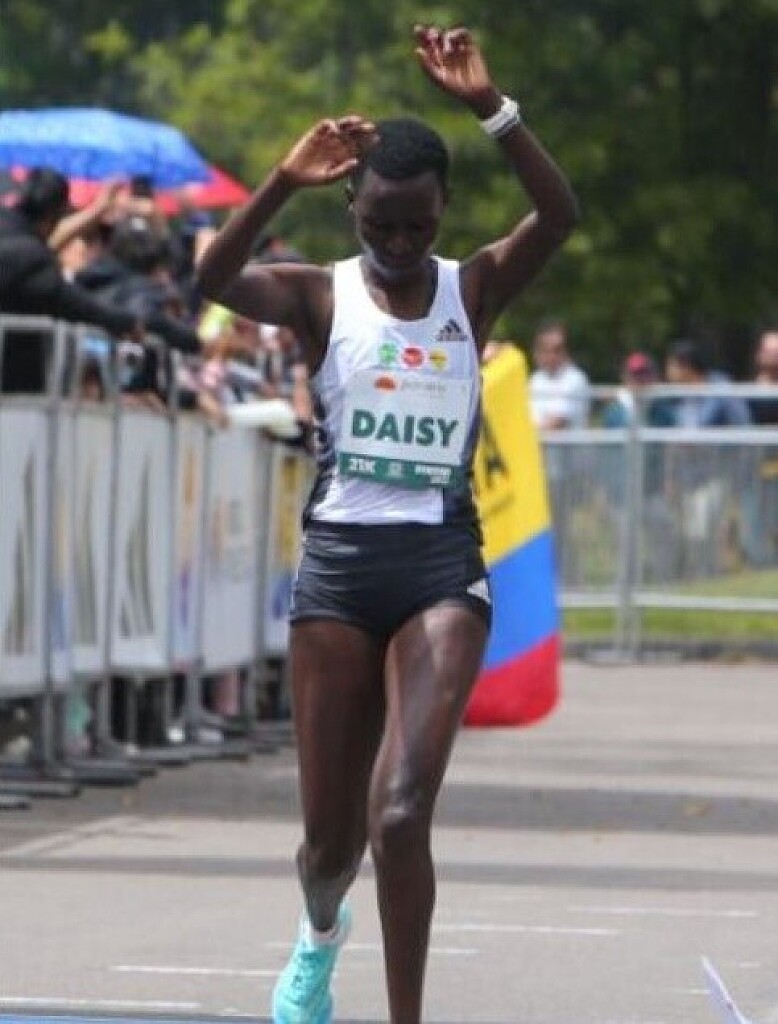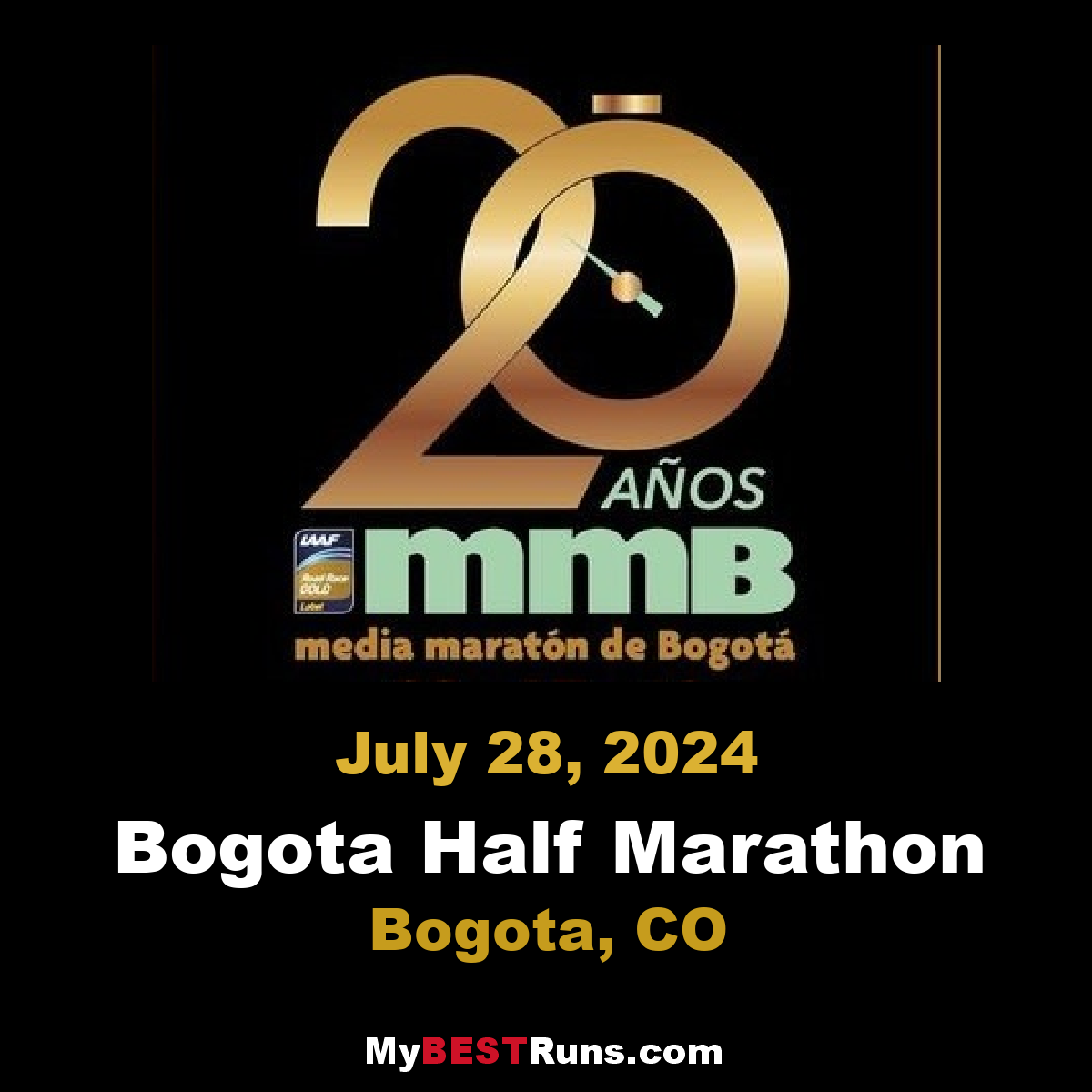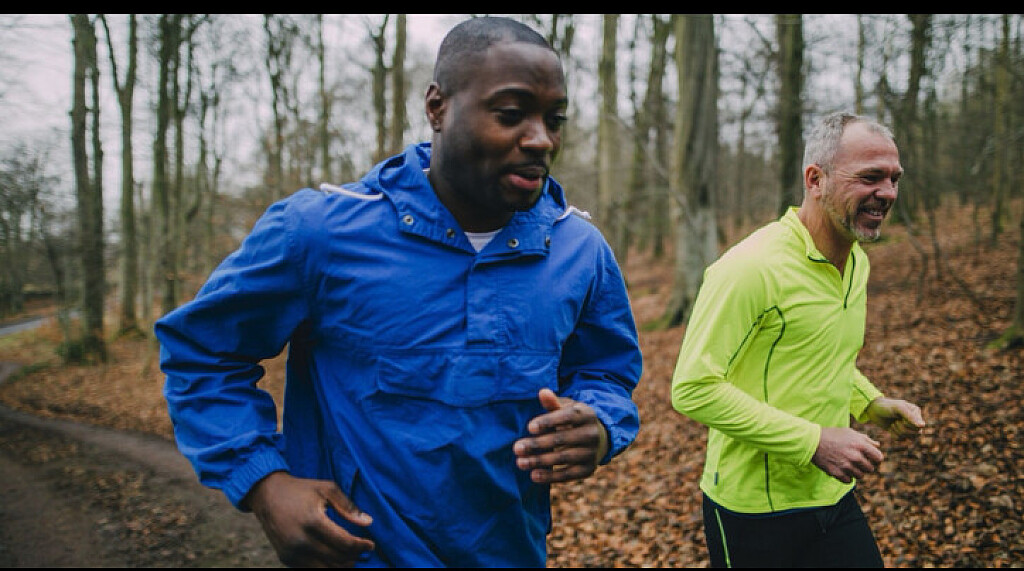Running News Daily
Running News Daily is edited by Bob Anderson. Send your news items to bob@mybestruns.com Advertising opportunities available. Train the Kenyan Way at KATA Kenya and Portugal owned and operated by Bob Anderson. Be sure to catch our movie A Long Run the movie KATA Running Camps and KATA Potato Farms - 31 now open in Kenya! https://kata.ke/
Index to Daily Posts · Sign Up For Updates · Run The World Feed
Obiri, Sisson to Face Off in ASICS Falmouth Road Race
Two high-profile and highly-competitive women in distance running will headline the international elite field at next week’s ASICS Falmouth Road Race. Hellen Obiri and Emily Sisson, both making their Falmouth debut, will face off on the roads for the third time this year when they line up for the seven-mile race on Sunday, Aug. 20.
This year, Obiri has won half marathons in the United Arab Emirates and New York City before winning the Boston Marathon in April. Since her Boston victory, Obiri has also won the B.A.A 10K and was runner-up in the Mastercard New York Mini 10K. Last weekend, she won the Beach to Beacon 10K in Maine.
“The roads and the people of Massachusetts have been good to me so far this year,” said Obiri, a two-time world champion and two-time Olympic silver medalist for Kenya. “I know it will not be easy, but I hope I can keep my record going. It will be nice to test myself before I get back into my preparations for an autumn marathon.”
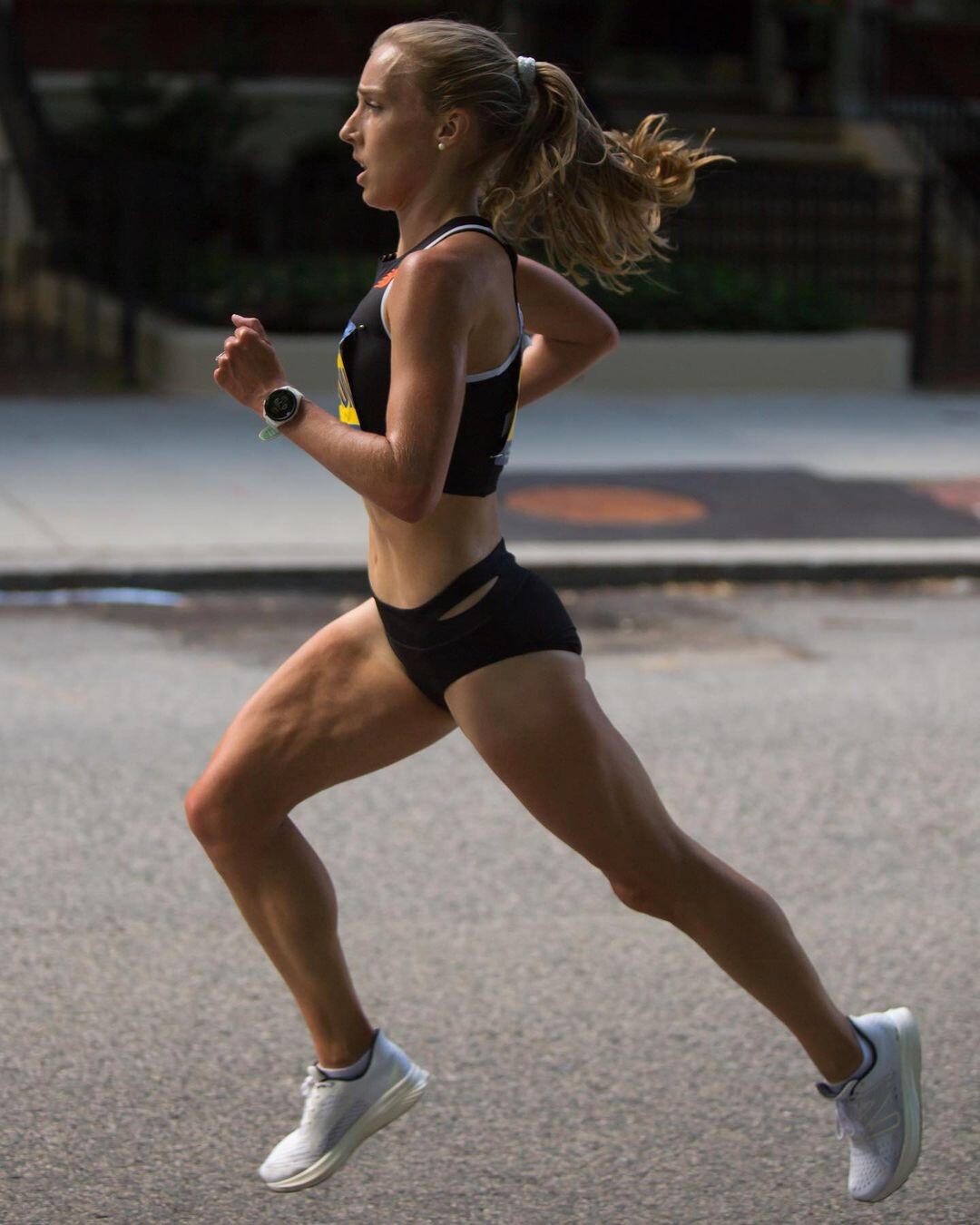
For Sisson, Falmouth is part of the build up to this fall’s Bank of America Chicago Marathon where she will attempt to lower her own American record of 2:18:29 in the event. This past January, she also set the American record in the half-marathon (since broken by Kiera D’Amato) and won the USATF 15km title for the third consecutive year.
“I have not had the chance to race Falmouth before, but I have wanted to ever since I started spending summers in New England,” said Sisson, a graduate of Providence College. “I’m excited for my first Falmouth Road Race to be in the build up to Chicago. I cannot wait to line up in a few weeks time!”
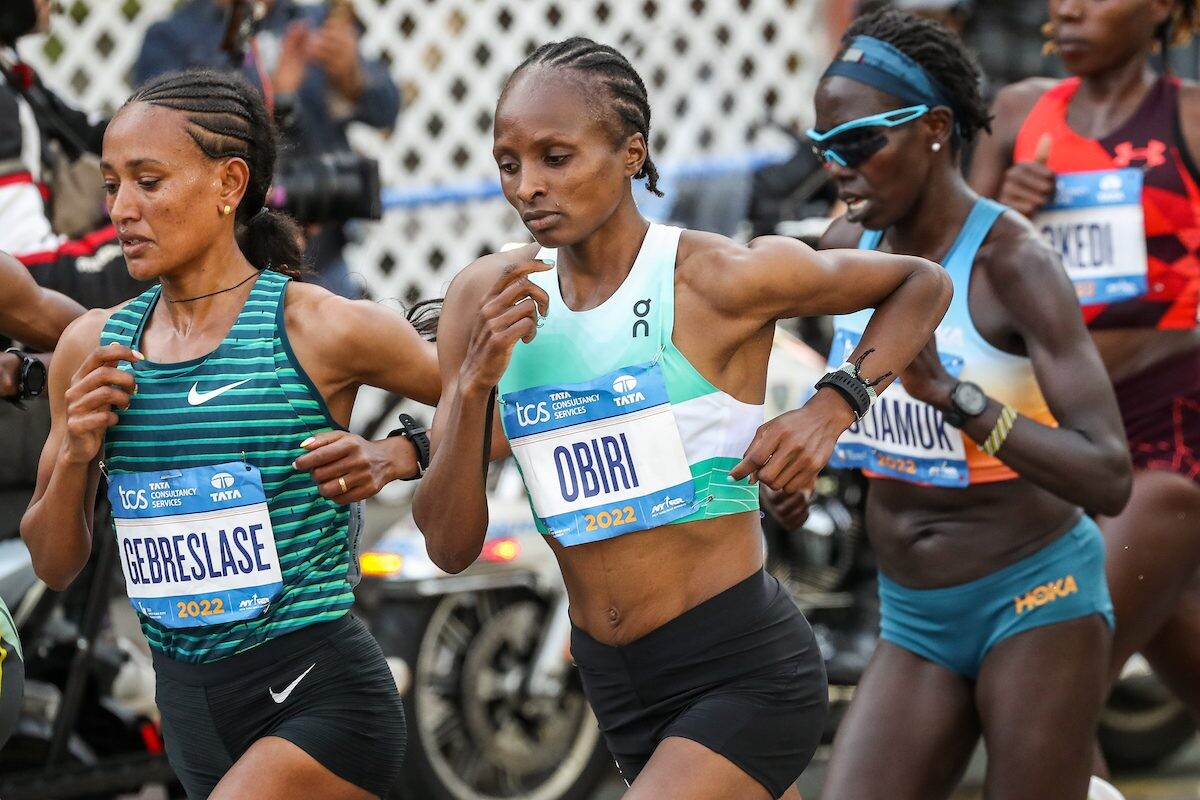
Other top contenders include 2021 Falmouth champion and last year’s runner-up Edna Kiplagat, U.S. 5K Champion Weini Kelati and reigning U.S. 10 Mile champion Fiona O’Keeffe.
Fresh off a victory at last week’s Beach to Beacon 10K in Maine, Addisu Yihune will attempt back-to-back New England wins. The 20-year-old Ethiopian leads the men’s field.
Last year’s third place finisher, David Bett is returning in 2023. Other contenders include 2022 Los Angeles Marathon champion John Korir, two-time Pittsburgh Half Marathon winner Wesley Kiptoo and 2019 NCAA Cross Country Champion Edwin Kurgat.
In the Wheelchair Division, sponsored by Spaulding Rehabilitation, Daniel Romachuk, who set the course record in 2019, will chase his fifth Falmouth win. He championed last year’s race by three and a half minutes over Hermin Garic, the 2021 Falmouth winner who is also returning this year.
In the women’s race, 2022 champion and course record holder Susannah Scaroni will defend her title. Scaroni has dominated the road circuit in 2023 winning the Boston Marathon, New York Mini 10K and AJC Peachtree Road Race in Atlanta. Scaroni will face 2021 women’s champion Emelia Perry and 2022 third place finisher Yen Hoang who won the B.A.A. 10K earlier this year.
The 51st running of the ASICS Falmouth Road Race is the culmination of an entire weekend of running that kicks off with the Falmouth Elite Mile, held this year on Friday evening for the first time. The women’s field is led by former Oregon standout Susan Ejore of Kenya and three-time NCAA Champion Dani Jones. It also includes Belmont, Massachusetts high school phenom Ellie Shea.
The men’s race will welcome the deepest men’s field in its history. Olympic gold medalist Matthew Centrowitz will make his first trip to Falmouth to toe the start line with some of the nation’s top middle-distance runners. Past winner Craig Engels also returns this year as does Seekonk, MA native Johnny Gregorek, a World Championship qualifier who won the Guardian Mile in Cleveland last month and Vince Ciattei who won last weekend’s Beale Street Mile in Memphis.
In the Wheelchair division, both Romanchuk and Garic will also compete as will Scaroni, Perry and Hoang in the women’s race.
“From the track to the roads, there is going to be exciting racing to witness all weekend in Falmouth,” said Jennifer Edwards, Executive Director of Falmouth Road Race, Inc. “It’s an honor to welcome so many legends and future legends of the sport who will lead our field of 10,000 to the finish line.”
The Falmouth Track Festival which includes the Falmouth Elite Mile will be held at 7 p.m. Friday, Aug. 18 at Falmouth High School. The ASICS Falmouth Road Race gets underway at 9 a.m. on Sunday, Aug. 20 with athletes running the traditional course starting in Woods Hole and ending at Falmouth Heights Beach.
(08/11/2023) ⚡AMPFalmouth Road Race
The Falmouth Road Race was established in 1973 and has become one of the premier running events of the summer season. Each year the race draws an international field of Olympians, elite runners and recreational runners out to enjoy the scenic 7-mile seaside course. The non-profit Falmouth Road Race organization is dedicated to promoting health and fitness for all in...
more...Registration for 128th Boston Marathon presented by Bank of America Begins September 11
With nearly one month to go until registration opens for the 128th Boston Marathon presented by Bank of America, the Boston Athletic Association reminds athletes of what to expect during registration week, September 11-15. The 128th Boston Marathon will feature a field size of 30,000 athletes and will mark the first Boston Marathon with Bank of America as presenting partner.
REGISTRATION TIMETABLE
Qualifier registration will open on Monday, September 11 at 10:00 a.m. ET and will close on Friday, September 15, 2023, at 5:00 p.m. ET. The B.A.A. will use the same registration process for qualified runners as it used for the 2021, 2022, and 2023 races, allowing any athlete who has achieved a currently valid Boston Marathon qualifying time to submit a registration application during Registration Week, September 11–15.
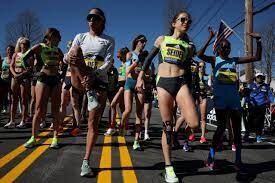
Registration will be held within the B.A.A.’s online platform Athletes' Village. Registration is not on a first-come, first-served basis – all applications will be accepted until 5:00 p.m. ET on Friday, September 15 and treated in the same manor regardless of when they are submitted during the application period.
PRE-VERIFY YOUR QUALIFYING TIME
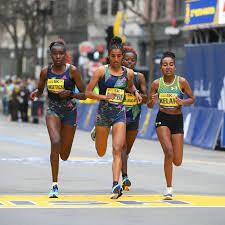
To enhance the Boston Marathon registration experience, the B.A.A. is offering a special pre-verification period for 128th Boston Marathon qualifying times. Athletes who plan to register for the 128th Boston Marathon between September 11-15 may take part in this pre-verification, helping to expedite their registration application in September.
Please note that verifying a qualifying time during the pre-verification period does not enter you in the Boston Marathon. Rather, it simply allows us to confirm and verify one’s qualifying time early so that when applying between September 11-15, the athlete’s qualifying information is already in our system.
Pre-verification submission is open within Athletes’ Village through August 23. Additional information is available here.
QUALIFYING WINDOW & STANDARDS
The 2024 Boston Marathon qualifying window began on September 1, 2022, and will close at 5:00 p.m. ET on Friday, September 15, 2023. If space is still available after the conclusion of Registration Week, registration will re-open on Monday, September 17.
Qualifying standards for the 128th Boston Marathon can be found here. Achieving a Boston Marathon qualifying standard does not guarantee acceptance into the event. Those who are fastest among the pool of applicants in their age and gender group will be accepted.
ENTRY FEE
The entry fee for accepted qualifiers will be $230 USD for United States residents and $235 USD for international residents. Participants will have the opportunity to purchase registration insurance at the point of registration. Entry fees will only be processed once an athlete is accepted into the Boston Marathon.
129TH BOSTON MARATHON
The qualifying window for the 129th Boston Marathon, scheduled to take place on April 21, 2025, will begin on September 1, 2023. Registration details for that race will be announced following the 2024 Boston Marathon.
ABOUT THE BOSTON ATHLETIC ASSOCIATION (B.A.A.)
Established in 1887, the Boston Athletic Association is a non-profit organization with a mission of promoting a healthy lifestyle through sports, especially running. The B.A.A. manages the Boston Marathon, and supports comprehensive charity, youth, and year-round programming. The Boston Marathon is part of the Abbott World Marathon Majors, along with international marathons in Tokyo, London, Berlin, Chicago, and New York City. Starting in 2024, the Boston Marathon’s presenting partner will be Bank of America. The 128th Boston Marathon is scheduled to take place on Monday, April 15, 2024. For more information on the B.A.A., please visit www.baa.org.
(08/10/2023) ⚡AMPBoston Marathon
Among the nation’s oldest athletic clubs, the B.A.A. was established in 1887, and, in 1896, more than half of the U.S. Olympic Team at the first modern games was composed of B.A.A. club members. The Olympic Games provided the inspiration for the first Boston Marathon, which culminated the B.A.A. Games on April 19, 1897. John J. McDermott emerged from a...
more...The core exercises all runners should be doing
Core strength is important for runners as it stabilizes the body, enhances running posture, and optimizes overall performance. While there are hundreds of exercises that improve core strength, not all are created equal. Runners should focus on performing anti-rotation exercises if they want to move the performance needle.
Anti-rotation for better running form

A strong core ensures efficient energy transfer from the lower body to the upper body, reducing wasted movement and potential injury. For runners, core exercises that focus on anti-rotation are particularly beneficial. These exercises, like Pallof presses and plank variations with controlled twists, mimic the demands of running by challenging the core to resist rotation. This reinforces stability during each stride, preventing excessive twisting and maintaining proper alignment, ultimately improving running efficiency and safeguarding against imbalances.
Try adding the following exercises to your strength training regime to improve your running form and run faster for longer.
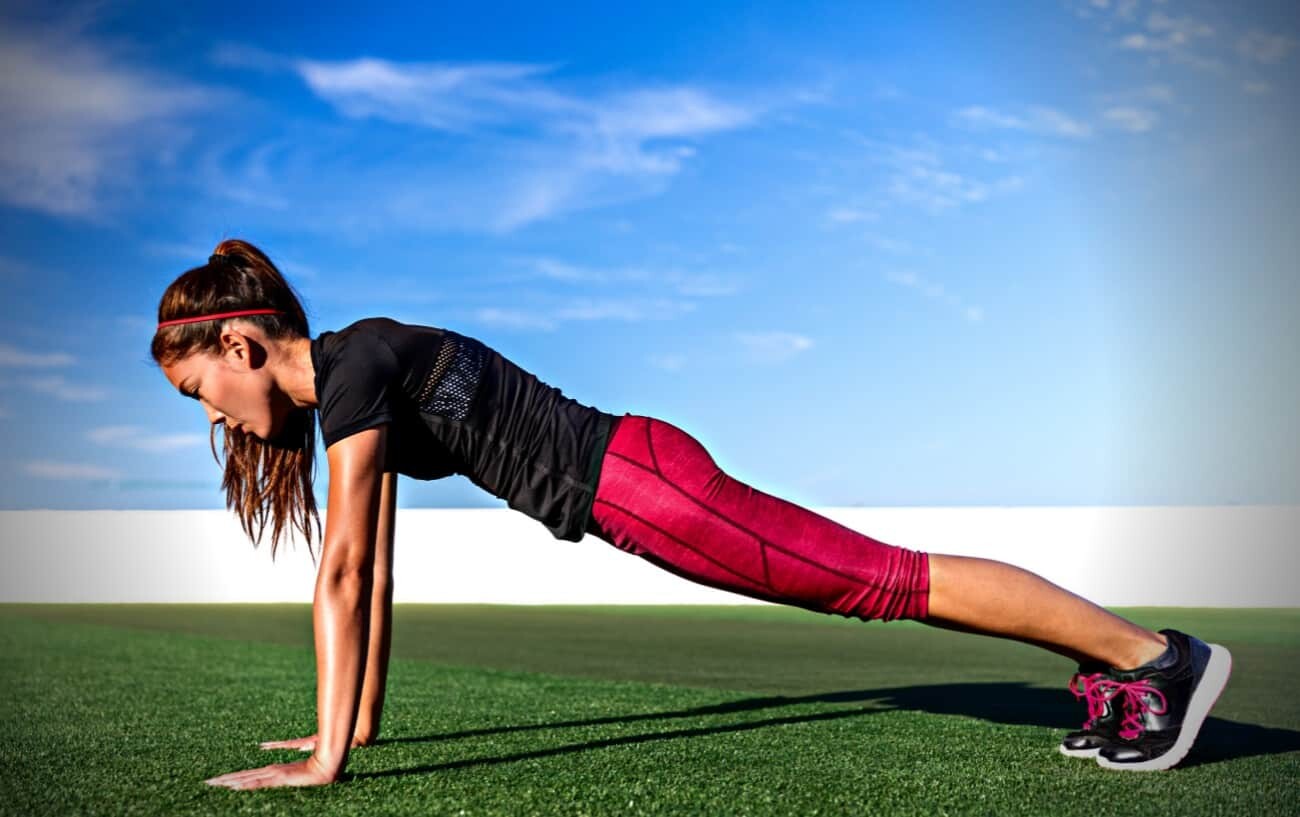
Exercise 1: Pallof press
Step 1. Wrap a resistance band around a pole or stable object, holding the opposite end of the band in both hands at your chest. (note this can also be done using a cable machine at a gym)
Step 2: Standing so that the pole is to your left, take a few steps to your right until there is some tension on the band.
Step 3: Brace your core and press your hands out in front of you until your arms are straight, resisting the urge to allow your torso to turn toward the pole.
Step 4: Briefly pause once your arms are fully extended, then slowly return to the starting position. Repeat 10-20 times on both sides, for three sets.
Exercise 2: Pallof press holds
Step 1. Wrap a resistance band around a pole or stable object, holding the opposite end of the band in both hands at your chest. (note this can also be done using a cable machine at a gym)
Step 2: Standing so that the pole is to your left, take a few steps to your right until there is some tension on the band.
Step 3: Brace your core and press your hands out in front of you until your arms are straight, resisting the urge to allow your torso to turn toward the pole.
Step 4: Hold your arms out straight for up to 30 seconds, then return to the starting position. Repeat three times on each side.
Exercise 3: Plank taps
Step 1: Get into a plank position, either on your elbows or your hands.
Step 2: Bracing your core and keeping your back flat, reach out in front of you, extending your arm as far as you can, and tap the ground (you can also place a small object in front of you if you prefer).
Step 3: Return to the starting position, and repeat on the other side. Throughout the movement, resist the urge for your body to drop or shift to one side or the other. Repeat 10 times on each side, for three sets.
Exercise 4: Half-kneeling single-arm row
Step 1: Loop an exercise band around a sturdy object. Get into a half-kneeling position with your left leg in front of you bent at 90 degrees. (note this can also be done using a cable machine at a gym)
Step 2: Grasp the band with your right hand, leaving your left arm at your side (try not to use this arm for stability).
Step 3: Squeezing your shoulder blade, pull the band back until your right elbow is in line with your torso. Hold, then slowly return to the starting position.
Step 4: Repeat for 10 repetitions on your right, then do the same on your left. Do this three times for each side.
(08/10/2023) ⚡AMPby Brittany Hambleton
Record breakers and winners in Budapest to get huge perks
Over 2,000 athletes from around 200 countries-including Kenya are set to benefit from the world record programme during this month's World Athletics Championships in Budapest.
During the nine-day global extravaganza, World Athletics will once again run its world record programme that rewards record breakers.

Athletes who will set a world record will be eligible for a special award of US$100,000 offered by TDK and World Athletics’ new Inside Track platform.
The performance must be an improvement on the existing World Athletics world record. Performances that equal the existing world record will not be eligible for a world record award.

During last year's World Athletics Championships in Oregon, Eugene, USA’s Sydney McLaughlin-Levrone and Sweden’s Mondo Duplantis were rewarded for their performances.
McLaughlin-Levrone clocked 50.68 setting a new 400m hurdles world record bettering her previous time of 51.41.
Duplantis took the pole vault to another level again by clearing the 6.21m mark also bettering his previous jump of 6.20 set during the World Athletics Indoor Championships in Serbia in March.
The Japanese electronics company TDK will offer the awards for men's events while the women’s world record programme will be supported by Inside Track.
For the mixed 4x400m relay, the programme will be supported by both TDK and Inside Track. Aside from the world record programme, a total of US$8,498,000 in prize money will be on offer in Budapest.
Individual winners will get US$70,000, US$35,000 for second-placed and US$22,000 for bronze. Positions four to eight will receive between US$16,000 and US$5000.
Relays winners will get US$80,000 with second and third placed receiving US$40,000 and US$20,000 respectively. Positions four to eight will get between US$16,000 and US$4000.
(08/10/2023) ⚡AMPby Samuel Nganga
World Athletics Championships Budapest 23
From August 19-27, 2023, Budapest will host the world's third largest sporting event, the World Athletics Championships. It is the largest sporting event in the history of Hungary, attended by athletes from more than 200 countries, whose news will reach more than one billion people. Athletics is the foundation of all sports. It represents strength, speed, dexterity and endurance, the...
more...The story behind the success of the Dicks Sporting Good Pittsburg Marathon
Pittsburgh hosted its first Dick’s Sporting Good Marathon on May 5th, 1985. The streets were closed to traffic as music filled the air. People lined the streets to cheer on the racers that went by. In addition to the marathon, there was a half marathon, a team relay, a kids’ race and 5K. Elite and seeded runners, wheelchair racers, and walkers took to the street each May.
Certified Marathon
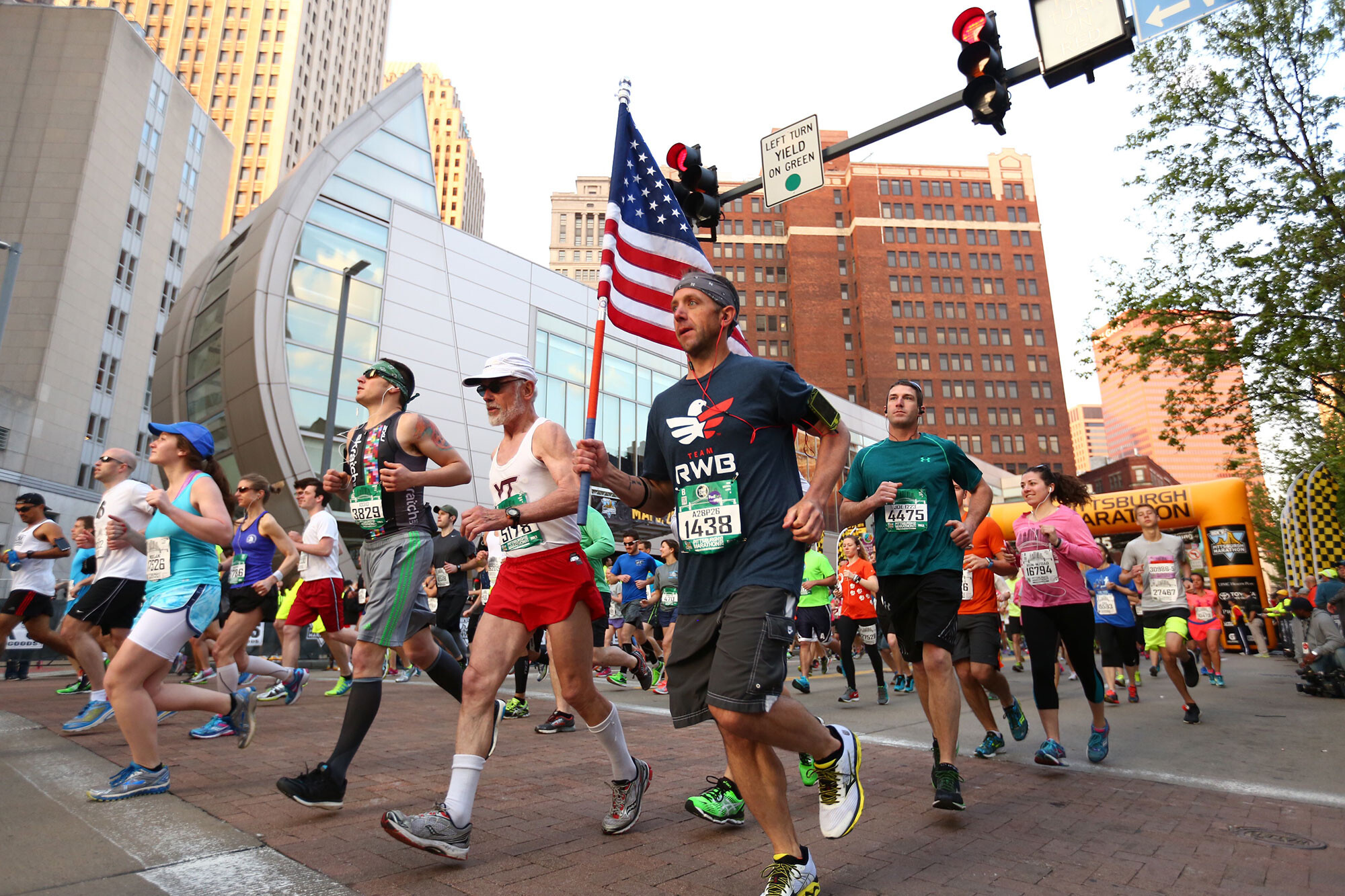
The Dick’s Sporting Goods Pittsburgh Marathon course is certified by USA Track and Field. The purpose of such a certification program is to produce racecourses of accurately measured distances. The USATF explains, “for any road running performance to be accepted as a record or be nationally ranked, it must be run on a USATF-certified course”.The Pittsburgh Marathon is also a qualifying course for the Boston Marathon. In 1998 The Pittsburgh Marathon hosted the U.S. Olympic Women’s Trials. It hosted the Men’s Trials in 2000. It has also served as the U.S. Men’s National Championship course three times. In 1986 it was the site of the National Wheelchair Championship.
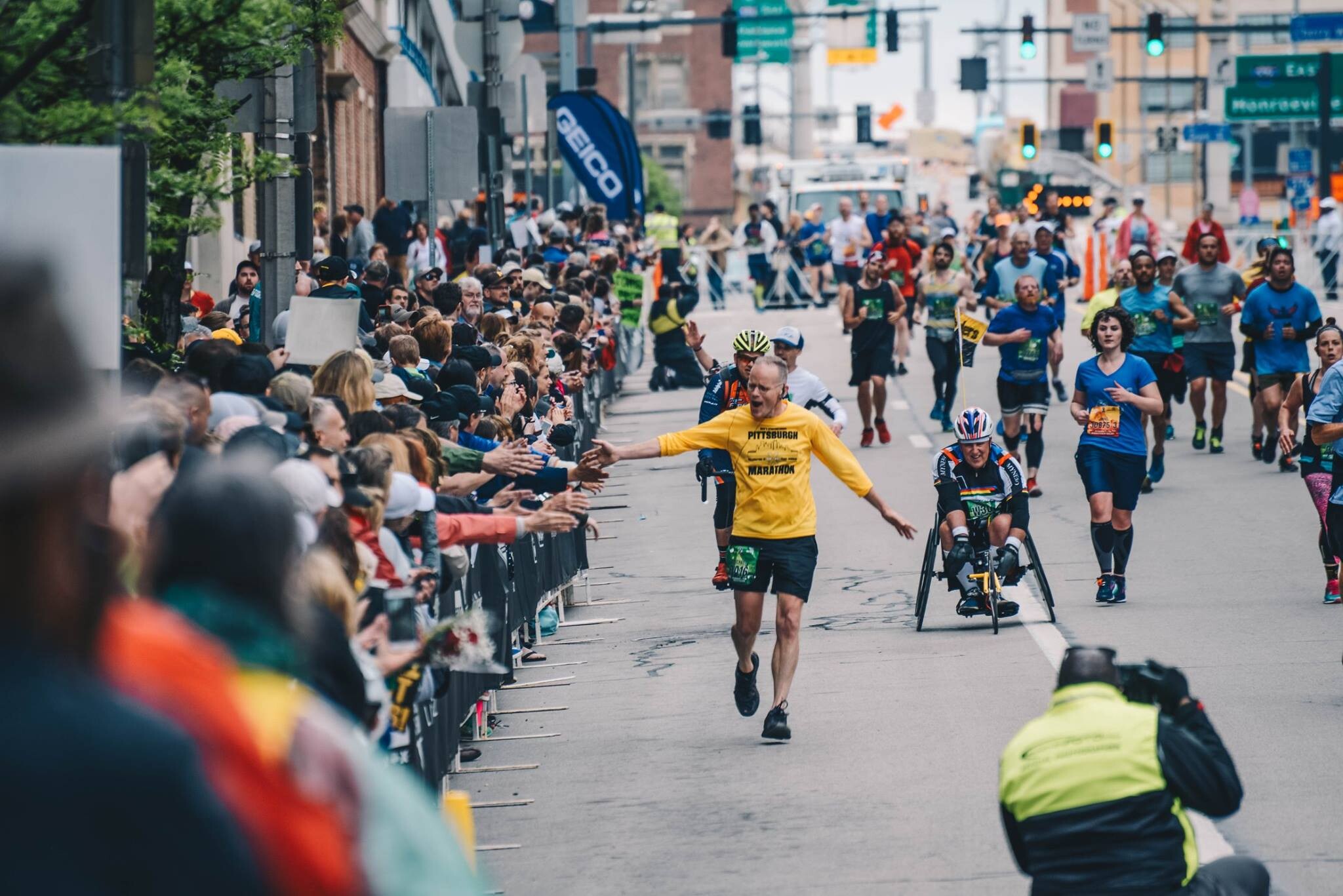
The race attracts athletes from all over the globe. John Kagwe, from Kenya, holds the men’s course record. He set the record in 1995 with a staggering 2 hours, 10 minutes and 24 second time. American, Margaret Groos set the course record for women in 1988. She ran the course at the incredible time of 2 hours, 29 minutes and 50 seconds. In 1994 and then again in 2000, Pittsburgh resident Tammy Slusser won the women’s title.
As you are getting ready to run a marathon you also might enjoy making some money online. Many runners are enjoying the challenge. Click on link to find out more.
https://www.slotozilla.com/au/best-payout-casinos
The Pittsburgh Marathon ran consecutively until 2003. During those years, UPMC was the largest sponsor. Unfortunately, when the city experienced financial distress UPMC pulled out. Mayor Tom Murphy concluded that the city couldn’t handle the financial burden of hosting the marathon that year, so he canceled it.
Thankfully, after a five-year hiatus, Dick’s Sporting Goods revived the marathon in 2009. It came roaring back, attracting 9,000 runners. Participation has increased with each succeeding year. This caused a need for some modifications to the course to handle the increasing number of athletes.
The next marathon is set for May 5, 2024. It is a race you should put on your calendar. And if you are not ready to run 26.2 miles there are other events too.
(08/10/2023) ⚡AMPSharon Lokedi, Hellen Obiri, Peres Jepchirchir and Brigid Kosgei to Race 2023 TCS New York City Marathon
Defending TCS New York City Marathon champion Sharon Lokedi, reigning Boston Marathon and United Airlines NYC Half champion Hellen Obiri, Olympic gold medalist and 2021 TCS New York City Marathon champion Peres Jepchirchir, and marathon world-record holder Brigid Kosgei will headline the women’s professional athlete field at the 2023 TCS New York City Marathon on Sunday, November 5.
When the four Kenyans line up in New York, it will be the first time in event history the reigning TCS New York City Marathon champion, Boston Marathon champion, Olympic champion, and world-record holder line up against each other in the TCS New York City Marathon.
Lokedi won the TCS New York City Marathon in her marathon debut last year, pulling away in the final two miles to finish in 2:23:23 and became the eighth athlete to win the race in their true 26.2-mile debut. In preparation for the marathon, Lokedi had raced the United Airlines NYC Half and the Mastercard New York Mini 10K, finishing fourth and second, respectively, in those races.
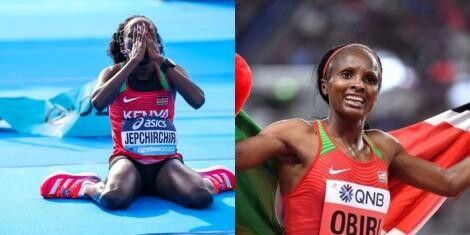
“Last year, I came into the TCS New York City Marathon with the goal of being in the thick of the race, and the result was better than I could have ever hoped for,” Lokedi said. “This year, I’m returning with a different mindset, hungry to defend my title and race against the fastest women in the world.”
Obiri is a two-time Olympic medalist and seven-time world championships individual medalist who earlier this year won the Boston Marathon in her second-ever attempt at the distance, in addition to winning the United Airlines NYC Half in her event debut. Obiri holds the Kenyan record for 3,000 meters and represented Kenya at the Rio 2016 and Tokyo 2020 Olympics, earning silver medals in the 5,000 meters at both. In her marathon debut last year in New York, she finished sixth.
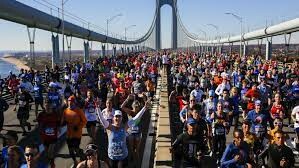
“With a year of marathon experience now under my belt, a win in Boston, and my move to the U.S., I’m coming to New York this year with more confidence and in search of a title,” Obiri said. “I’m excited to show the people of New York what I’m capable of and that my win at the United Airlines NYC Half in March was just the beginning.”
Jepchirchir is the only athlete to have won the Olympic marathon, TCS New York City Marathon, and Boston Marathon. She is also a two-time world championships gold medalist in the half marathon. In 2021, she won the Tokyo Olympic marathon to claim Kenya’s second consecutive gold medal in the event. Four months later, she won the TCS New York City Marathon, finishing in 2:22:39, the third-fastest time in event history and eight seconds off the event record. In April 2022, in a back-and-forth race that came down to the final mile, she fended off Ethiopian Ababel Yeshaneh to take the Boston Maraton title on Boylston Street in her debut in the race in 2:21:02. This April, she recorded another podium finish, taking third at the TCS London Marathon.
“I was so disappointed that I couldn’t defend my title in New York last year due to an injury, and winning again in Central Park has been my main motivation as I begin my preparations for the autumn,” Jepchirchir said. “New York is an important step in defending my Olympic gold medal next summer in Paris, and I will do my best to make my family and my country proud.”
Kosgei is the world-record holder in the marathon and has won an Olympic silver medal and five Abbott World Marathon Majors races; she will now make her TCS New York City Marathon debut. In 2019, Kosgei broke Paula Radcliffe’s 16-year-old world record by 81 seconds, running 2:14:04 to win the Chicago Marathon. It was her second Chicago Marathon victory, as she’d also won in 2018. Additionally, she won back-to-back London Marathons in 2019 and 2020, the Tokyo Marathon in 2022, and the silver medal at the Tokyo Olympic marathon.
“I am very excited to make my New York City debut this fall, and attempt to win my fourth different Major,” Kosgei said. “I am not worried about the course, as I have had success in hilly marathons before, but New York has always been about head-to-head competition, and I know I must be in the best possible shape to compete with the other women in the race.”
The 2023 TCS New York City Marathon women’s professional athlete field is presented by Mastercard®. The full professional athlete fields will be announced at a later date.
The 2023 TCS New York City Marathon on Sunday, November 5 will have 50,000 runners and be televised live on WABC-TV Channel 7 in the New York tristate area, throughout the rest of the nation on ESPN2, and around the world by various international broadcasters.
(08/10/2023) ⚡AMPby Running USA
TCS New York City Marathon
The first New York City Marathon, organized in 1970 by Fred Lebow and Vince Chiappetta, was held entirely in Central Park. Of 127 entrants, only 55 men finished; the sole female entrant dropped out due to illness. Winners were given inexpensive wristwatches and recycled baseball and bowling trophies. The entry fee was $1 and the total event budget...
more...Three signs you may be running too much
Feeling sluggish and worn out, even after a great night’s sleep and some nutritious food? Overtraining may be the culprit, and while it can be challenging to pinpoint, there are a few red flags to look out for. Defined as a condition that can occur when a runner pushes their training beyond what their body can adequately recover from, overtraining can lead to a decline in performance and potential health issues.
While some fatigue is normal in a tough training block, over time the effects of training too hard add up and can lead to burnout or other running-related ailments. Here’s how to know whether you are overdoing it.
1.- Performance plateau or decline
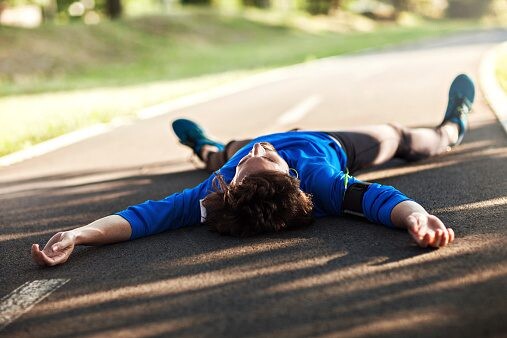
Performance decline is one of the most noticeable signs of overtraining. Take note if you suddenly have a tough time hitting paces that used to be easy for you, or if your performance plateaus or starts to decline despite consistent training efforts. Your body may be struggling to recover adequately if you’re getting slower even when you’re putting in more effort.
2.- Persistent fatigue and loss of motivation
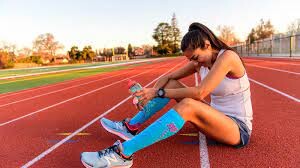
Feeling exhausted despite fitting in adequate rest? Overtraining (or overreaching) often leads to chronic fatigue that just doesn’t seem to get better, even when you’re logging a solid night of sleep and taking rest days. If you feel tired, lethargic, and lack motivation to run or train, it might be a sign that your body is overstressed. If a few extra recovery days don’t get some pep back in your step, make some adjustments to your schedule and check in with your physician or a registered dietician.
3.- Increased resting heart rate and insomnia
Overtraining can disrupt your sleep patterns and lead to difficulties falling or staying asleep. Monitoring your resting heart rate (RHR) can also provide valuable insight into your body’s stress levels, with a continuously elevated resting heart rate potentially indicating overtraining or illness.
What to do
Take a few extra days off, and notice if you bounce back. If you’re experiencing the same challenges even after some time on the couch, it may be time to check in with a medical professional.
(08/09/2023) ⚡AMPby Keeley Milne
Florence Kiplagat will make her return into competitive athletics at the Stockholm Marathon
Her last competition was during the 2019 Outdoor Meeting in Israel where she competed over the 10,000m and finished third.
The 2009 World Cross-Country champion Florence Kiplagat will make her return into competitive athletics at the Stockholm Marathon 0n Saturday, 3rd June 2023.
She has been out of competition for four years since her last competition was during the 2019 Outdoor Meeting in Israel where she competed over the 10,000m and finished third. The Sirgoech Secondary School alumnus is one of the leading entrants to the event.
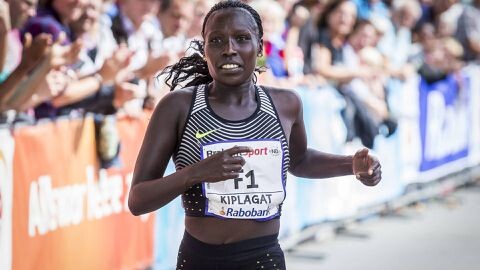
She will be lining up with a Personal Best time of 2:19:44, a time she clocked while winning the 2011 Berlin Marathon. She is the fastest in the field that has also attracted the Ethiopian duo of Tadelech Bekele and Sifan Melaku.
Kiplagat will be testing if she still has the mileage in her against the duo who unlike her, have been competing. Melaku opened her season with an impressive fifth-place finish at the Mumbai Marathon and she will be keen to improve on that as she takes on her opponents.

On her part, Tadelech will be opening her season in Stockholm. The last time she was in competition was during the Zurich Marathon in May 2022 where she also finished fifth.
Kiplagat has a decorated career owing to the fact that she ruled the track and road races before taking the break.
She is a former world half marathon record holder, status she achieved after winning the Barcelona Half Marathon in 2015. Winning the cross-country senior race title in 2009 also saw her become the second Kenyan to achieve the gong after Hellen Chepngeno who won in 1994.
Kiplagat also boasts of two Berlin Marathon titles, one in 2011 when she was debuting and the other one during the 2013 edition. She is also a two-time Chicago Marathon champion.
(08/09/2023) ⚡AMPby Abigael Wuafula
Stockholm Half Marathon
Stockholm Half marathon has a unique course. Starting and running in the area between the castle, the Riksdaghuset and the Opera is special. And running in the middle of town is really a special feeling. The half marathon in Stockholm has been called Stockholm Halvmarathon (Stockholm Half Marathon) since 2007 but the race is actually much older. In 1927, the...
more...Brit who once beat Mo Farah jailed for stealing from bed and breakfast
Ricky Stevenson, who in 2010 beat fellow Brit Mo Farah to the finish line on the short course of the Great Edinburgh Cross Country International, was recently sentenced to two-and-a-half years in prison for stealing nearly C$70,000 from a bed and breakfast he was managing.
Stevenson, 34, of Skelton-in-Cleveland in North Yorkshire was handed the sentence in late June after admitting in February to stealing from the business in the village of Hinderwell in northeast England to fund his addiction to cocaine and gambling, according to North Yorkshire Police.
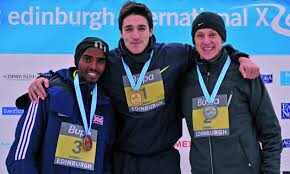
In a statement, police say the thefts, which occurred in 2020 as businesses were struggling to survive during COVID-19 pandemic, left the business “on the brink of collapse” as it continued to scrape by with the help of government-backed pandemic loans. In December of that year, the owner of the B&B started to receive warning letters from utility companies and other businesses over unpaid bills.
Police say Stevenson initially blamed shortfalls in the business’s bank account on guests not showing up due to COVID restrictions. In January 2021, however, Stevenson broke down and admitted to stealing the money to fund his addiction to cocaine and gambling.
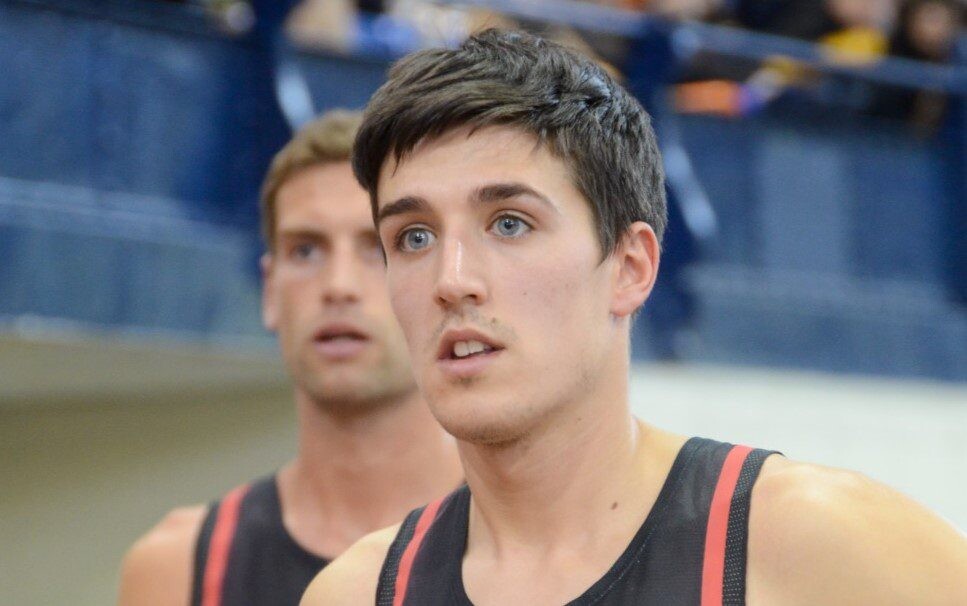
Stevenson stole the money through unauthorized transactions from the business account to his personal account, cheques made out to himself, cash withdrawals using the business’s bank card and taking cash payments directly from guests who were told the card machine was out of order, said Police Staff Investigator Rob Henderson.
“Ricky Stevenson was a close acquaintance of the owner who placed him in a position of trust to manage the holiday business and even let him live rent-free on the site where he worked. He breached this trust in a most outrageous and calculated way for his own selfish gain,” said Henderson. “Stevenson’s actions almost brought about the collapse of the business and caused untold upset and stress for the owner.”
In 2010, Stevenson pulled off a dramatic win over Farah at the Great Edinburgh Cross Country International, when he and Steve Vernon passed Farah in the final section of the snow-covered course to take first and second place respectively.
Athletics Weekly reports Stevenson shifted to music after failing to qualify for the 2012 Olympics, pursuing a career as a DJ. Farah, of course, famously went on to take gold in the 5,000m and 10, 000m at the 2012 London Games.
“I could have chosen to get my head down and done it all again for the next Olympic cycle,” Stevenson told Athletics Weekly at the time. “But for me it was a case of: ‘Do I really want to put all that effort in for something that can be taken away so quickly?’”
(08/09/2023) ⚡AMPby Paul Baswick
What to do the week before a half marathon
The week before a half marathon can make or break one’s performance. Months of training can be wasted by trying to fit in one last workout. On the other hand, resting too much in the week before a half marathon (or even the week before a 5k) can leave one feeling flat and low-energy on race day.
Tapering is a training microcycle that usually takes place the week before a key event, such as a half marathon or a 5k. Longer events like marathons or ultramarathons require longer tapers. Tapering for an event is one of the most complicated and mysterious aspects of athletic performance.
Learn the seven most common tapering mistakes people make the week before a half marathon. Follow the training plan for the week before the race to arrive fresh, fit and fast at the start line!
AVOID THE 7 MOST COMMON TAPERING MISTAKES THE WEEK BEFORE A HALF MARATHON
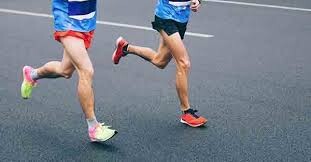
Tapering for a half marathon the week before is easy to mess up. Don’t make these seven mistakes!
1. TRAINING TOO MUCH BEFORE THE RACE

Many amateur runners think it is good to train hard right up until the race, particularly in the last few weeks. But these efforts turn out to be counterproductive. Standing at the start feeling tired is a recipe for disaster.
Instead, decrease total training volume by 30-50% in the week before a half marathon, but not the number of intensity sessions. For example, if the total distance ran two-weeks before the event was 50 km, the total distance should be no more than 35 – 25 km in the final week before the event.
Intensity should not drastically decrease despite overall distance dropping. For example, if a training plan usually calls for two days of intensity per week, still perform those two days of intense training during the final week before the event.
Reduce the number of intervals in a session by 20% of what they were in the last hard week of training. Even though overall running distance decreases, intensity may actually increase relative to the amount of total distance.
The bottom line: a good taper focuses on quality, not quantity. Do short and fast runs; decrease overall training distance by cutting back on endurance run distance.
A good half marathon training plan will have a built-in taper. Check out this FREE half marathon training plan pdf for a good example. Premium adidas Running members also receive exclusive access to customizable training plans from 5k – marathon.
2. NOT WORKING OUT AT ALL
Tapering and reducing training volumes does not mean you should just put your feet up and stop working out. The tricky part about tapering is not to lose the fitness and pace endurance you have built up. The best way to avoid this is by reducing your mileage and focusing on short and intense workout sessions.
In the last week, it is important to get one more hard workout in four or five days before the race. This is designed to give your muscles one last training stimulus and to prepare your body for the demands of the upcoming race.
Retaining intensity while decreasing training volume in the week before a half marathon has been shown to be an effective tapering strategy for most athletes.
3. STRENGTH TRAINING AND UNFAMILIAR EXERCISES
In the week before a half marathon avoid strength training and unfamiliar exercises. Fatigued and/or sore muscles can quickly endanger performance. Of course, continue to do stretching and mobilization exercises if they have been a regular part of training.
One exercise that could be beneficial in the week before a half marathon is a meditation exercise. Often, athletes develop performance anxiety due to the upcoming event and the abundance of energy (if they are tapering correctly). Meditation can help the mind prepare for the demands ahead of it.
Try the guided meditation below by professional ultramarathoner Timothy Olson:
4. CHANGING EQUIPMENT THE WEEK BEFORE AN EVENT
Never change any equipment the week before a key race! This ranges from running shoes to sports nutrition and diet. New running shoes can cause an injury that robs one of even starting a half marathon. Sports nutrition can lead to cramps or GI issues that ruin a race.
5. POOR DIET AND ALCOHOL CONSUMPTION
Letting diet slip the week before a big event is tempting. The body is busy replenishing glycogen stores, appetite is high, but total calorie expenditure should have decreased. This can lead one to give in to sugar cravings, especially if one is nervous about the upcoming event.
Now is more important than ever to eat like an athlete. Give the body the nutrients it needs to freshen up before putting in an amazing performance. Here are the nine best foods for runners. Don’t skimp on carbs the two days before the event, and use this carb calculator.
Having an extra drink or two might feel good and promote relaxation; however, it can also lead to poor sleep and dehydration. If maximal performance is on the line, skip the nightcap in the week before a half marathon.
6. NOT SLEEPING ENOUGH
Sleep is crucial throughout all training phases, but especially in the week before a half marathon. If one has been training hard, the body needs sleep to rebuild and regenerate.
Race nerves can prevent athletes from getting quality sleep in the lead-up to an important event. Here are some practical tips to get fantastic sleep during this crucial week:
Go to bed an hour earlier than usual
Wake up an hour later than usual
Take a nap during the day
Meditate instead of lying in bed awake if having trouble sleeping
If sleep doesn’t come (especially the night before the event), just keep eyes closed and focus on breathing
Don’t stress about not sleeping enough (this will cause sleep issues itself)
7. CATCHING UP ON LIFE
Training for an event sometimes means putting other life factors aside for a time. Weeding the garden, helping kids with homework, cooking dinner or finishing a big project at work all take energy. It can be tempting to finally tackle those life factors that have been put off during training since tapering means less time spent training.
Don’t think of tapering as less time training, but more time for recovering. Because recovering is training too, all those projects can wait one more week. Don’t feel guilty about putting the feet up on the sofa or sneaking off for a nap. Ask partners for continued understanding for one more week and assure them their understanding will mean a lot.
TAPERING PLANS FOR COMMON DISTANCES
Tapering is highly individual. Keep notes about how tapering for various events goes to find the ideal tapering strategy. The following half marathon tapering training plan is an excellent place to start to find one’s perfect tapering strategy. It is built for a race that takes place on Sunday. For a Saturday event, shift all the workouts to the left by one day (e.g., recover on the Sunday before the race, then do the slow long-distance run on Monday instead of Tuesday as shown).
(08/09/2023) ⚡AMPby Morgan Cole
Check out the stunning 2023 World Athletics Championship medals
The medals of the World Athletics Championships Budapest 23 have been unveiled, with 11 days to go until the competition begins. The event's organizers, who have already incorporated several distinctive features into the organizational work, aimed to ensure the medals were truly one-of-a-kind.
The design of the medals was driven by a focus on uniqueness and originality. Deviating from traditional medal designs, the emphasis was placed on representing the host country and capturing the essence of a sporting nation.
On one side of the medals, the central figure is the logo of the WCH Budapest 23: the Statue of Liberty atop Gellért Hill, a prominent and recognizable landmark in Budapest. Standing at a towering height of 14 meters, this charismatic female figure can be seen from various corners of the city, leaving a lasting impression on visitors. The palm branch grasped in the statue's hand has long been a symbol of glory, victory and enlightenment, dating back to ancient times. It serves as a tribute to past athletes and their remarkable achievements.

The reverse side of the medals carries a dual meaning. At the forefront, the brand new National Athletics Center, resembling a crown-like structure, stands as the venue for the World Championships. In the background, the race track serves as the backdrop, where athletics superheroes will etch their names into history.
"It was imperative that our medals connect sports, heroism and national identity. Moreover, all three coaches of the podium finishers will also receive medals," said Balázs Németh, CEO of the LOC.
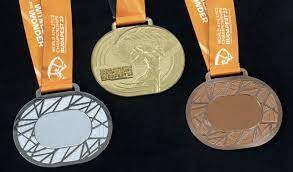
The craftsmanship behind these medals reveals meticulous attention to detail. Crafted from a unique brass alloy, each medal is plated in gold, silver or bronze. The medals’ total composition consists of a staggering 140kg of precious metal and a ribbon spanning 450 meters. The comprehensive process, from initial design to the final touch of tape sewing, culminates in more than 3000 hours of combined effort.
Naturally, sustainability was also a significant factor during the planning phase: the medal packaging comprises responsibly sourced forestry raw materials, weighing a total of 146kg. The distinctive medal case makes the World Championships medals truly exceptional. The designers utilized excess material from the race track at the National Athletics Center to line the box.
Adding to the allure of the World Athletics Championships Budapest 23 is the innovative Medal Plaza, where the medal ceremonies will take place before the sessions each day. This is the first time that the athletes are celebrated outside of the stadium.
The Medal Plaza also serves as a vibrant hub of entertainment. With daily live music, captivating performances and a range of engaging activities, it stands as a dynamic showcase of the World Championships’ festive spirit.
For the cost of a single ticket, visitors can enjoy a three-in-one entertainment package: a sporting spectacle, a fan zone, and a concert experience.
The World Athletics Championships Budapest 23, set to commence on 19 August, promises to show the world a true celebration of sport on a unique stage and welcomes everybody who wishes to witness the wonder.
(08/08/2023) ⚡AMPby World Athletics
World Athletics Championships Budapest 23
From August 19-27, 2023, Budapest will host the world's third largest sporting event, the World Athletics Championships. It is the largest sporting event in the history of Hungary, attended by athletes from more than 200 countries, whose news will reach more than one billion people. Athletics is the foundation of all sports. It represents strength, speed, dexterity and endurance, the...
more...Former Seoul Marathon gold medalist Franklin Chepkwony collapses and dies after training
Former Seoul Marathon gold medalist Franklin Chepkwony passed away after collapsing on Monday in Eldama Ravine, Baringo County.
The 39-year-old had just finished a 23km training schedule when he collapsed on his way home.
According to his training partner Mike Boit, Chepkwony was in high spirits during training before they parted ways.
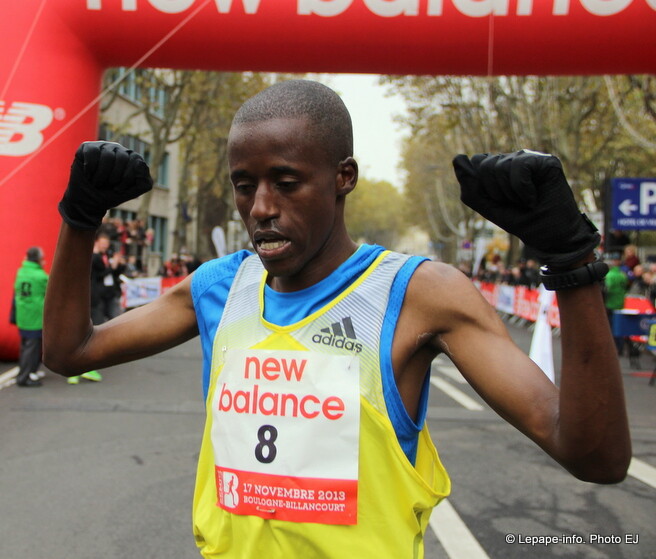
“Our training went well and he was in high spirits. I was called when I got home that my friend had collapsed and died but I couldn’t believe it. I rushed to his home, where I confirmed indeed he was no more,” he said.
Boit said Chepkwony was among the athletes who took part in the Nairobi City Marathon on July 2, where he placed 54th in 2:16:43.

According to his uncle, Joseph Tele, a colleague of his tried to administer first aid before a good Samaritan arrived and rushed him to Eldama Ravine Hospital, where he was pronounced dead on arrival.
“I was called when he was rushed to the hospital and unfortunately he passed on. We are now planning his burial. We shall announce the date of his burial once we agree as a family,” Tele said.
His body has since been moved to Eldama Ravine Mortuary awaiting his burial.
Chepkwony first burst into the limelight in 2011 during the Standard Chartered Nairobi Marathon, where he came in second in 2:11:00 just five seconds behind Ernest Kebenei who won in 2:10:55.
His international debut came in 2012 at the Zurich Marathon, Switzerland, where he won with a time of 2:10:57.
Later that year, he set a personal best of 2:06:11 after finishing second at the Eindhoven Marathon in the Netherlands just 25 seconds behind the winner. The time ranked him 26th in the world that year.
In 2013, Chepkwony won the Seoul International Marathon on March 17th in a time of 2:06:59, bagging $80,000 for finishing the race under 2:10:00.He later ran his second marathon in the Netherlands in October but disappointingly finished seventh with a time of 2:09:53.
He later bounced back with an emphatic win at the Boulogne-Billancourt Half Marathon in France setting a course record of 1:00:11.
In 2014, Chepkwony participated in the Boston Marathon and finished third, his first top finish in World Marathon Majors.
Various Kenyan athletes took to social media to express their sorrow for the loss of a marathon great.
(08/08/2023) ⚡AMPby Teddy Mulei
World medalists Yamanishi and Kitaguchi on Japan's team for WCH Budapest 23
Two-time defending 20km race walk champion Toshikazu Yamanishi and world javelin bronze medalist Haruka Kitaguchi feature on Japan’s team for the World Athletics Championships Budapest 23.
Yamanishi won his first world gold in Doha in 2019 and retained his title in Oregon. He will be joined by Koki Ikeda, Eiki Takahashi and Yuta Koga in the men’s 20km race walk, which is the opening event of the championships on the morning of 19 August.
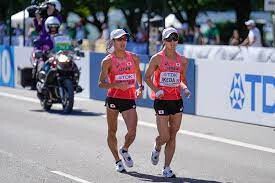
Kitaguchi finished third behind Kelsey-Lee Barber and Kara Winger in Oregon last year and goes into this year’s event as the women's world javelin leader thanks to the 67.04m national record she achieved in Silesia last month.
Other athletes on the team include national record-holders Shunsuke Izumiya in the 110m hurdles and Nozomi Tanaka in the 1500m and 5000m, plus Sumire Hata and Hiromichi Yoshida in the long jump.
After Budapest, Japan will host the next edition of the World Championships, in Tokyo in 2025.

Japanese team for Budapest
WOMEN
100m: Arisu Kimishima
200m: Remi Tsuruta
1500m: Yume Goto, Nozomi Tanaka
5000m: Ririka Hironaka, Nozomi Tanaka, Yuma Yamamoto
10,000m: Rino Goshima, Ririka Hironaka
Marathon: Rika Kaseda, Mizuki Matsuda, Sayaka Sato
100m hurdles: Masumi Aoki, Yumi Tanaka, Asuka Terada
400m hurdles: Eri Utsunomiya, Ami Yamamoto
Long jump: Sumire Hata
Triple jump: Mariko Morimoto, Naoko Takashima
Discus: Maki Saito
Javelin: Haruka Kitaguchi, Marina Saito, Momone Ueda
20km race walk: Nanako Fujii, Ayane Yanai, Yukiko Umeno
35km race walk: Masumi Fuchise, Kumiko Okada, Serena Sonoda
MEN
100m: Ryuichiro Sakai, Abdul Hakim Sani Brown, Hiroki Yanagita
200m: Shota Iizuka, Koki Ueyama, Towa Uzawa
400m: Yuki Joseph Nakajima, Fuga Sato, Kentaro Sato
5000m: Hyuga Endo, Kazuya Shiojiri
10,000m: Ren Tazawa
Marathon: Kazuya Nishiyama, Kenya Sonota, Ichitaka Yamashita
3000m steeplechase: Ryoma Aoki, Ryuji Miura, Seiya Sunada
Decathlon: Yuma Maruyama
110m hurdles: Shunsuke Izumiya, Shunya Takayama, Taiga Yokochi
400m hurdles: Takayuki Kishimoto, Yusaku Kodama, Kazuki Kurokawa
High jump: Ryoichi Akamatsu, Naoto Hasegawa, Tomohiro Shinno
Pole vault: Tomoya Karasawa
Long jump: Yuki Hashioka, Shotaro Shiroyama, Hiromichi Yoshida
Triple jump: Hikaru Ikehata
Javelin: Roderick Genki Dean, Kenji Ogura, Yuta Sakiyama
20km race walk: Koki Ikeda, Yuta Koga, Eiki Takahashi, Toshikazu Yamanishi
35km race walk: Masatora Kawano, Satoshi Maruo, Tomohiro Noda
4x100m: Shota Iizuka, Yuki Koike, Soshi Mizukubo, Ryuichiro Sakai, Abdul Hakim Sani Brown, Hiroki Yanagita
4x400m: Kenki Imaizumi, Ryuki Iwasaki, Naohiro Jinushi, Yuki Joseph Nakajima, Fuga Sato, Kentaro Sato
(08/08/2023) ⚡AMPby World Athletics
World Athletics Championships Budapest 23
From August 19-27, 2023, Budapest will host the world's third largest sporting event, the World Athletics Championships. It is the largest sporting event in the history of Hungary, attended by athletes from more than 200 countries, whose news will reach more than one billion people. Athletics is the foundation of all sports. It represents strength, speed, dexterity and endurance, the...
more...Tempo sessions for the time-crunched runner
Even the most dedicated runner occasionally finds herself squeezing in frenzied workouts, especially when it comes to those essential harder training sessions. Look no further: you’ll be able to fit any of these challenging tempo sessions in your lunch break and still have time for a quick shower.
A tempo session usually involves a prolonged or sustained moderate effort and is the perfect practice for race day. (The key to avoiding injury while doing them is not starting too hard.)

Colorado-based coach and author David Roche suggests breaking up a tempo session into three parts: for the first third, focus on running smoothly. On the second section, think “relaxed,” and for the final section, think fast(er). “A perfect tempo gets slightly faster as it goes, but is enjoyable until the very last push at the end (when you might even sprint for one minute, if you’re feeling strong),” says Roche.
Broken-up tempo workout

10 minutes easy running to warm up
2 x 10 minutes tempo run (moderate) with 5 minutes easy recovery in between
10 minutes easy running with 4 x 30 seconds fast running mixed in
Short tempo run
10 minutes easy running to warm up
21-minute tempo run at moderate effort
10 minutes easy running to cool down, with 4 x 30 seconds fast running mixed in
Simple tempo repeats
10 minutes easy running to warm up
3 x 8 minutes tempo run at moderate effort, with 3 minutes easy recovery running between intervals
10 minutes easy running to cool down
Remember to follow a hard workout session with an easy running or recovery day.
(08/08/2023) ⚡AMPby Keeley Milne
Should you warm up before your marathon?
Two-time Canadian Olympic marathoner, Reid Coolsaet, insists that a warm-up is a good idea, but it's important to not go overboard.
Most runners understand the purpose of warming up before a race, but the question remains: should you be doing a warm up before your marathon?
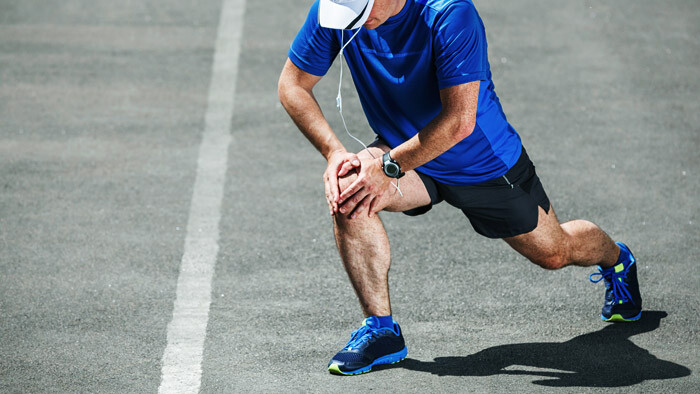
The warm up is a crucial activity to prep your muscles for the demanding marathon ahead. By increasing your core body temperature, a warm up speeds up the supply of oxygen to your hardworking muscles, promoting optimal performance. Additionally, this procedure boosts blood flow to the working muscles, priming them for the effort and effectively reducing the risk of injury.
While warming up is essential, it’s important to be mindful of the energy it requires. For shorter races like 5K or 10K, running out of energy is not a concern, given the race’s briefness. However, when you’re gearing up for a marathon that spans three-to-four hours, conserving energy and glycogen (stored carbohydrate) is vital.
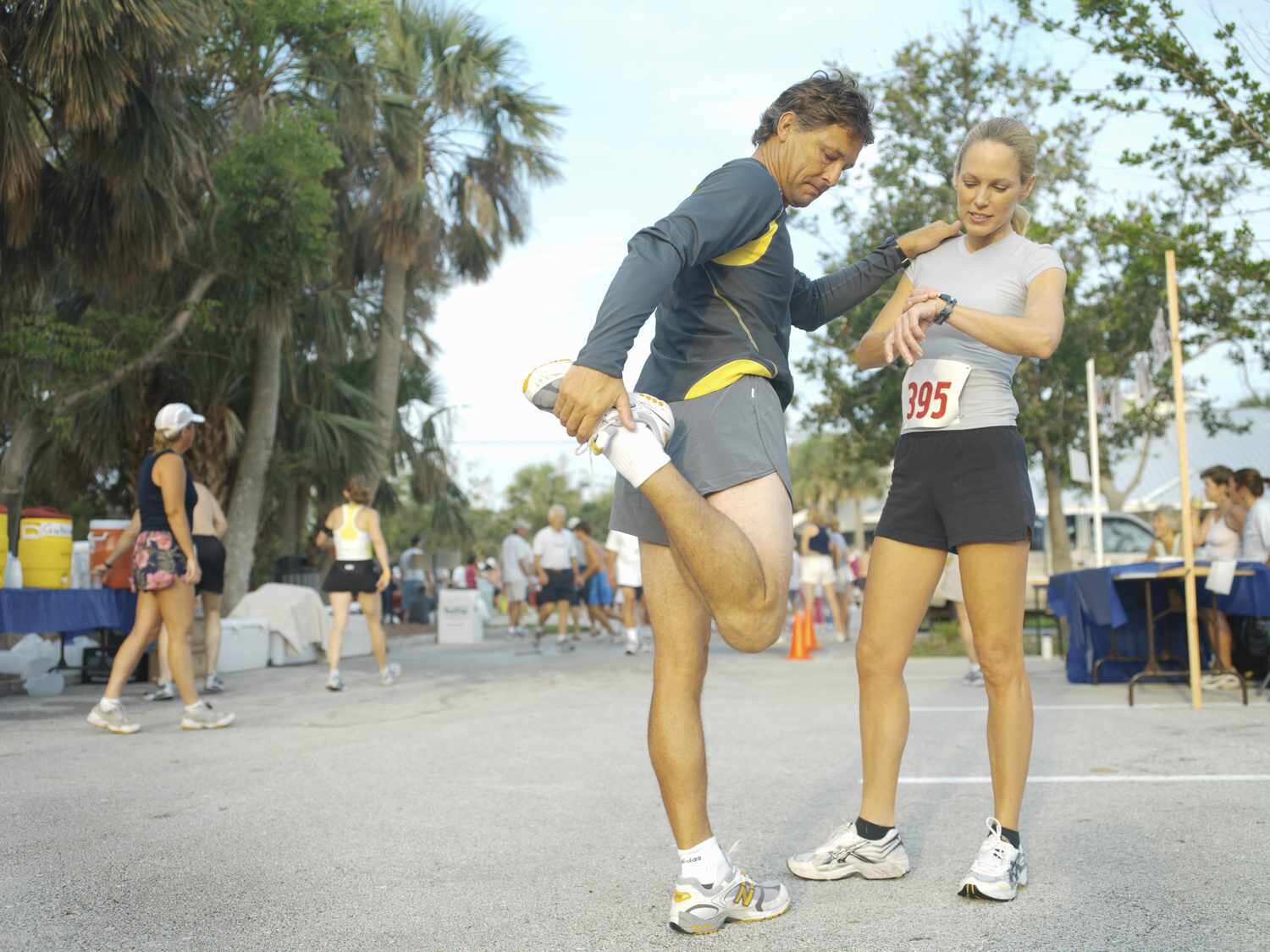
Two-time Canadian Olympic marathoner and head coach of CoolsaetGo, Reid Coolsaet, advocates for a warm up but emphasizes not overdoing it. He suggests running enough before the race to hit your race pace off the start line. “You want to run enough before the race to hit your race pace off the start line,” says Coolsaet. “Five to 10 minutes of running and a few strides is plenty.”
He notes that many marathon runners find themselves running at around warm-up pace for the first five or 10 minutes into the race. “Going beyond a 10-minute warm up may prove counterproductive, as it could lead to regrets later on, especially around the 40-kilometer mark,” says Coolsaet.
Another thing Coolsaet mentioned is to leave enough time between your warm up and the start of the race to navigate the porta-potty lines. GI issues can be a runner’s worst nightmare, especially only 10 kilometers into the race.
So don’t overlook the importance of a warm up, as it can be a gateway to ensuring that your body is primed to take on the distance and conquer your personal best. Get your muscles ready, conserve energy and tackle those 42.2 kilometers like a champion!
(08/07/2023) ⚡AMPby Marley Dickinson
16-year-old Texas sprinter breaks ridiculous record for 400m
While most 16-year-olds are learning to drive and being pressured by their parents to figure out their career path, Jonathan Simms of Allen, Texas, shattered a near three-decade junior world record in the men’s 400m at the AAU Junior Olympic Games on Saturday.
Simms ran a new personal record to win the 15-16-year-old boys’ championship in a U16 world record of 45.12 seconds.
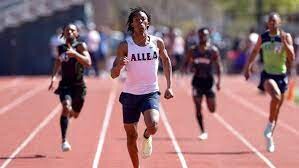
Simms entered the race as the U.S. national champion with a 46.09-second run at the Nike Outdoor Nationals in June, but his personal best was 45.90, set at the Texas state championships earlier in the season. Simms won the race handily by two and a half seconds and followed up his win with a gold medal in the 4x400m relay later where he split 44.76.
His new record time eclipses Obea Moore’s previous mark of 45.14 from 1995 as the U16 world record. Moore held the record in this event for 28 years. He was expected to be the next great American quarter-miler, to follow the great Michael Johnson, but he never lived up to expectations.
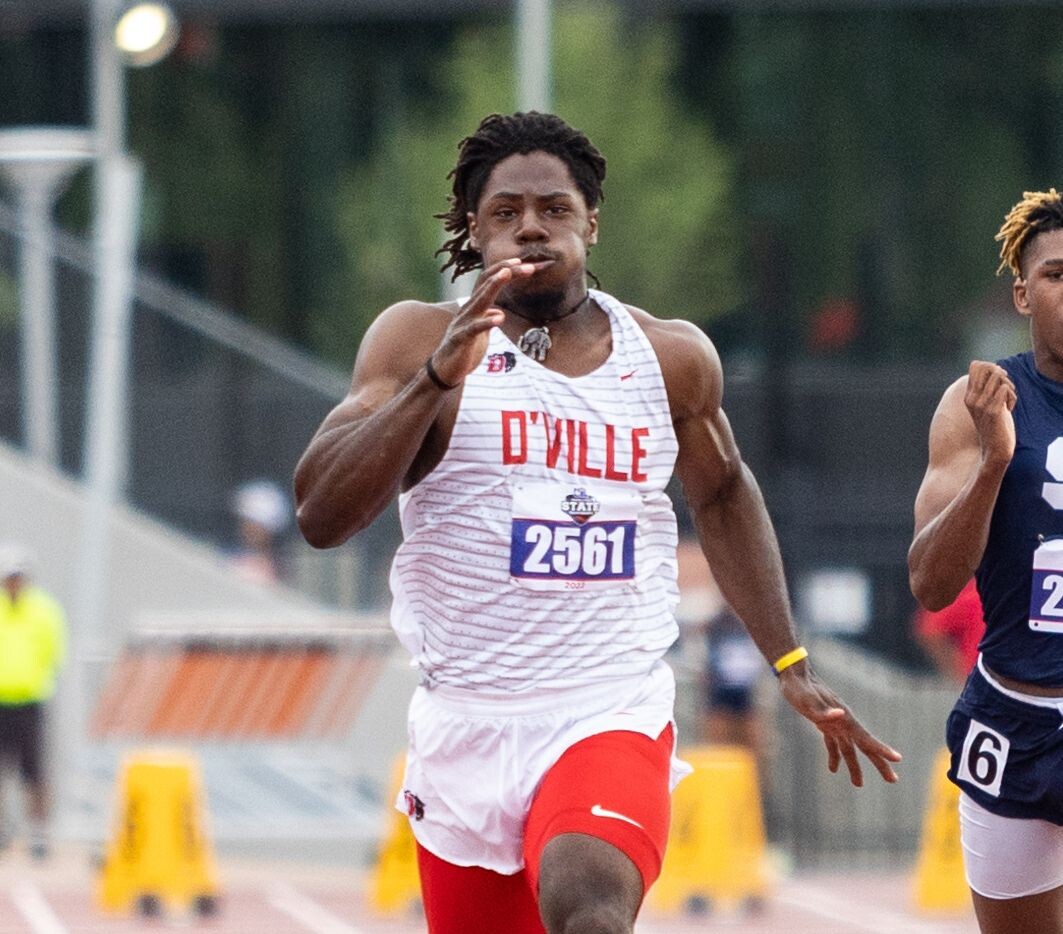
Simms’s new record time is only a tenth of a second shy of the 2024 Olympic standard for the 400m (45.00). Earlier in the week, Simms also won the 800m at the AAU Junior Olympics in 1:51.69, a new personal best.
With such remarkable performances at a young age, Simms has undoubtedly captured the attention of the track and field world as a rising star with immense potential for the future.
(08/07/2023) ⚡AMPby Marley Dickinson
Injury-plagued Emmanuel Korir ready to 'fight' to defend his world title
Korir has failed to impress since the start of the 2023 season due to his injury.
Despite an injury setback that has seen him struggle to make an impact since the 2023 season started, reigning World and Olympic 800m champion Emmanuel Korir is ready to fight as he seeks to defend his title at the World Championships in Budapest, Hungary.
The US-based athlete insisted that he cannot just sit and watch the title being snatched from him and he has promised to bring back something better.
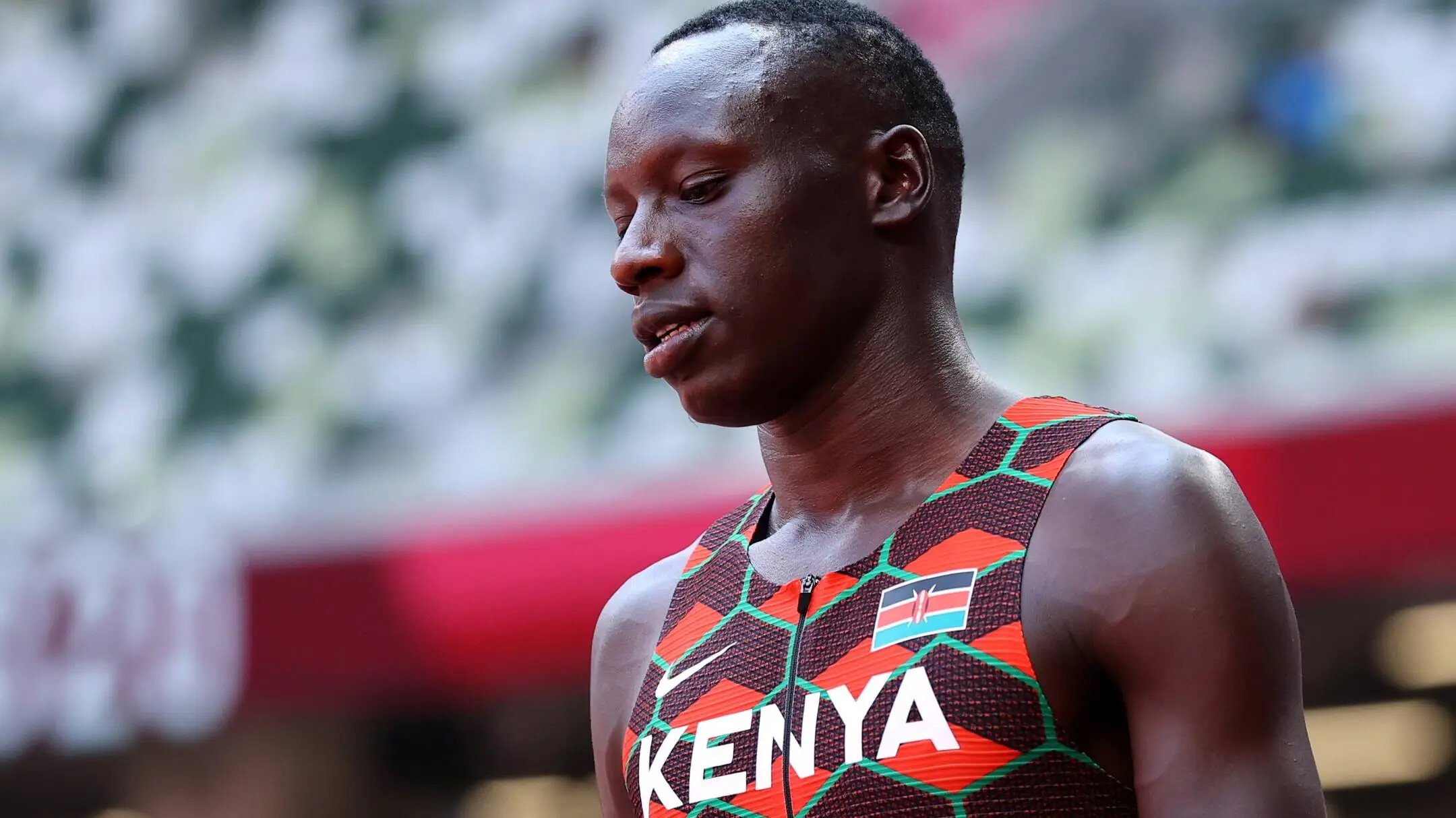
“I’m going there for it (the title) …I’m very hungry. I am not going to let it go to someone else. We shall fight and definitely bring something better back home…that’s for sure,” Korir told Nation Sport.
Korir started off his outdoor season with an eight-place finish at the Diamond League Meeting in Rabat, Morocco where he fizzled out to finish eighth.
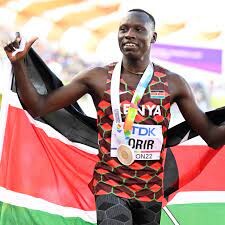
He then proceeded to the Diamond League Meeting in Paris, France where he also failed to impress by finishing 10th. Korir’s most recent race was at the Diamond League Meeting in Stockholm, Sweden, where he also finished a distant eighth.
As he heads to Budapest, he is bound to face a stern test from the upcoming duo of Djamel Sedjati and Slimane Moula who have done pretty well in the Diamond League Meetings this season.
Canada’s Marco Arop will also be in the mix seeking to improve on his third-place finish during last year’s World Championships in Eugene, Oregon.
Korir will enjoy the company of youngsters Emmanuel Wanyonyi and Kipng’etich Ngeno who will also be seeking to make a statement on the global stage.
(08/07/2023) ⚡AMPby Abigael Wuafula
World Athletics Championships Budapest 23
From August 19-27, 2023, Budapest will host the world's third largest sporting event, the World Athletics Championships. It is the largest sporting event in the history of Hungary, attended by athletes from more than 200 countries, whose news will reach more than one billion people. Athletics is the foundation of all sports. It represents strength, speed, dexterity and endurance, the...
more...Try this short tune-up workout ahead of your next race
Figuring out what to do in the last few days or weeks leading up to your goal race is tricky. Do too much, and you risk being tired and burnt out when race day rolls around. Do too little, and you feel sluggish and stiff–like you forgot how to run in the days since your last workout. This quick session is a great way to put in some work before your race without tiring you out before you toe the line.
The idea behind this workout is to practise the pace you’re going to run on race day, so that the “memory” of what that speed should feel like is fresh in your legs when you get to the start line. A small amount of faster work in the middle keeps you from feeling stale or sluggish and builds confidence, and returning to race pace for the final section of the workout forces you to find that speed again, which is good practice if you accidentally go out a bit too hard on race day.
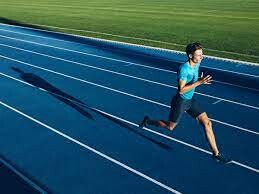
When you do this workout depends on what type of race you have on the calendar. If it’s a marathon, you should do this no closer than a week before your race. If you’re running a half-marathon, you could do it five to seven days ahead of your race, and if you’ve got a 10K or 5K on the calendar, you could slot this into your schedule three to five days out.
The workout
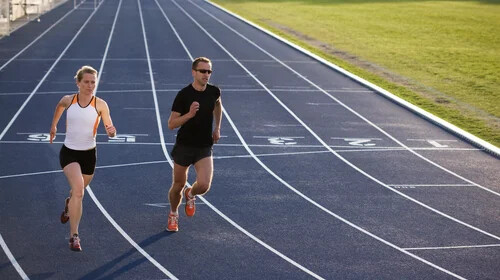
Warmup: 10 minutes’ easy jog
Workout:
10 minutes at goal pace/3 minutes easy jog
5 minutes at slightly faster than goal pace/2 minutes easy jog
10 minutes at goal pace
Cooldown: 5-10 minutes’ easy jog, followed by light stretching.
(08/07/2023) ⚡AMPby Brittany Hambleton
Two world bests set at the 9th Annual Golden Gate Double 8k today August 6
We had an amazing morning in San Francisco for our 9th annual Golden Gate Double 8k (5k+break+3k) and our Golden Gate 10k/5k. We had 452 registered runners. The weather was perfect. Like in the 50-60’s with hardly any wind. And we could see the GG bridge the whole time.
Congrats to our Double winners: the current king of the Double Anthony Cortes clocked 25:20 (15:52 + 9:28) for the win. 14-yearly-old Caroline Chang did her first double today and won clocking 32:03.
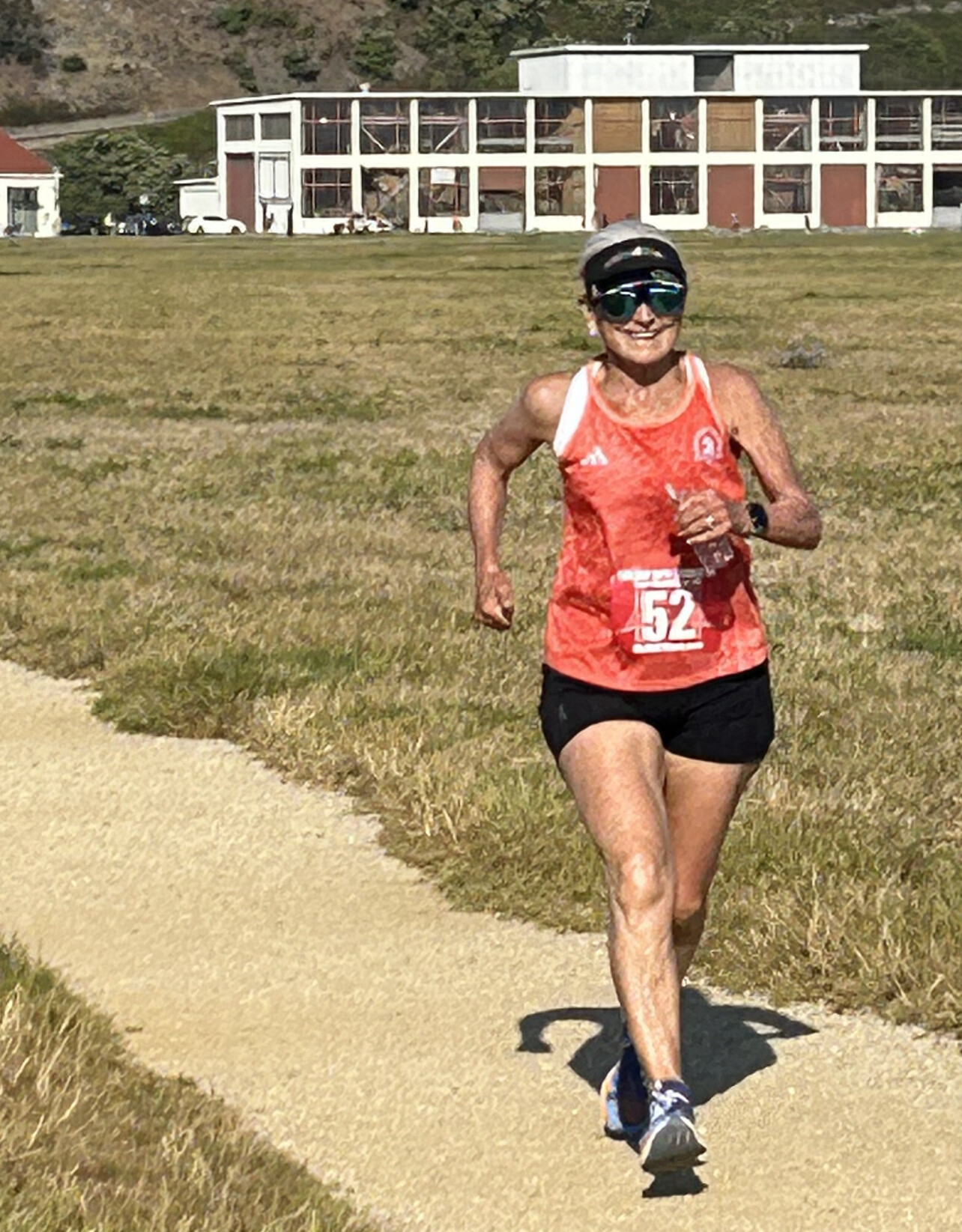
There were two world bests set today. 71-year-old Suzanne Koonce (second photo) from Menlo Park, California smashed the current 70 plus record set by Sharlet Gilbert of 43:38. Suzanne clocked 41:48 today.
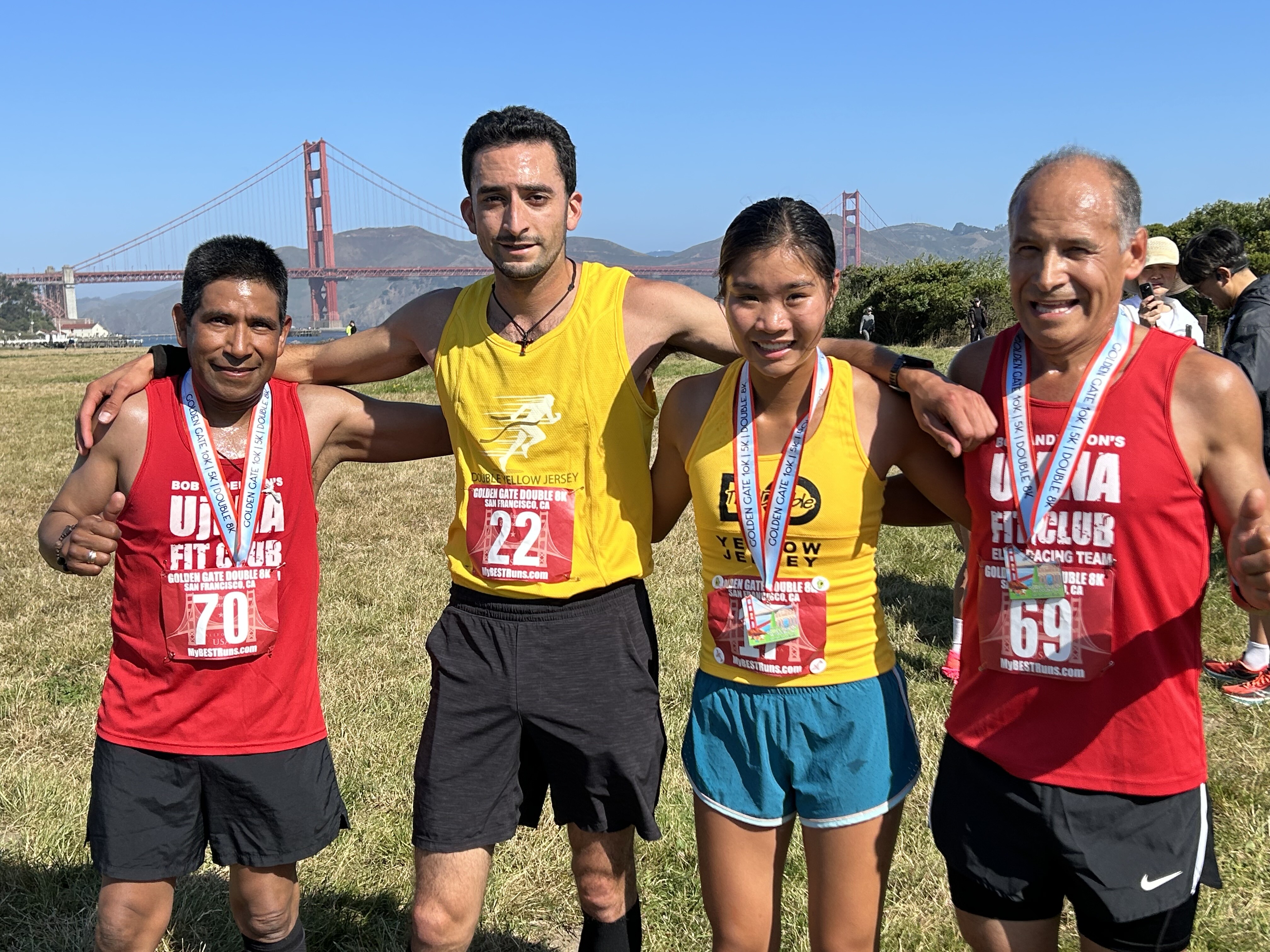
Bobby Hastings of Chico, California set the record for 60-69 a couple of years back of 31:39, a time that was nearly two minutes ahead of everyone else. Today he focused on beating that time and he did clocking 31:29.
The next double racing event is set for Dec 16th in Palo Alto California. The featured event, the Double 15k (10k+test+5k) will be run. There will also be the Palo Alto 10k/5k and the Bob Anderson’s one mile kids run (kids 13 and under).
(08/06/2023) ⚡AMPGolden Gate 10k/5k DOUBLE 8K
The Golden Gate courses offers unparalleled views of the Golden Gate Bridge for more than 80% of the way! The course will begin at historic Crissy Field near the Presidio of San Francisco. Runners will enjoy the gorgeous vistas of the Golden Gate National Recreation Area. We are offering three races: Golden Gate 10K and 5K (run/walk) and Golden Gate...
more...New study shows athletes how to beat competition heat
The potentially lethal cocktail of high heat and humidity, strenuous exercise and dehydration hit Czech endurance athlete Hana Švestková Stružková so hard during a championship event that her body went into meltdown mid-race and she lost consciousness.
Stružková was racing in the classic up and down 8.2km mountain event at the inaugural World Mountain and Trail Running Championships in Chiang Mai, Thailand last year when, 1.5km from the finish, she succumbed to heat stroke and lost control of her body.

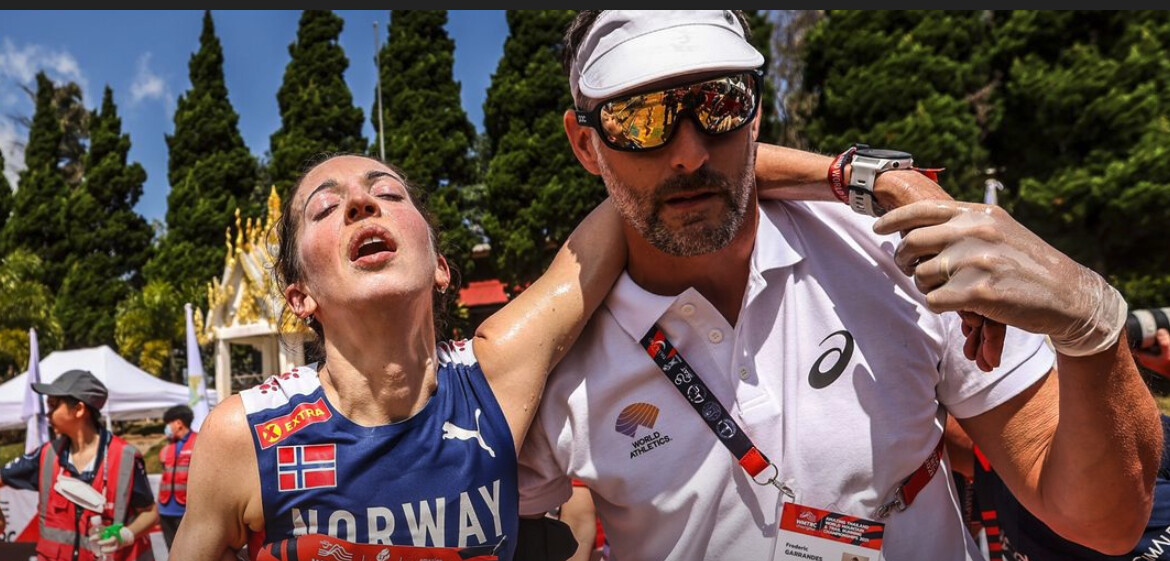
“Every step became harder, I couldn't run straight, my body became weaker and I couldn't control my legs,” Stružková recalled. “I fell down many times. Over the last 200 metres I could only scramble. It felt like a dream. After coming to the finish I was unconscious for one to two minutes and woke up in the medical tent. I couldn’t drink anything for about an hour and a half. I felt I would vomit. I felt very bad.”
Stružková admits she drastically underestimated the severity of the race conditions, she didn’t acclimate properly, and she didn’t drink enough water.
The urgent need to educate endurance athletes about the dangers to their health and performance posed by hot and humid competition conditions and how they can mitigate the risks were among the key findings of a new heat acclimatisation study by World Athletics.
Checking the weather before heading to a foreign climate may be standard practice for travellers, but the study found elite endurance athletes like Stružková were failing to check and prepare for the hot and humid conditions they’d encounter at championship events.
The study also found that while heat preparation information and strategies were available to all athletes and teams, ignorance prevailed and logistical, practical and financial barriers were proving too high.
World Athletics recruited 66 elite athletes – 42 men and 24 women – from 16 countries who competed at the World Athletics Race Walking Team Championships Muscat 22.
The study recorded the athletes’ preparation, knowledge and health, and the effects of competition heat, which can range from dehydration to death.
Race temperatures during the championships in Oman’s port capital of Muscat were 31.3C and higher than historical weather data which predicted average race-start environmental temperatures of 22.5C (morning) and 25.5C (evening).
The three race walk events held over 10km, 20km and 35km resulted in athletes being exposed to these race conditions for between 44 minutes and up to almost four hours, depending on the distance.
The study found a high number of athletes (83%) surveyed were ignorant of heat-related material that could aid their health and performance and 43 per cent did not prepare for the expected hot conditions, blaming the cost and availability of suitable equipment and facilities.
More startling was the lack of knowledge among female competitors in particular, with 42% of women compared with 14% of men surveyed more likely not to know the expected conditions they faced in Muscat for the championships.
Not surprisingly, athletes who implemented heat acclimatisation strategies were more likely to perform better. The study found that athletes who did pre-event heat training were more likely to earn a medal or finish in the top 10. The four surveyed athletes who earn medals did heat preparation and of the 15 surveyed who finished within the top 10, 80% prepared for the heat.
The study, Heat Preparation and Knowledge at the World Athletics Race Walking Team Championships Muscat 2022, was conducted by a 13-member international team led by the World Athletics’ Health and Science Department – whose primary mission is to protect athlete health – in conjunction with the School of Sport, Exercise and Health Sciences at the National Centre for Sport and Exercise Medicine at Loughborough University, UK.
Study lead Frederic Garrandes, World Athletics’ Health & Science Department Scientific Manager, said the reason for athlete, coach and team ignorance and inaction regarding heat acclimatisation was multifaceted. “A certain naivety, underestimation of risk, lack of communication and a lack of professionalism on the part of team managers and athletes,” Garrandes said.
“With global warming, we're increasingly faced with the problem of organising competitions in hot, humid conditions. This poses a health and performance problem for the athletes. The higher the temperature, the greater the number of medical encounters we have in the medical tent.”
The Muscat study builds on work carried out at the World Athletics Championships Doha 2019 by the World Athletics’ Health and Science department to also investigate heat preparation strategies used by endurance athletes.
In Doha, the capital of Qatar, 23% of road race athletes had a medical event, despite events being scheduled to start close to midnight to avoid the heat.
The 2022 Muscat study showed that despite the ready availability of educational resources, including a ‘Beat the Heat’ leaflet developed by World Athletics, a lack of knowledge persists – highlighting the urgent need to increase awareness and action.
Garrandes said publicising the study results far and wide could help bridge the knowledge gap. Making the findings and lessons “accessible in a comprehensible, simplified and multilingual way for lay athletes” was also vital.
There was also a pressing need to educate elite female athletes and athletes from cold/temperate climates in particular about the dangers of competing in high heat.
“Research in this area gives us a better understanding of the incidence of the problem, enables us to treat our athletes more effectively and to build educational programmes to educate our athletes and mitigate the risks,” Garrandes said.
Stružková has this advice for fellow athletes after suffering the debilitating effects of heat stroke while competing in Thailand: “You have to take the opportunity to acclimatise to hot and humid weather before racing in devil conditions.”
(08/06/2023) ⚡AMP
by Louise Evans for World Athletics
Ethiopia’s Addisu Yihune, Kenya’s Hellen Obiri win Beach to Beacon 10k
Ethiopia’s Addisu Yihune and Kenya’s Hellen Obiri won the men’s and women’s titles at the 2023 TD Beach to Beacon 10K on Saturday morning.
Yihune crossed the finish line in an unofficial time of 27 minutes, 56 seconds. Conner Mantz of Utah was second (27:58) and Muktar Edris of Ethiopia was third (28:06).
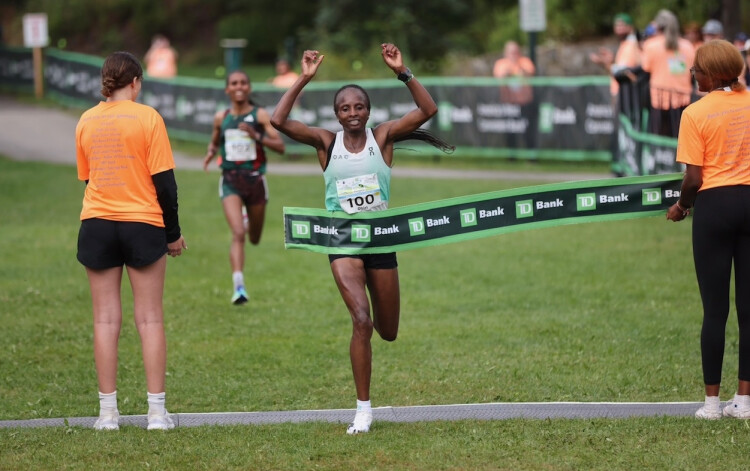
Obiri won the women’s race in an unofficial time of 31:36, followed by Ethiopia’s Fotyen Tesfay (31:38) and Keira D’Amato of Virginia (31:58).
Matt Rand of Portland was the top finisher among the Maine men in an unofficial time of 30 minutes, 44 seconds, followed by Grady Satterfield of Bowdoinham (30:52) and Ryan Jara of Gorham (30:55).
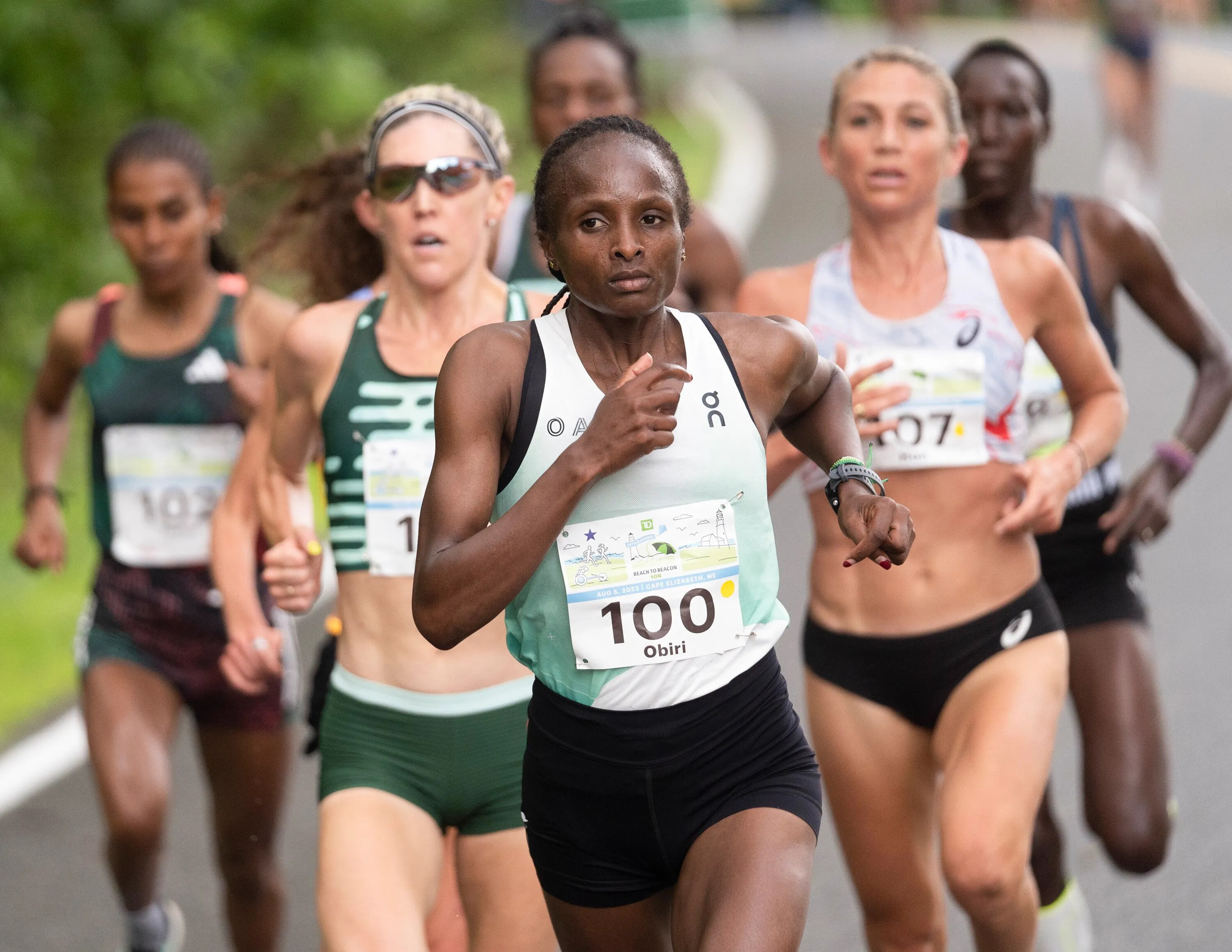
Ruth White, who will be a senior this fall at Orono High, was the top finisher among Maine women in an unofficial time of 34:56. Alexis Wilbert of Cumberland placed second (35:46) and Veronica Graziano of Falmouth was third (36:15).
Hermin Garic of Utica, New York, won the men’s wheelchair division in an unofficial time of 23 minutes, 20 seconds. Yen Hoang of Vancouver, Washington, won the women’s wheelchair division in 28:24.
In the men’s race, Mantz, 26, was visibly upset when he finished the race. He said Yihune, 20, twice pushed him in the final quater-mile, both times causing him to break stride and bang into the fencing that separated the runners from the crowd. Yihune, through the translation of countryman Edris, said he did not push Mantz. Yihune, competing in his first road race, said he was merely closing the lane to block Mantz’s path. Mantz, who had a fresh abrasion on his upper left arm, said that possibly the first incident with about 400 meters could have been accidental or unintended.
The second time, with about 200 meters to go, “The second time I tried to pass him there was plenty of room. Enough for two people to pass on his left. The second time I hit the fence pretty hard. I hate this because there’s a part of me that feels like I got gypped but I also don’t want to go out and protest and like make it into somebody else’s bad experience.”
Yihune won $10,000 for the victory. Mantz also earned $10,000 – $5,000 for finishing second and another $5,000 as the top American.
“I feel like I had first in me today and when you lose by just that much and you lose your momentum, it’s easy to get upset,” Mantz said.
Beach to Beacon, founded by 1984 Olympic women’s marathon champion Joan Benoit Samuelson, is celebrating its 25th anniversary. More than 8,000 people registered for the event, Maine’s largest road race and one of the premier road races in America, with over 6,400 finishing.
(08/05/2023) ⚡AMPTD Beach to Beacon 10K
Joan Benoit Samuelson, a native of Cape Elizabeth, Maine, won the first-ever women's Marathon at the 1984 Olympics in Los Angeles and is founder and chair of the TD Bank Beach to Beacon 10K. "A long time dream of mine has been realized" says Samuelson. "I've always wanted to create a race that brings runners to some of my most...
more...Hassan and Bol feature on Dutch team for WCH Budapest 23
Double Olympic champion Sifan Hassan and triple European champion Femke Bol will represent the Netherlands in multiple disciplines at the World Athletics Championships Budapest 23.
Hassan has been entered in the 1500m, 5000m and 10,000m – the same three disciplines she contested at the Tokyo Olympic Games, where she landed two gold medals and a bronze.
Bol, meanwhile, will have her sights set on gold in the 400m hurdles, having recently reduced her own European record to 51.45. As was the case at the past two global championships, she is also in the pools for the women’s and mixed 4x400m events.
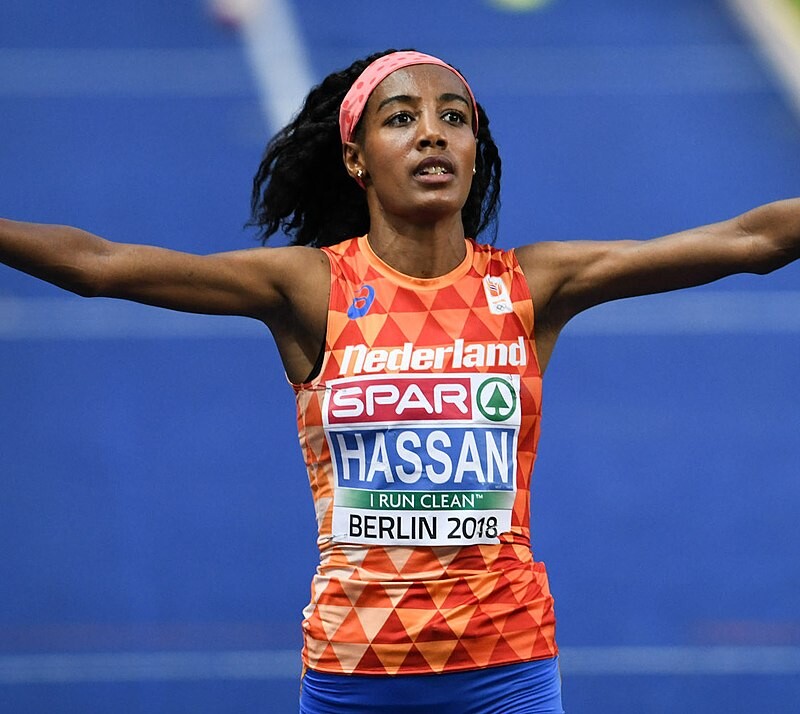
Dutch team for Budapest
WOMEN 100m: N’Ketia Seedo
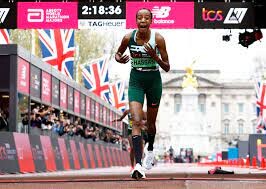
200m: Tasa Jiya
400m: Lieke Klaver
1500m: Sifan Hassan
5000m: Sifan Hassan, Maureen Koster
10,000m: Sifan Hassan, Diane van Es
100m hurdles: Maayke Tijn A-Lim, Nadine Visser
400m hurdles: Femke Bol, Cathelijn Peeters
Long jump: Pauline Hondema
Shot put: Jessica Schilder, Alida van Daalen, Jorinde van Klinken
Discus: Jorinde van Klinken
Heptathlon: Sofie Dokter, Emma Oosterwegel, Anouk Vetter
4x100m: Tasa Jiya, Lieke Klaver, Jamile Samuel, N’Ketia Seedo, Marije van Hunenstijn, Nadine Visser
4x400m: Femke Bol, Lisanne de Witte, Lieke Klaver, Cathelijn Peeters, Eveline Saalberg, Zoe Sedney
MEN 100m: Raphael Bouju
200m: Taymir Burnet
400m: Liemarvin Bonevacia
1500m: Niels Laros
5000m: Mike Foppen
Marathon: Abdi Nageeye
High jump: Douwe Amels
Pole vault: Menno Vloon
Hammer: Denzel Comenentia
Decathlon: Rik Taam
4x100m: Raphael Bouju, Taymir Burnet, Nsikak Ekpo, Churandy Martina, Xavi Mo-Ajok, Hensley Paulina
4x400m: Terrence Agard, Ramsey Angela, Isayah Boers, Liemarvin Bonevacia, Isaya Klein Ikkink, Nick Smidt
Mixed 4x400m: athletes drawn from men’s and women’s 4x400m pools.
(08/05/2023) ⚡AMPby World Athletics
World Athletics Championships Budapest 23
From August 19-27, 2023, Budapest will host the world's third largest sporting event, the World Athletics Championships. It is the largest sporting event in the history of Hungary, attended by athletes from more than 200 countries, whose news will reach more than one billion people. Athletics is the foundation of all sports. It represents strength, speed, dexterity and endurance, the...
more...Four exercises to combat shin splints
A bad case of shin splints can sideline even a very experienced runner. Also known as medial tibial stress syndrome, shin splints refer to pain and discomfort along the shinbone (tibia) at the front of the lower leg. They are caused by overuse or excessive stress on the shinbone and surrounding area, with tissues that attach the muscles to the bone becoming inflamed.
There are a few ways to prevent and treat shin splints. Resting your legs (cross-training with low-impact activities like swimming are OK) is a great first step. Next, check your shoes: ensure you’re wearing the right shoes with adequate cushioning and support to minimize impact–and that they are not worn out. (Great idea, if you run regularly, to replace your shoes at least once a year.)
Make sure you gradually progress your training, avoiding sudden increases in the intensity or duration of your runs. Finally, strengthen the shin muscles: add these exercises to your post-run routine to combat and prevent that nagging leg pain.
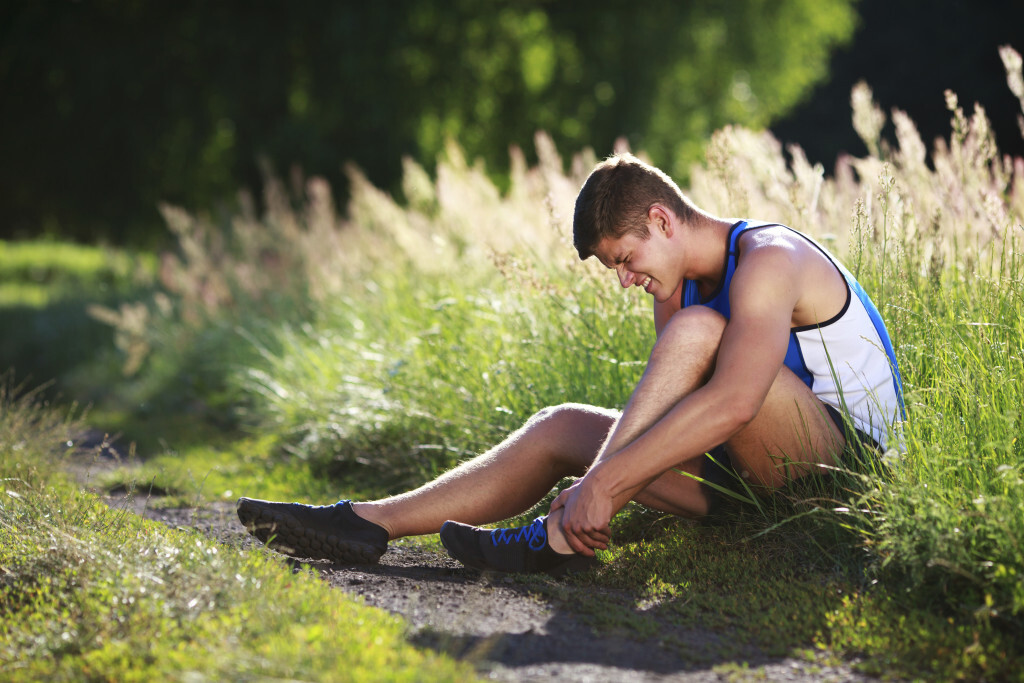
Toe Taps
Sit on a chair with your feet flat on the ground, and lift your toes upward, keeping your heels on the ground. Tap your toes on the ground rapidly for 20-30 seconds, and repeat for a few sets.
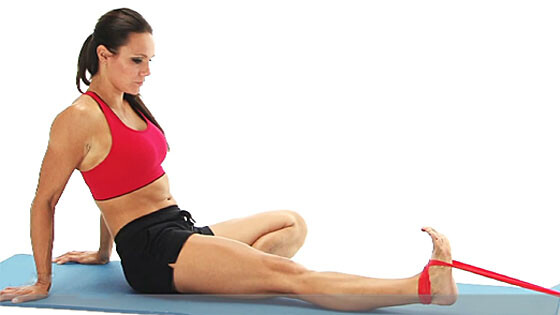
Resisted dorsiflexion
Attach a resistance band to a stable anchor, like a heavy chair or stair railing. Sit on the floor with your legs extended in front of you, and loop the band around your toes. Gently pull your toes toward you against the band’s resistance. Hold for a few seconds, then release. Try 2–3 sets of 10–15 reps.
Calf raises (eccentric focus)
Stand on a step or a platform with your heels hanging off the edge, rise onto your tiptoes, then slowly lower your heels as far as possible below the step. Use your non-injured leg or support, as needed, to rise back up to the starting position. Perform 2-3 sets of 10-15 reps.
Ankle alphabet
Sit on a chair with one leg extended. Pretend your big toe is a pen and write the letters of the alphabet in the air using your ankle and foot. This exercise engages the muscles around your shins, promoting strength and mobility.
Despite doing everything right, some runners still get sore shins. To tackle the pain, try applying ice to the area for 15 minutes at a time, three or four times a day. Ice slows the blood flow to the area and should help decrease pain.
Once you have rested your shins and dealt with the soreness, ease back into your running and strengthening routine. If shin pain is persistent or feels sharp and stabbing, visit a medical practitioner to make sure it isn’t a more serious injury, like a stress fracture.
(08/05/2023) ⚡AMPby Keeley Milne
It’s Official! 92-Year-Old’s Marathon World Record Finally Approved
Mathea Allansmith now holds the Guinness World Record as the oldest woman to have completed a marathon.
In December 2022, 92-year-old Mathea Allansmith crossed the Honolulu Marathon finish line, becoming the oldest woman to have ever completed a 26.2-mile race. She surpassed the former record holder, Harriette Thompson, by over three months. Half a year later, after a thorough ratification process, Guinness World Records has given their nod of approval, making the record official.
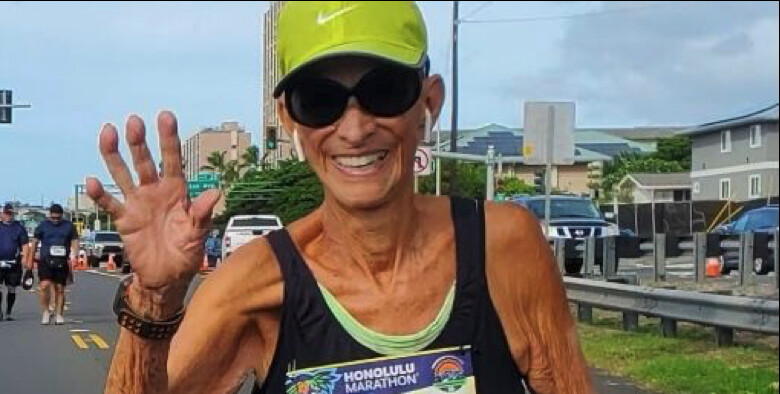
Rain or shine, Allansmith, now 93, runs six days per week all throughout the year, maintaining a training volume of about 36 weekly miles, even on vacation, and steadily increasing her mileage about 18 weeks prior to a marathon.
The retired doctor lives in Koloa, Hawaii, and didn’t start her running journey until she was 46 years old, after a colleague suggested running two miles per day. “I took up running in 1977 and fell in love with the feeling of exercising outside,” she told GuinnessWorldRecords.com. She credits her healthy running lifestyle with her high quality of life, and while her stamina has decreased over time, she’s making the most of what she’s got at any given moment. “I see the direct connection between moving and health,” she said.
The 1982 Boston Marathon was her first experience racing 26.2 miles, but the Honolulu Marathon is her favorite, partly because the race organizers don’t have a time cutoff, so even slower runners have an opportunity to complete the course.
“It’s one of the best-executed races,” she said to Guinness. “Fantastic registration, set up and management makes it a joy to participate in.”
On the day of her world record, Allansmith’s six children surprised her by wearing matching T-shirts denoting their mother’s achievement. “I felt an enormous sense of accomplishment and joy,” she told Guinness.
Allansmith plans to continue running marathons for as long as possible, and hopes to nab some other world records along the way, for other distances like the 10K and half marathon.
(08/05/2023) ⚡AMPby Runner’s World
Expert Strategies for Eating to Boost Energy
YOU SLEPT EIGHT hours, snuck in an early run, and made time to meditate before jumping on your first Zoom call. Still, your brain feels fuzzy all morning. By the time afternoon hits, you’re ready for a long, hard nap. What gives?
Though many factors can influence energy levels, perhaps one of the biggest (and most understated) is your diet, including what you nosh on, how much, and when.

“Everything that we eat can impact how we feel and what we’re able to do throughout the day,” says Amity Lui, MS, RD, a New York City–based sports dietitian who works with runners.
High-quality fueling can mean the difference between navigating life in a fog and consistently crushing your days. Good nutrition can also better your running and overall health, allowing you to exercise with less fatigue, which boosts your performance and decreases risk of injury—all while supporting hormone health, digestion, metabolism, and immune functioning, says sports dietitian Yasi Ansari, MS, RDN, CSSD, spokesperson for the Academy of Nutrition and Dietetics.
In short, there’s a lot to gain from optimizing your eating habits. Here’s what experts recommend.
• Eat often during the day
The trend of intermittent fasting—where people abstain from eating for certain stretches of time—may have health benefits for some, such as those with type 2 diabetes. But what about for runners looking to optimize performance and feel energized? “You really need to have steady fuel throughout the day,” says Selvi Rajagopal, MD, MPH, assistant professor of medicine at Johns Hopkins University School of Medicine. That means no skipping breakfast or “forgetting” to eat lunch.
Rajagopal recommends eating every three to four hours to prevent drastic dips in blood glucose levels, which can lead to plummeting energy levels.
A better bet is to strive for three well-balanced meals spaced throughout the day plus several snacks in between. “Eating consistently is going to make a huge difference,” says Lui, who recommends runners fuel as often as every two hours, or even more frequently if hunger strikes.
• Strive for well-balanced meals and snacks
Carbs are commonly vilified, but they are an essential macronutrient, especially for runners. “Carbohydrates are the number-one source of fuel for endurance runners,” says Ansari, because they get broken down into glucose, which your body prefers to use for energy. Don’t skimp on carbs if you want to avoid fatigue.
At the same time, unless you’re fueling for a run, avoid eating simple carbs by themselves, as that leads to a rapid spike in energy followed by a drop, according to research. Instead, pair carbs with the two other macronutrients: fats and protein. This will help stabilize your blood sugar and provide sustained, steady energy.
Here’s a sample day of balanced fueling, from Rajagopal. Of course, tailor this to your preferences.
Breakfast: Oatmeal with fruit and peanut butter or Greek yogurt
Mid-morning snack: Apple with nut butter or carrots, hummus, and whole-wheat crackers
Lunch: A quinoa, farrow, or brown rice bowl with sweet potatoes, vegetables, and a lean protein, like chicken or canned tuna
Mid-afternoon snack: Cottage cheese or Greek yogurt with granola
Dinner: Half a plate full of veggies, a quarter or third filled with a starchy carb like potatoes, and the last quarter protein
• Refuel after you run–even if you’re not hungry
While the general advice of “eat when you’re hungry, stop when you’re full” can help you eat mindfully, exercise—especially intense exercise—can suppress hunger due to the release of certain hormones and the fact that blood gets diverted from the GI system toward working muscles. In fact, according to a recent poll of nearly 3,000 people on Runner’s World Instagram, 61 percent of respondents said they find it difficult to eat after a long run or hard workout. “It’s really hard to identify if you’re actually hungry immediately after a really hard run,” says Ansari. But waiting to eat can hinder your recovery and lead to a crash in energy, she says. So no matter how you feel postworkout, aim to consume at least a snack within 30 minutes and then follow that up with a full meal within one to two hours later, advises Lui.
If the thought of solid food soon after a hard run makes you queasy, turn to liquid nutrition, like smoothies and protein shakes. Prioritize carbs and protein, and aim for a ratio of 3 grams of carbs to 1 gram of protein following intense training, says Ansari. One of her go-tos is a smoothie with kefir, almond milk, or cow’s milk, 1 cup frozen mango, 1 banana, a scoop of protein powder, and granola or a side of toast and nut butter.
• Load up on micronutrients
High-intensity exercise—ahem, running—can stress your body and lead to feelings of fatigue. However, eating antioxidant-rich foods like fruits, vegetables, and leafy greens in particular can help combat those effects, says Ansari. Antioxidants help to fight free radicals and oxidative stress postrun, aiding in your recovery. To get your dose of these health- and energy-boosting nutrients, incorporate produce into your meals: Eat a cup of fruit at breakfast, have a side salad at lunch, and load up your dinner plate with veggies.
There are several other micronutrients commonly found in fruits and veggies (as well as other foods) worth adding to your plate. While a doctor can help you determine if you have a deficiency and need a supplement, it’s still important to consume foods that contain these nutrients.
Iron: A deficiency in this mineral can lead to fatigue and tiredness, both cognitively and while exercising, says Ansari. Vegan and vegetarian runners may be at increased risk of deficiency, as red meat is one of the best sources of bioavailable iron. Those who menstruate are also at increased risk, says Rajagopal. Increase iron stores by eating leafy greens (spinach, broccoli, and kale), whole grains, nuts, and tofu. Enhance iron absorption by pairing iron-rich foods with those high in vitamin C, such as fruits, bell peppers, and berries, says Lui.
Vitamin B12: Deficiencies can result in fatigue and shortness of breath, says Lui. Vegetarian and vegan runners may be more at risk of low stores, as animal products provide the highest sources. Seek it out in products like meat, fish, and eggs, as well as fortified cereals, whole grains, plant-based milks, and nutritional yeast.
Vitamin D: A deficiency that affects 42 percent of all Americans (not just runners), according to a survey, too little vitamin D can cause fatigue, increased muscle weakness, and pain, says Lui. Eat foods like canned fish, dairy products, and fortified products like plant milks and orange juice. The caveat: It can be hard to get enough vitamin D, says Rajagopal, so you may need a supplement. Again, consult your doctor.
• Avoid making dinner your biggest meal
Dinner is typically the biggest meal of the day, but that doesn’t necessarily support a solid night’s slumber, which is essential for optimal energy. “Most folks sleep better if dinner isn’t the largest meal,” says Rajagopal, explaining that “our bodies don’t digest and metabolize things as quickly in the evening” compared to earlier in the day.
Instead of getting the bulk of your nutrition at dusk, eat consistently throughout the day. Also have dinner about three hours before bed to lower your risk of sleep-harming issues, like acid reflux.
• Have a slumber-inducing evening snack
If you end up feeling hungry between dinner and bed, reach for a small snack an hour or two before snooze time, says Lui, and get strategic about which snack you choose to best support sleep (and thus improve your overall energy). Ansari recommends Greek yogurt with fruit and a side of trail mix—a combo that provides magnesium, a nutrient that in one study of older adults helped them fall asleep faster.
You may also consider foods containing tryptophan, an amino acid that plays a role in the production of serotonin and melatonin, which support the onset of sleep and relaxation, Ansari says. Options include turkey, banana, oats, and tart cherry juice.
WHAT ZAPS YOUR ENERGY
Minimize energy dips by avoiding these foods and habits.
ULTRA-PROCESSED FOODS / Foods high in sugar and low in protein, fat, and fiber can provide an energy jolt if eaten soon before and during a run. But chowing on them in your day-to-day can lead to a rapid spike in energy followed by a slump, says Selvi Rajagopal, MD. Instead, eat snacks that offer macronutrients (carbs, protein, and fat) and fiber, and those low in added sugar, says Rajagopal.
DEHYDRATION / Research shows that as little as 2 percent dehydration can negatively affect performance, says Amity Lui, RD. “Not being adequately hydrated can make the body feel like it’s working harder,” adds Yasi Ansari, RDN. Lui says a good rule of thumb is to check the color of your pee. If it’s the shade of lemonade, you’re hydrated; if it’s akin to apple juice, you need a drink.
SPORTS DRINKS OUTSIDE OF A WORKOUT / Unless you’re hydrating during or after a workout, steer clear of sugary beverages, including sports drinks and hydration aids, says Rajagopal. Instead, consider water with a squeeze of citrus fruit.
UNDERFUELING / When athletes feel fatigued, it can sometimes be because of nutrient deficiencies, but most often, it’s because they simply aren’t eating enough, says Ansari. Research identifies low energy availability as one of the most significant factors associated with illness and injury risk in endurance athletes.
(08/05/2023) ⚡AMPFEEL LIKE QUITTING YOUR RUN?
There are various reasons to want to quit a dreadful run: The weather conditions may not be in your favor, maybe you didn’t get enough sleep, or perhaps you’re sore from previous workouts and now feel sluggish. You know your body is capable of finishing—you’ve been here before—but your brain is just not on board. Unless you’re physically hurt (in which case, you should stop immediately), it’s time to pull some serious motivational self-talk from deep inside your pockets to get in the final miles.
What else helps? Knowing that you’re not alone. It happens to most runners, including Runner’s World staffers and RW+ members alike. They have bad days as well but also their own tricks to turn them around. Here are some of them.

KEEP SPEED UNDER CONTROL
Midrun, usually I’ll just tell myself to slow down for the next mile so I can relax and get back into a groove. What I find always happens is I end up slowing my pace for only a few seconds, maybe a minute, and end up right back at my usual pace feeling okay.
In a race, it’s a different story. I’ll usually force myself to take a look at my heart rate or breathing. If it’s all under control for the given speed, I tell myself that everything is fine and that I have no reason to bail. I’m not big on mantras, personally, so using whatever data I have at hand helps me get past those moments when it gets hard. JEFF DENGATE // Director of Product Testing
GIVE LINGUISTIC ZOOMING A SHOT
I ’m sure you’ve heard about the value of positive self-talk. But did you know that switching the point of view can make a difference? During tough track intervals, I’ve been trying out something called linguistic zooming, which is when you use the second- or third-person point of view to talk to yourself. This creates distance between yourself and the stress you encounter. So instead of saying, “I’m crushing this run. I’m gonna be done before I know it,” I’ll say, “Theo is crushing this run. He’s gonna be done before he knows it.” It’s a little weird at first, but it helps. And if I’m feeling brave, I’ll even talk to myself out loud. I love trying out these cognitive tricks—there’s literally no downside! THEO KAHLER // News Editor
IMAGINE THE POSTRUN FEELING
Take a quick rest, catch your breath, inhale and exhale deeply for a few breaths, do a little scream if you need to, and then tell yourself this: You’ve made the commitment to get out there. How are you going to feel later today if you throw in the towel now? Will your future self like your decision to quit when the going gets tough? No? Then just go! Change the narrative and start daydreaming about how good you’ll feel when you’re finished with the run and attack the rest of the run like it’s your only job in the world. Outrun the voice that tells you to quit. Not every run is going to feel amazing, but you’ll feel amazing at the end of the day knowing that you quieted the voice that said you couldn’t do it. JENNIFER ACKER // Health & Fitness Editor
DO IT FOR YOUR RACE DAY
We all get in the mental game: I’m done, I’m thirsty, my legs feel heavy, it’s too hot, and so many more! I coach my athletes to “run with joy” for every run—not just the glory of the big race. I want them to remember why they run. For me, I keep thinking of the actual race finish. I remind myself that without this effort, I cannot experience the glory of a race day. When training for my marathon two summers ago, while on a 15-miler on a very humid day, I was running the second half as a test. Mile 11 is when the doubt started to set in. I brought on the mindset that if I cannot finish this run, how the heck will I do it on race day? I pushed through successfully and had a good run, smiling in the end. So remember your “why” and let that push you to the finish of every long run. ADAM TILLS // RW+ Member
THINK OF RUNNING AS A GAME
A few years ago, I was caught in a torrential downpour while listening to “The Hero” theme song from the anime series One Punch Man. It reminded me of how my passion for running came from being a gamer, and suddenly I was in love with running in the rain. Why? Because running is exactly like gaming.
In a game, you often encounter enemies when you’re tired of battles/hills, down to your last potion, and ready to rest and heal/head home and drink a protein shake. But face them and you get experience points (EXP) and rewards like weapons and armor. How is pressing on in bad weather or tough terrain any different? It isn’t. ERIN FAN // RW+ Member
FOCUS ON ONE STEP AT A TIME
When training for my first half marathon, I was scared and doubted I could do it. This is what my trainer suggested after one training session: If I get to the point when I feel like quitting, I should stop, breathe, and instead of looking at the finish line, focus on the step in front of me and do what I can to make it the best step possible. We talked about setting points ahead to run toward to give myself smaller challenges. This advice has helped me get through seven marathons, including the time when I cussed my way up the San Francisco hills. So here I am, making those little goals, focusing on making my each next step the best step possible. BONNIE WILSON // RW+ Member
(08/05/2023) ⚡AMP9 Things Every Running Shop Employee Wishes You Knew
Yes, this shoe comes in other colors. No, that doesn’t mean you should buy it.
For two years, I worked at the best run specialty store in Minneapolis-St. Paul, Minnesota. For seven years after that, I worked for a running shoe brand. In that time, I learned there’s a sizable knowledge gulf between folks in the industry and most consumers. Even many consumers who pay pretty close attention to racing and shoe reviews weren’t always up-to-speed on the latest tech, how a certain brand fits or whether they need a neutral. stability, minimal, or trail shoe.
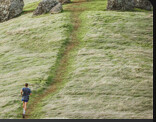
It’s our own fault. Brands create so many SKUs that it can be hard to keep up with each development. Stores stack so many models next to each other on the wall that it can seem impossible to know where to start.
I can ensure you we didn’t keep things convoluted on purpose. On the brand side, we wanted people to feel like they knew enough about our footwear to confidently buy shoes from our website. In the shop, we knew customers appreciated feeling like they were empowered to pick the right pair. If they felt overwhelmed at our store, we knew, they probably wouldn’t come back.
That got me thinking: What else did I wish every runner out there knew about shoes? So I jotted down this list. It’s far from comprehensive. Maybe there’ll be a part two.
Full disclosure: My wife works on the product team for the aforementioned shoe brand. But I think that gives me a valuable window into how brands ideate and produce their products, and I’ll do my best to be objective. Besides, I didn’t consult her on this. To counterbalance this, I’m going to go make some major purchases, also without consulting her!
One person I did consult, since he’s been in the shop game a lot longer than I have, is Jeff Metzdorff, co-owner of Mill City Running and Saint City Running. He will really hate that I called his cross-town rival the best shop in the Twin Cities, but them’s the breaks. In any case, here’s what came up for us.
Your coworker might love Asics. Your run club friend might hate Nike. That doesn’t mean you should buy Asics or avoid Nike. You should try both—and a bunch of others—to see what works for you. (FYI: Sizing can be different from brand to brand, so don’t be alarmed if you’re a full size bigger or smaller than you thought, or even a full size different from brand to brand.)
Every set of feet is different, and shoe choice is highly individual. Anyone who tells you with broad strokes to avoid or buy any one brand across the board might mean well, but they’re probably wrong. (And if they’re right, it’s a coincidence.)
So how do you know if a shoe is for you? It’s simple—if it’s comfortable when you put it on, there’s a really good chance it’ll serve you well. Shoes shouldn’t require a break-in period to feel good. (This is in addition to other considerations you should address before you’re trying them on, like whether the tread pattern will be sufficient for the surface on which you plan to run.)
Not to get all hippy-dippy, but your body is a pretty good judge of this sort of thing—and the (albeit very limited) science seems to agree.
They can absolutely contribute, to be sure, but it’s also tempting (and lazy) to point the finger to shoes alone when injuries happen. They’re part of an ecosystem that includes individual mechanics, stressors, your training, and other factors.
Being in the wrong pair of shoes won’t help your odds of avoiding injury, but if you’re in the wrong pair, you won’t blow out your knee in the first few steps. You’ll get some warning signs before an injury, so make sure you heed them if they appear.
Things like ramping up your mileage too quickly, or neglecting ancillary strength and mobility, probably play a bigger role in injuries than shoe choice alone. You’re not Indiana Jones trying to pick out the Holy Grail, so don’t stress too much.
All it often means is that the shoe contains more physical material like midsole cushion, or more expensive material like carbon fiber, and therefore was more expensive to produce. That doesn’t mean the $200 shoe won’t work for you, but don’t rule out the $130 shoe on this basis alone.
I’ve already covered this on the brand front—that just because your favorite athlete wears Hoka or On doesn’t mean you should—but this applies to shoe type, too. A lot of pros train and race in shoes that are lighter-weight and lower-profile than many of us should be using. They tend to be lighter, more efficient, and in more dire need of shedding ounces. (It’s their job to go fast, after all.) If you try and wear road racing flats in a 100-mile trail race because your favorite pro did it, there’s a good chance you’ll regret it after mile 50.
Of course, there are exceptions, but a lot of pros know very little about the shoes and brands they’re endorsing. So take those endorsements with a grain of salt.
“I need support.” I’ve heard it a thousand times, and I was only working the floor for two years. “Support” can mean more cushion. It can mean more medial stability, designed to mitigate overpronation. For a handful of people, it means the feeling that the arch is hugging the bottom of their foot when they step into the shoe. The list goes on.
Cushion can be good if it’s more comfortable for you – but an ultra-cushioned shoe won’t necessarily prevent injury at a higher rate than its more moderately-cushioned peers.
Medial stability is something pronators might need, although there’s been a move away from overtly-prescriptive footwear in favor of “inherently stable” shoes that work for a broader variety of folks in the last decade or so. (A shop employee should be able to help you decide whether you want a stability shoe.)
As for the arch, an insole that hugs the foot tightly might feel good at the outset, but it could be a one-way ticket to blister city. (Earlier I noted that comfort is king, but here’s one case where comfort now doesn’t necessarily translate to comfort later. Just don’t view arch-hugging fit as a dealbreaker.)
So, are you sure you need “more support,” whatever that means to you? Try some shoes on and find out!
I know, I know. They ruined your favorite shoe. Or even worse, they discontinued it. I certainly won’t try to convince you that the last model didn’t fit you just a little better, or feel a little more right. And this probably won’t ease the pain. But I can assure you that brands aren’t updating their shoes arbitrarily, or—as conspiratorially-minded YouTube reviewers occasionally insinuate—for marketing alone.
When a new shoe hits the market, the brands get a deluge of feedback from customer reviews, media reviews, store staff, and reps in the field. It’s too wide, it’s too narrow, the upper rips after 100 miles—stuff they would’ve liked to catch in testing, but didn’t until their sample size was the entire marketplace.
From the noise, some signals emerge, and they’ll chart a plan to address the most consistent pieces of feedback. It might be delayed by a model, because it’s usually a 12- to 18-month process to brief, build, and iterate a shoe before it launches. So the fifth version of a shoe often addresses the feedback they hear from the third version, for example.
That doesn’t mean you’ll like the new version as much as the old one. It would be ideal if everyone loved every update, but that’s not realistic, so the brands’ big bet is that more people will prefer the new version. That’s just business.
Does that mean they always get it right? (Stares at a pile of unused Hoka Clifton 2s in the corner.) Heck no. But they aren’t doing it just to mess with you. And let’s be real—sometimes your old favorite wasn’t quite as perfect as you remember it.
Where are you now, guy who took that size 8 Brooks Dyad off the wall, squeezed your toes into it, and declared: “This doesn’t fit!” without remorse? Did you think that ruled out the Dyad entirely? Did you tell your friends that Brooks shoes are too narrow? Did you not think we had a size 12 in the back that you could try on? Did you wonder why there was only one shoe, and where the matching half was? I think about you often.
And no, we don’t mind checking for you. If getting the color you want means you’re more likely to run, we’re more than happy to help.
To that end, we know it can be a touch intimidating to make your first run specialty visit. A display wall brimming with technical-looking choices and a floor staffed by serious (nutritionally- and sleep-deprived)-looking runners.
But, don’t be scared. Don’t worry about saying the wrong thing. Good shop staff meets you where you’re at, and wants to help get you on your way to enjoying a new pair of shoes. With any luck, you’ll turn into a lifelong runner and a lifelong customer.
You see, the stores need you more than you need them. If any staff treats you otherwise—and I know it happens—go shop at their competitor across town.
(08/05/2023) ⚡AMPby Outside online
New to Pacing? Three Expert Running Pacers Share Their Best Practices.
acing at long distance running events is common in North America, but it can also be intimidating. Here are seven essential tips from veteran ultra athletes. Emily’s stomach had definitely gone south. She couldn’t keep anything down, vomiting every few steps. Her pacer Buzz Burrell, a fixture in the ultra scene, had encouraged various forms of nutrition and drink with a side of optimism—it’s just a rough patch, aid station’s in a half-mile, the sun will be up soon. After all, that was his job, right? To lend the moral, emotional, and logistical support Emily needed to get to the finish line.
But when the hurling continued, he got out a flashlight and inspected the latest effluent. “It was blackish red, like a stomach lining,” he noticed. “And that’s when I said to my runner: ‘You know, I don’t think we ought to do this.’”
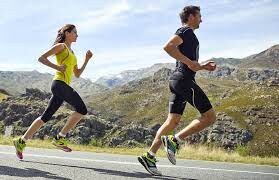
While that scene might be uncommon, it’s an example of the dire scenarios a pacer might encounter during an ultra-distance race. A pacer may need to be prepared to play all sorts of roles in service of helping a runner achieve their goals, even if it means knowing when to call it quits. They can be cheerleaders, drill sergeants, nutritionists, aide-de-camps, trail doctors, raconteurs, and comedians. It’s an art, one that requires close communication between pacer and runner.
While pacing is uncommon in European ultras (it’s not permitted in UTMB races, for example), it is a frequent feature in the U.S. Both on the track and in marathons, pacers are in from the start and step off somewhere halfway, but those who are pacing an ultra usually pick up their runner after the halfway point and accompany them for some or all of the last part of the race.
Some purists argue that the psychological advantage of having clear-thinking, uplifting company in the later stages contravenes the spirit of the endeavor, while others find it a way for friends or family to share in what might otherwise be a time-consuming and self-centered undertaking.
The practice of pacing originated as a safety precaution—race directors didn’t want runners to get lost or collapse out on the trail alone. The 345 percent increase in participation in ultras over the last twelve years guarantees that, while some runners are very experienced, there’s also an influx of neophytes who could benefit from the company of a pacer. And yet, at the same time, there’s a contingent who have never worn a pacer bib.
For those new to pacing, or some of us who have been thrown into the fire to pace a friend without any guidance, here are seven essential insights on the art of pacing from a few of the sport’s veteran pacers. Unsurprisingly, these three pacing pros are also experienced ultrarunners. In fact, it’s been suggested that pacing is an excellent way to learn the tricks of the trade before signing up as a competitor.
After interviewing these three experts, several themes emerged on what to expect when pacing a runner, and how to prepare and execute on your responsibilities:
Buzz Burrell: “You might be trudging along while your runner is throwing up, but I put a different spin on it. As a pacer, I’ve skipped the first 50 miles of the race, which means I’m feeling good, walking into aid stations, eating sandwiches. I haven’t paid a thing for this race! As a pacer, I can enjoy the beauty of the course. This runner might be a dear friend of mine, and I want to help him, but I’m also a free food kind of guy.”
Justin Grunewald: “I think the most common reason is to help someone you care about conquer their demons, and get from point A to point Z. For me, Tyler [Green] is a friend, but he’s also hugely accomplished. I learned so much from him by pacing, I think I could take 30 to 60 minutes off my time from what I learned from pacing.”
Nicole Bitter: “To be a part of a loved one’s attempt at achieving a goal, that’s almost better than if I did it myself. Some people can’t run 100 miles or don’t want to—pacing is a way to share in the experience. A lot of people find fulfillment in pacing, maybe more so than racing.”
BB: “This is critical. It’s not just two friends saying ‘Let’s go for a run together.’ First, discuss goals. Talk about possible scenarios.”
JG: “We talked about Tyler’s objectives. He’d finished second and fourth at States in past years and was completely overlooked as a top finisher this year, so he really wanted to go for it. He had dropped his pacer before, so he wanted someone who could go 32-33 miles. We talked about his intricate cooling routine and how it was going to go at aid stations.”
NB: “It’s critical to understand your runner and what makes them tick. I love to talk when I have a pacer. I want them to tell me funny stories, what happened earlier in the day. Some people don’t want to talk; they’re just in the zone.”
BB: “Be well-fed and well-hydrated, and know when your start time will be. Never become part of the problem; don’t be a liability. Know the pacer rules, like no physical assistance. Usually “muling”—carrying your runner’s food or gear—is not allowed, though it is at Leadville, so be aware of the rules. Know the course, the aid stations, and cut-off times.”
JG: “At Western States, cooling is 15 percent of the race, so everything had to go right at aid stations. Typically, about a half-mile out from an aid station, I’d ask what he wanted to drink. I’d get Coke, ice cubes, water in one bottle, Tailwind in the other.”
NB: “Make sure you and your runner are a good fit, that you’d want to spend some time with this person. Be confident you can cover the distance you’ll be pacing easily. Take care of yourself or you won’t be equipped to pace.”
BB: “It’s unlikely your runner will be feeling great. They may be sick. They may be on a bummer. It might be hot or stormy. I tell first-timers: ‘You feel bad. So does everybody else. This is what it looks like.’”
JG: “They might be too mentally fatigued to know what they need. Tyler told me his arms were numb, which told me he needed electrolytes. Hyponatremia and dehydration are really tricky to differentiate, but, in my experience, they almost always need more electrolytes.”
NB: “Expect the unexpected. You don’t know what could happen. You might not even get the chance to pace if your runner drops out. Keep a positive outlook, and be a problem-solver.”
BB: “The first-time runner needs stability, support, and mild encouragement. Remind them to start eating and drinking 45 minutes into it. Don’t wait until your stomach starts to go. The veteran probably knows this so you can get into actual pacing, behind or in front of them, moderating the ups and downs. For someone who just wants to finish, concentrate on putting one foot in front of the other.”
JG: “Normally, Tyler takes it out slower and picks people off, but this time the theme was ‘no regrets,’ so I reminded him of his objectives, of who he is, of how proud his family will be. He ran in front of me so I wouldn’t distort his view of rocks and roots.”
NB: “It’s nuanced. My husband is competitive so I usually talk about how we need to catch that runner in front of us. The hunt mentality. Or if we need to pick it up, I joke, ‘Wow, are you keeping up with me?’ Some races, like Western States, are dialed in to the tech, and can feed the pacer info on how far ahead or behind their runner is.”
BB: “‘It’ll be fine’ is our mantra, as long as it’s just a mental or emotional low. You can always come back from that. I’ve had runners say, ‘I’m out. I can’t do this.’ I have them sit down, take some deep breaths, let their heart rate come down. Heck, you can take 30 minutes at an aid station, change your socks, and march back out.”
JG: “I told him [Tyler Green] he was looking great. He hit a rough patch, so we focused on hiking 10 steps, running 10 steps. Relentless forward progress. I’d tell him things like, ‘In 800 meters there’s a downhill.’ Late in the race, no one wants to eat, so I kept thinking of what’s going to sound good, to get in some calories.”
NB: “My husband is usually in the zone, not talking, but he enjoys when I tell him stories and point out nice views.”
BB: “Personally, I’m always going to protect my runner’s health first. Finishing is second. There are thousands of stories of people getting through awful circumstances, but I’m not going to encourage them to go on if I think it’s damaging to their health.”
NB: “In the 2016 Western States, my pacer called my day. I had hyponatremia and we didn’t feel it was safe. It’s good to have a close friend make those tough calls.”
Being a good pacer is perfect training for becoming an accomplished ultrarunner. All of our expert pacers routinely switched roles in their many years in the sport. And for those new to the sport, pacing is a great way to dip your toes before actually signing up for a long-distance race. Regardless of whether you ever intend to go the full distance or not, the many roles of the pacer make for a rich, fulfilling experience.
(08/05/2023) ⚡AMPby Outside Online
South Africa’s fastest sprinter receives six-year doping ban
On Friday, the South African 100m record holder, Carina Horn, received a six-year ban from all track and field competitions due to her second doping offense in the last four years. The Athletics Integrity Unit (AIU) confirmed that Horn tested positive for clenbuterol, a prohibited substance, at a track meeting in Spain in June 2022.
Both Horn’s A and B samples tested positive for clenbuterol, a steroid known for enhancing athletic performance by increasing the body’s metabolic rate. This marks her second doping violation after a previous suspension in September 2019 for testing positive for ibutamoren and ligandrol. Horn proclaimed her supplements were contaminated, which led to a reduced suspension of two years instead of a potential four-year ban.
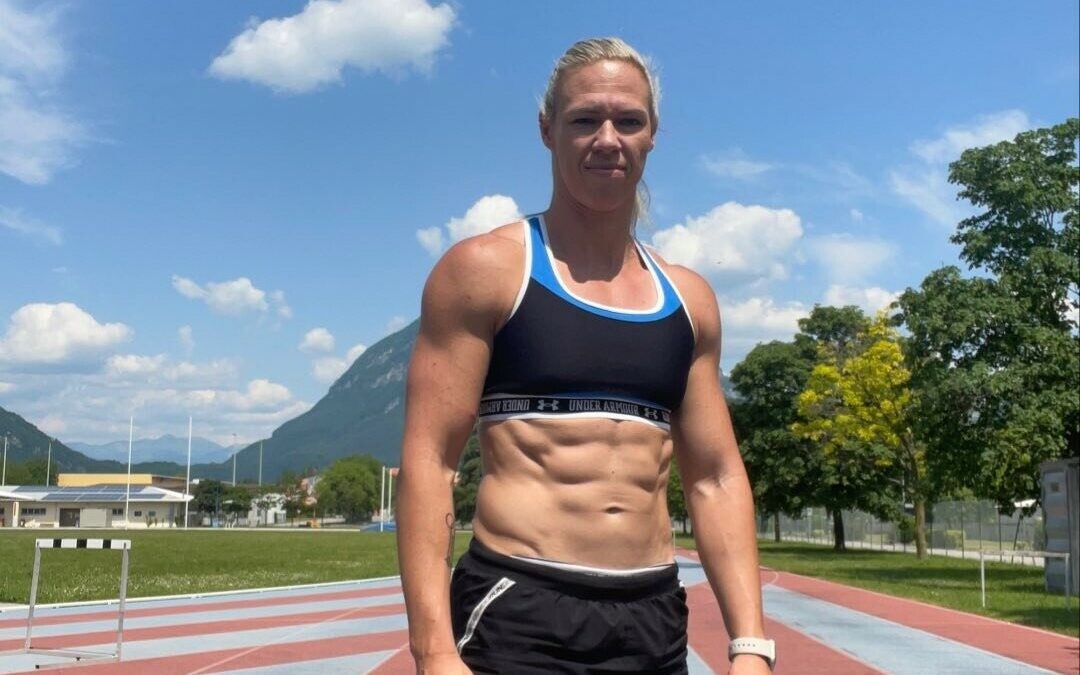
As a consequence of the recent violation, all of Horn’s results after June 18, 2022, have been DQ’d, including victories in several World Athletics Continental Tour events and a South African national championship in the 100m.
In 2018 Horn became the first South African woman to break the 11-second barrier in the 100m with a time of 10.98. However, her career now faces a significant setback, as she will be ineligible for competition until 2029.
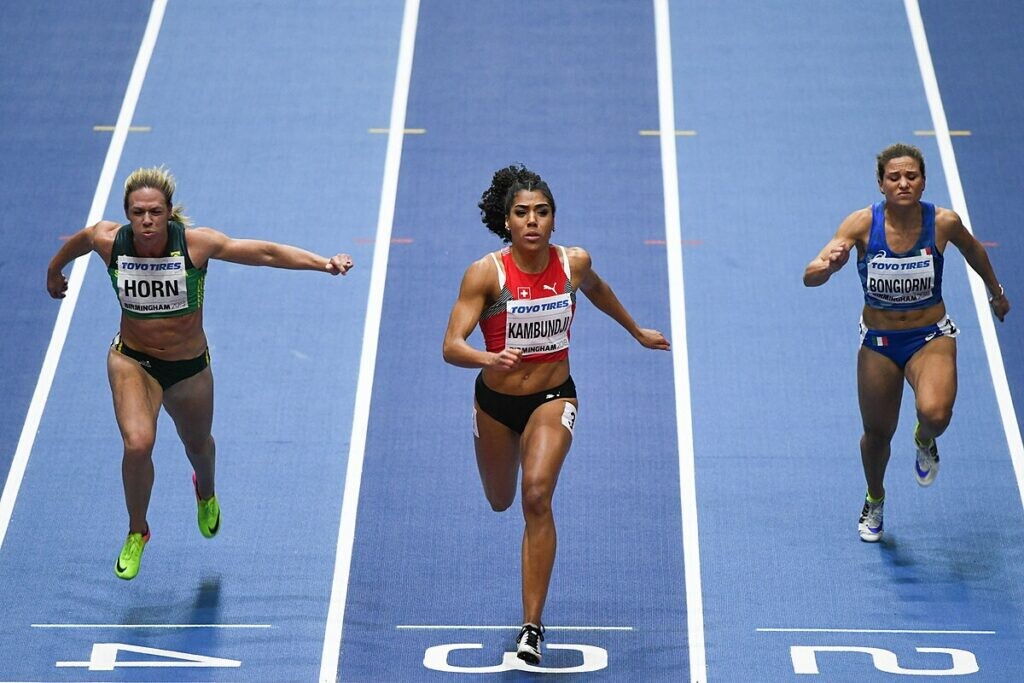
Following her previous ban, Horn came back to represent South Africa in the women’s 100m at the 2022 World Athletics Championships. Additionally, she won a bronze medal in the 100m at the 2022 African Championships in Mauritius, just two weeks before her positive test in Spain. Throughout her senior career, Horn has been the top female sprinter for South Africa, participating in five world championships and the Rio 2016 Olympic Games.
She has also earned accolades such as 4x100m relay gold and 100m silver at the 2016 African Championships in Durban, South Africa.
(08/04/2023) ⚡AMPby Running Magazine
Runners: alleviate your knee pain with these strength exercises
As any runner knows, knee pain can be a bothersome and common issue, and it can interfere with performance. Often, it’s tempting to ignore the pain and overlook the potential consequences, but neglect will only make things worse. One of the most common reasons for developing knee pain is neglecting foot and ankle mobility, which can increase stress on the knee joints.
David London, a registered physiotherapist at The Runners Academy in Toronto, shares several exercises to help you alleviate your knee pain and strengthen lower leg mobility. “You have to be proactive to get the most out of your body,” says London. “Being proactive translates to better running.”
“If you have no range of motion in these areas, your knees will take a beating,” London points out. “A way to test your range of motion is by doing a few deep squats. You want to be able to fully go down without discomfort.”

In the video, London sheds light on issues such as improper form, overuse and muscle imbalances, sharing insight and demonstrating several leg-focused exercises to address discomfort and strengthen muscles around the knee.
“Strong hip muscles, including the glutes, hip abductors and hip flexors, help stabilize the pelvis and stress on the knees while running,” says London. “Ankle mobility is also crucial for distributing forces evenly throughout the lower extremities.” Strong and well-balanced hips and ankles can contribute to helping the lower body move more efficiently.
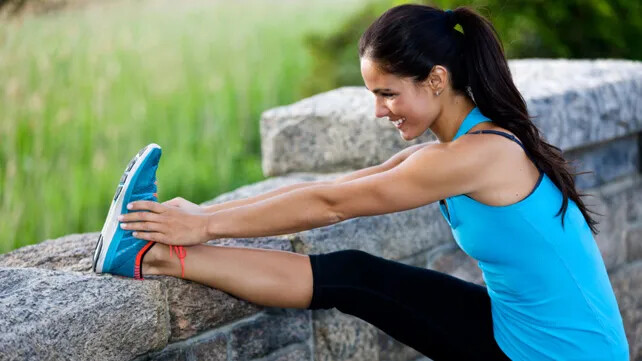
Adding a short routine that focuses on strengthening and mobilizing the hips and ankles is essential for preventing injuries and enhancing your running performance. London notes that just giving attention to these areas can help with pain-free running and efficient movement throughout their lower body, protecting the knees in the process.
David London is a 28-year-old registered physiotherapist at The Runners Academy in Toronto who studied nutritional science at the University of Toronto, then completed an MSc in physiotherapy at Dalhousie University. He is an avid runner, soccer and ultimate player, with the goal to promote an active lifestyle.
(08/04/2023) ⚡AMPby Marley Dickinson
Olympic champion Athing Mu doubtful for 2023 World Athletics Championships
Defending 800m champion Athing Mu is contemplating the possibility of forgoing the 2023 World Athletics Championships to concentrate her training efforts on preparing for the Paris 2024 Olympics.
The Tokyo 2020 Olympic gold medalist finished second in the 1,500m at the U.S. National Trials last July, behind Nikki Hiltz. Despite this, she declared her intention to focus on the 800m in Budapest.
However, on Wednesday (2 August) her coach Bobby Kersee said Mu’s participation in the Worlds is still a decision they are mulling over.
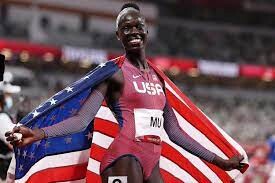
“It’s in our control if we decide we’re just going to go ahead and train through this year and focus on next year, then that’s what we’re going to do,” he told LA Times.
“The training is going well but our thought process, openly, is that we’re going to just train here in L.A. for the next two weeks and the next time she gets on the plane it’ll either be on vacation or to Budapest.”
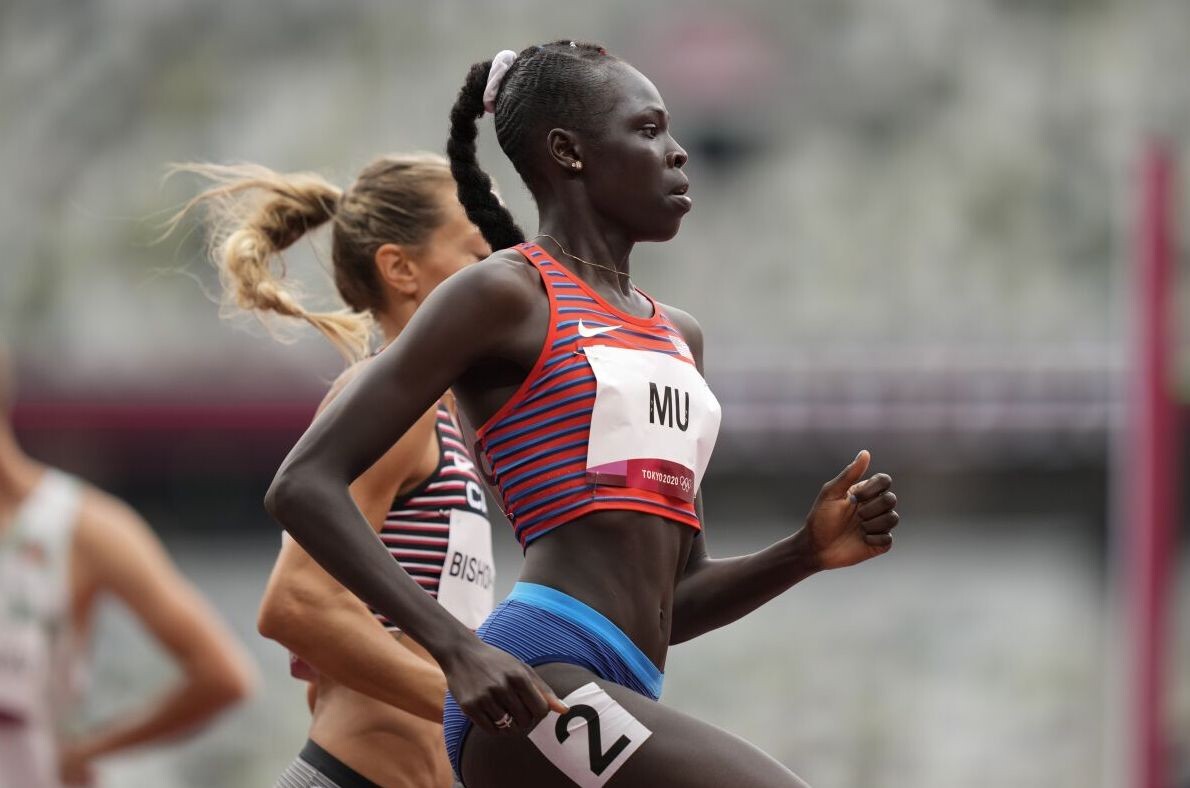
The 21-year-old, who won the 800m gold in Oregon last year, has even withdrawn from a build-up race at the Ed Murphey Classic in Memphis, Tennessee. Mu was initially scheduled to compete in the 400m this weekend.
Throughout this season, she has only participated in three races: the 800m race she triumphed in at the NYC Grand Prix in June, as well as the 1,500m qualifying race and final at the U.S. Championships.
Should she decide not to compete in Budapest, Team USA, which has the opportunity to field four runners, will feature Nia Akins, the Trials winner, along with Raevyn Rogers and Kaela Edwards, who secured second and third positions, respectively.
Mu's absence will elevate Olympic and world silver medalist Keely Hodgkinson of Team GB, as well as Kenya'sMary Moraa, the reigning Commonwealth Games champion and third-place finisher at the 2022 Worlds, as the favorites for the gold in Budapest.
(08/04/2023) ⚡AMPWorld Athletics Championships Budapest 23
From August 19-27, 2023, Budapest will host the world's third largest sporting event, the World Athletics Championships. It is the largest sporting event in the history of Hungary, attended by athletes from more than 200 countries, whose news will reach more than one billion people. Athletics is the foundation of all sports. It represents strength, speed, dexterity and endurance, the...
more...92-year-old grandmother becomes oldest woman to finish a marathon
A grandmother has officially run her way into the Guinness World Records as the oldest woman to complete a marathon. Mathea Allansmith of Koloa, Hawaii, has had her record-breaking run at December’s Honolulu Marathon ratified, an effort that saw her complete the 42.2-km distance in 11 hours, 19 minutes and 49 seconds minutes at the age of 92 years and 194 days. She completed the course in 10 hours and 48 minutes at age 91 the previous year.
Allansmith, who has since turned 93, told Guinness World Records this week that she hasn’t slowed down since her record-breaking run in Hawaii. “I train year-round but increase the mileage starting 18 weeks before a marathon,” she said. “
The pace and number of miles per training day are going to shift around but no matter what, I’ve got my running shoes on and I’m out the door six days per week. These days, on average, I run 36 miles per week.”

The retired doctor, who began running at age 46, noted her career as a physician drove home the benefits of a healthy diet and an active lifestyle on body and mind. “I see the direct connection between moving and health. … I’d say that my healthy lifestyle has allowed me to maintain a very high quality of life,” she said.
Adding to the thrill of breaking the world record, she said, was being able to do it on a course she so enjoys. “The Honolulu Marathon is my favourite marathon, partly because they don’t close the gate at a certain time, which allows even the slowest runners to finish the race. It’s one of the best-executed races. Fantastic registration, set up and management makes it a joy to participate in,” said Allansmith.
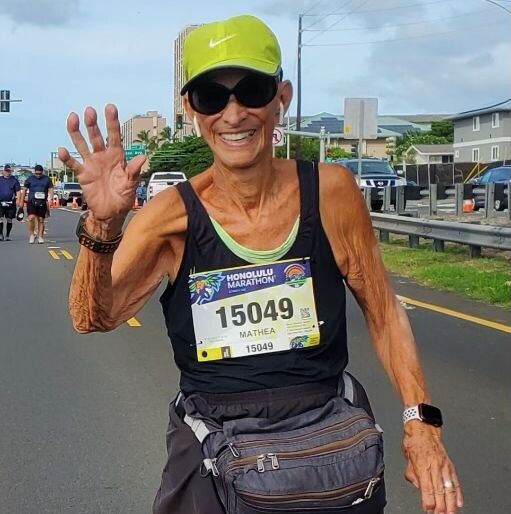
“There were several groups of people filming and cheering me on, even though I crossed the finish line some 11 hours after the start of the race. I felt an enormous sense of accomplishment and joy.”
Allansmith said she plans on running marathons for as long as possible. She added she hopes her recent world record won’t be her last, noting she plans on attempting to break the records for the oldest person to complete a 10K (female) and the oldest person to complete a half-marathon (female) within the year.
(08/04/2023) ⚡AMPby Paul Baswick
Honolulu Marathon
The Honolulu Marathon’s scenic course includes spectacular ocean views alongside world-famous Waikiki Beach, and Diamond Head and Koko Head volcanic craters.The terrain is level except for short uphill grades around Diamond Head. ...
more...Stacy Ndiwa debuts World Marathon Majors in Chicago
Seven months after winning the Los Angeles Marathon, Stacy Ndiwa will be returning to American soil in search of her first World Marathon Majors title at the Chicago Marathon on October 8.
The former Commonwealth Games 10,000m silver medalist, will be up against top marathon runners across the world led by the defending champion Ruth Chepngetich.
Chepngetich has a personal best of 2:14:18. Another Kenyan Joyciline Jepkosgei (2:17:43) will also be competing.

Ndiwa, who is now training in Iten, said her preparations are in top gear and she is hoping to return good results.
“This will be my first time to compete in World Marathon Majors and I am ready for the world,” she said.
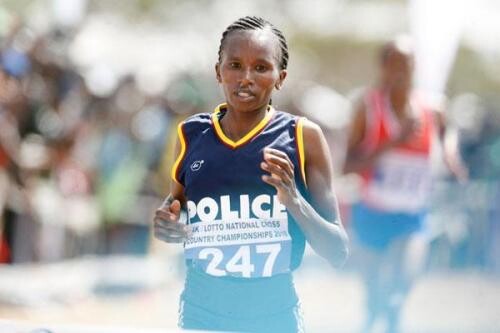
The former Africa 10,000m champion made her debut in the 42km race last year, placing fourth at the Istanbul Marathon in 2:31.53 and went ahead to win the Los Angeles Marathon in 2:31.00 in March last year.
In May, Ndiwa won the second edition of the Iten 15km Road race and went ahead to finish second at the Boston 10km in 31:25 behind champion Hellen Obiri (32:21) with Sheila Chepkirui (31:27) third in an all-podium Kenyan sweep.
“This time, I have had a very busy schedule and I need to crown it all by posting better results in Chicago,” said the athlete who compete for the National Police Service.
“This will be an avenue for me to enter into the big marathon big league. Competing at the World Majors Marathon is not a walk in the park and I really need to work hard,” she said.
Others in the race will be the Ethiopian quartet of Genzebe Dibaba (2:18:05), Tigist Girma (2:18:52), Sutume Kebede (2:18:12) and Ababel Yesheneh (2:20:51).
Emily Sisson (2:18:29) will lead the home team consisting of Des Linden (2:22:38), Emma Bates (2:23:18), Aliphine Tuliamuk (2:24:37), Nell Rojas (2:24:51), Molly Seidel (2:24:42), Dakotah Lindwurm (2:25:01), Sara Vaughn (2:26:23), Gabriella Rooker ( 2:27:38), Diane Nukuri (2:27:50) and Maggie Montoya (2:28:07).
Reigning London Marathon champion Sifan Hassan (2:18:33) from the Netherlands will also be in the contest.
(08/03/2023) ⚡AMP
by Emmanuel Sabuni
Bank of America Chicago
Running the Bank of America Chicago Marathon is the pinnacle of achievement for elite athletes and everyday runners alike. On race day, runners from all 50 states and more than 100 countries will set out to accomplish a personal dream by reaching the finish line in Grant Park. The Bank of America Chicago Marathon is known for its flat and...
more...Unleash Your Inner Runner on These Five Amazing California Trails
California boasts some of the most stunning trails in the world. The correct jogging trail can make all the difference in your training, whether you are a seasoned pro or a novice. The topic of staying active and sports, in general, has never been more prominent at present, especially with the sun shining and the new NFL campaign right around the corner.
Numerous well-known online bookmakers have made an effort to profit from this popularity by offering a variety of casino slots for sports fans. Soccermania, a game geared toward football lovers, may be something you'll like if you're eagerly anticipating the aforementioned return of the sport.
The slot game allows you to choose from the 2022 World Cup teams, transporting you into the world of football through immersive animations. And following a run in the scorching California sun, such games may prove to be the ideal way to unwind.
But if you frequently go for runs in California, which routes should you be considering? In this article, we'll explore some of California's best running trails and give you all the information you need to choose the ideal running location for you.
Muir Woods Trail in Marin County
Muir Woods Trail in Marin County is truly a runner's paradise, with countless reasons why it's considered one of the best running spots. A standout feature is the stunning scenery, as you'll be surrounded by majestic redwoods, providing an awe-inspiring view that is unparalleled. The trail itself is well-maintained, ensuring easy navigation without the risk of getting lost in the forest. Moreover, you'll enjoy a peaceful and serene experience, away from the hustle and bustle of the city, as traffic is minimal along this route.
Mount Tamalpais State Park in Marin County
Mount Tamalpais State Park offers a breathtaking perspective of the San Francisco Bay Area, and the trail network caters to runners of all abilities with a variety of terrains and challenges. The legendary Dipsea track, a strenuous and beautiful track that extends 7.4 miles from Mill Valley to Stinson Beach, is available for running.
As an alternative, consider hiking the routes that lead to picturesque viewpoints like Mount Tamalpais' East Peak or West Peak. The opportunity to run in the shadow of old-growth redwood trees is one of the special features of this state park. Take your running gear, then, and head to Mount Tamalpais State Park for a memorable and beautiful running experience.
Bay Area Ridge Trail
375 miles of the San Francisco Bay Area's slopes and hillsides are traversed by the Bay Area Ridge Trail. If you are looking for a challenging workout, this beautifully maintained trail starts in an urban setting, but quickly enters stunning natural landscapes. You can enjoy stunning Bay Area views while running this track, and if you're lucky, you might even spot some wildlife. Although the route is accessible year-round, the greatest seasons to go are winter and spring when the mountains are covered in wildflowers.

Griffith Park in Los Angeles
Griffith Park boasts an extensive network of trails, catering to both beginners and seasoned runners. The awe-inspiring views of the Hollywood Hills and the bustling cityscape serve as a remarkable source of motivation during your run. Not to mention, the park is also home to notable landmarks like the Griffith Observatory, allowing you to blend your workout with a touch of culture and immerse yourself in the park's natural splendor.
Moreover, Griffith Park offers a range of amenities, including water fountains and restrooms, ensuring that runners can stay refreshed and hydrated throughout their workout. It's no surprise that Griffith Park is widely regarded as one of SoCal's most scenic and accessible spots for a satisfying run.

Santa Monica State Beach in Los Angeles
Santa Monica State Beach is the ideal location for you if you enjoy running by the sea. The Pacific Ocean delivers a pleasant, invigorating air as you run down the three miles of white sand beach. You may see some famous sites while running along the beach, including Venice Beach, Muscle Beach, and the Santa Monica Pier. The best time to go is in the winter to avoid the crowds and the scorching temperature, although a run at dusk in the summer is as amazing.
Conclusion
Going to the trail and running your heart out is a fantastic way to stay in shape while being immersed in nature. The five trails described throughout this article are all great places for long runs on varied terrain. With the combination of mountainous regions, beach sides, and scenic city views, there’s something for everyone in California.
In whatever trail you choose to indulge in, remember that every step will bring you closer to unwinding from the stresses of everyday life and closer to becoming one with nature. So put those running shoes on and unleash your inner runner today!
(08/03/2023) ⚡AMPAmputee ultrarunner Jacky Hunt-Broersma takes on 5,250 kilometer challenge for cancer research
Bladerunner Jacky Hunt-Broersma celebrated being 21 years cancer-free by setting out on a new challenge: the Arizona-based athlete and coach will be running a half marathon a day (21.1K a day) from Aug. 1 until she reaches 5,250 kilometers. Aug. 1 is both the athlete’s amputee anniversary and marks 21 years of being cancer-free, she shared on social media, and this challenge is to honor cancer survivors, those fighting cancer and those who have lost their lives.
Dubbed the ‘Doing Hard Things’ project, Hunt-Broersma chose the distance to represent the number of people fighting cancer each day.”I had Ewing sarcoma,” the runner shared. “I was one of the lucky ones to survive and I’m so grateful to be alive and be able to move. I think movement is so important to not only keep us healthy but also help us cope mentally.”
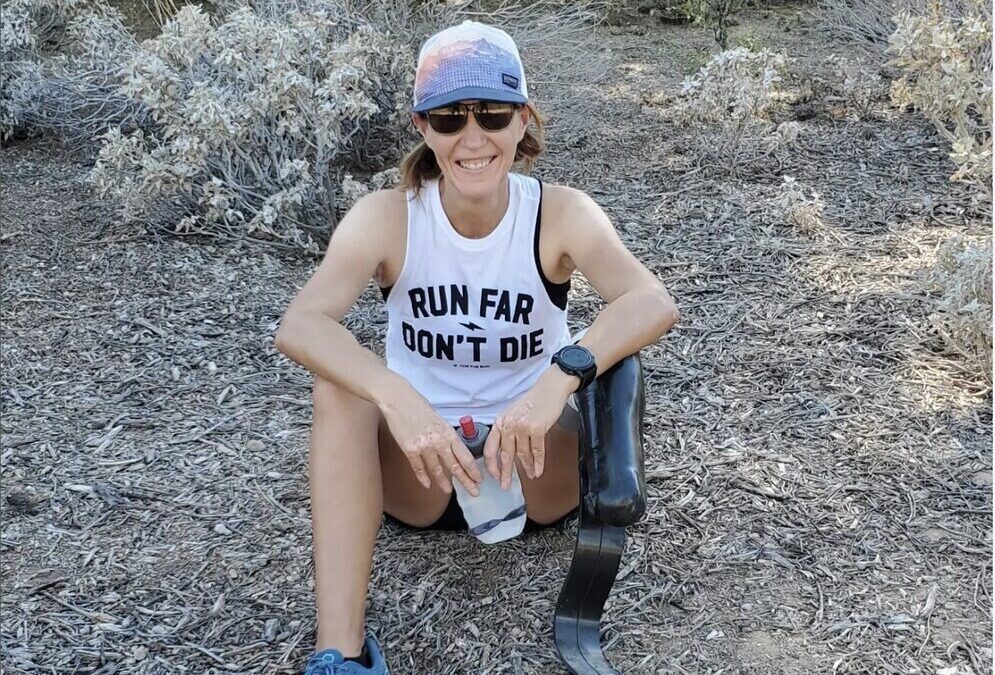
Hunt-Broersma is raising funds for cancer research and will be dedicating each day to someone fighting cancer or who has lost their life to the disease, and guesses it will take her about 250 days to complete the distance.
Hunt-Broersma lost her lower left leg to Ewing sarcoma, a rare form of cancer that affects the tissue around bones, in 2002. While she always lived a healthy lifestyle, she didn’t start running until 2016, when she signed up for a 5K race. Taking on challenging adventures is not new for Hunt-Broersma: she ran 104 marathons in 104 days in 2021, raising over $200,000 for amputee runners, and ran 50K a day for two weeks in July 2022.

The name of her latest project comes from a phrase that carried her through her 104 marathon streak. “When I was running the 104 marathons in 104 days I’d often need encouragement and I’d whisper to myself ‘you can do hard things’ to keep me going when it got really hard,” she explains. “At one point during the marathons, I started believing in myself and that whisper changed to a louder mantra: ‘I can do hard things, I can do hard things.’ ”
The athlete invites runners and walkers of all levels to come out and join her on her daily half-marathon, and will be sharing the location and times of her runs on social media. Runners can show their solidarity from afar by joining the Strava group she has created, called “I can do hard things.” Hunt–Broersma wants everyone to feel included, she shared on Instagram. “I’m hoping it will create an encouraging space where everyone will feel welcome.”
(08/03/2023) ⚡AMPby Keeley Milne
Defending champions Fraser-Pryce and Jackson lead Jamaican team for WCH Budapest 23
Sprinters Shelly-Ann Fraser-Pryce and Shericka Jackson, the defending champions at 100m and 200m respectively, feature on Jamaica’s team for the World Athletics Championships Budapest 23 on August 19-27.
The duo filled the top two places in the 100m and 200m in Oregon last year, with Jackson taking silver in the 100m and Fraser-Pryce finishing runner-up in the 200m. Fraser-Pryce, who has competed sparingly this season due to a slight injury earlier in the year, will be vying for a historic sixth world 100m title.
World leader Rasheed Broadbell and Olympic champion Hansle Parchment have both been named in the men’s 110m hurdles, while world leader and world U20 record-holder Jaydon Hibbert will contest the triple jump.
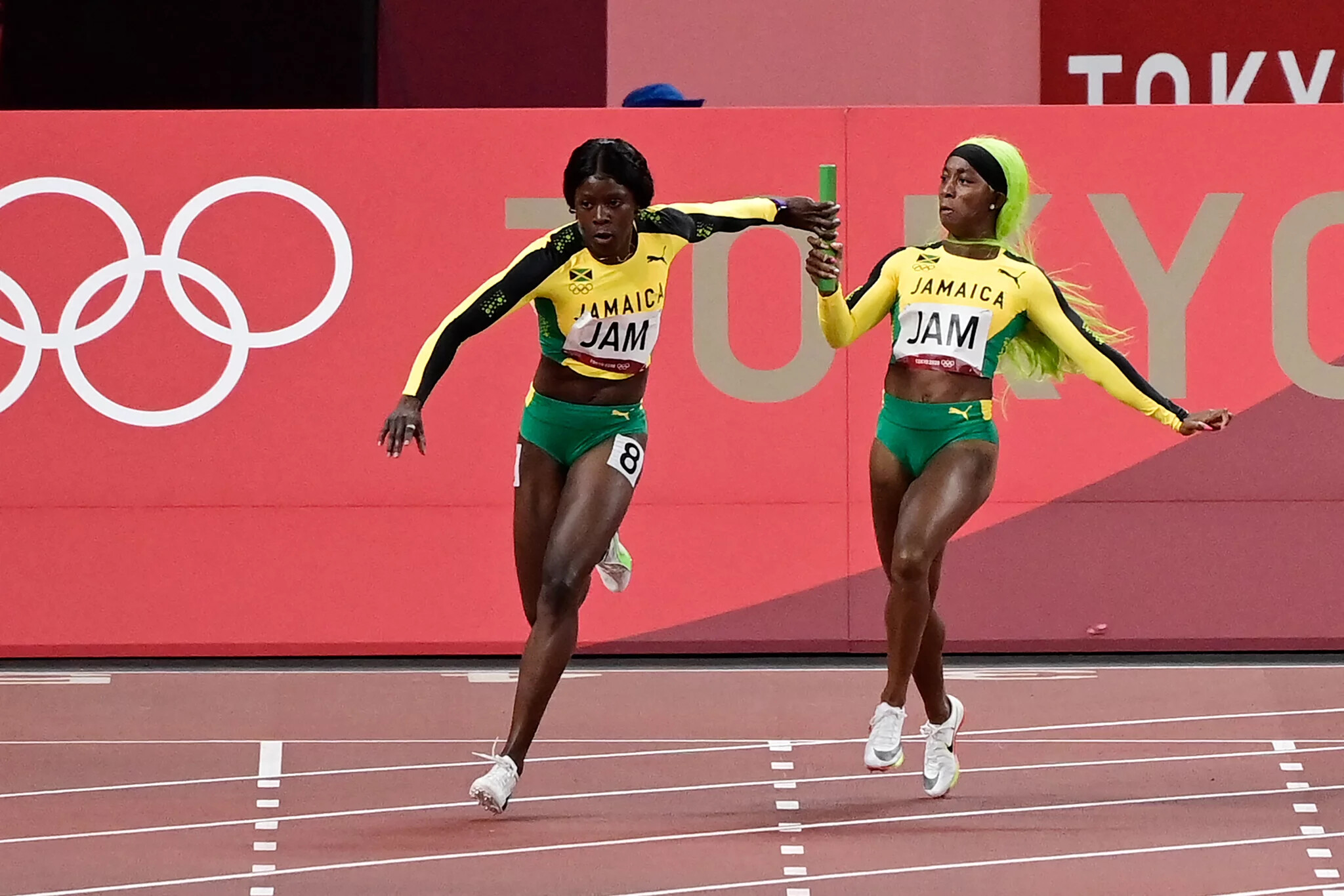
Jamaican team for Budapest
WOMEN
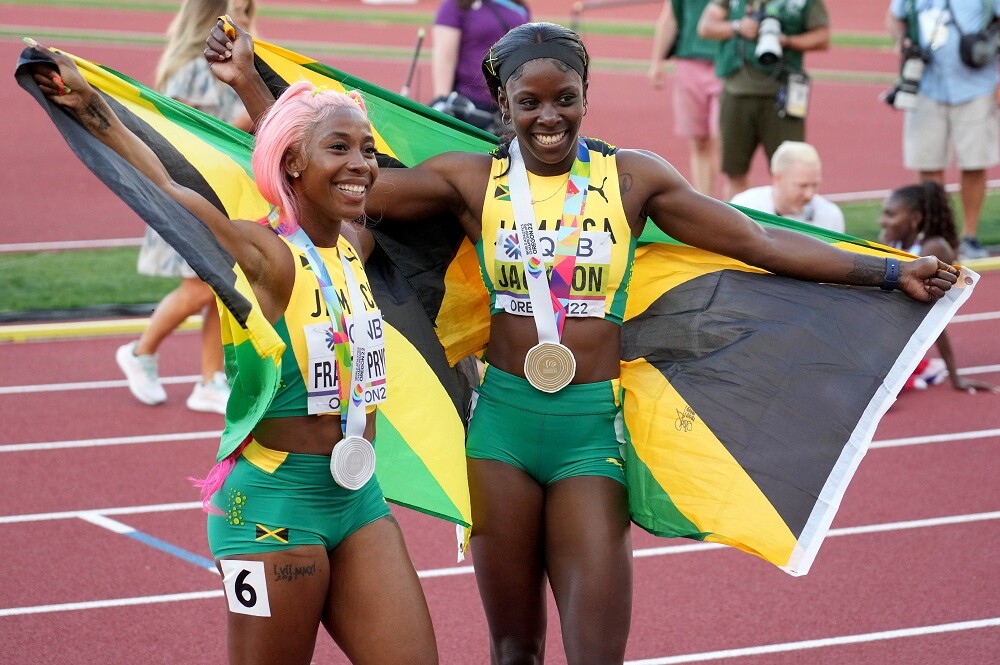
100m: Shashalee Forbes, Shelly-Ann Fraser-Pryce, Shericka Jackson
200m: Shelly-Ann Fraser-Pryce, Shericka Jackson, Natalliah Whyte
400m: Candice McLeod, Nickisha Pryce, Charokee Young
800m: Natoya Goule-Toppin, Adelle Tracey1500m: Adelle Tracey
100m hurdles: Ackera Nugent, Megan Tapper, Danielle Williams
400m hurdles: Rushell Clayton, Andrenette Knight, Janieve Russell
High jump: Lamara Distin, Kimberly Williamson
Long jump: Tissana Hickling, Ackelia Smith
Triple jump: Shanieka Ricketts, Ackelia Smith, Kimberly Williams
Shot put: Danniel Thomas-Dodd
Discus: Samantha Hall
Hammer: Nyoka Clunis
4x100m: Shashalee Forbes, Shelly-Ann Fraser-Pryce, Shericka Jackson, Natasha Morrison, Elaine Thompson-Herah, Natalliah Whyte, Briana Williams
4x400m: Candice McLeod, Nickisha Pryce, Janieve Russell, Ronda Whyte, Shiann Salmon, Charokee Young
MEN
100m: Ryiem Ford, Oblique Seville, Rohan Watson
200m: Rasheed Dwyer, Andrew Hudson
400m: Sean Bailey, Zandrion Barnes, Antonio Watson
800m: Navasky Anderson
110m hurdles: Orlando Bennett, Rasheed Broadbell, Hansle Parchment
400m hurdles: Roshawn Clarke, Jaheel Hyde, Assinie Wilson
High jump: Romaine Beckford
Long jump: Tajay Gayle, Carey McLeod, Wayne PinnockTriple jump: Jaydon Hibbert
Shot put: Rajindra Campbell
Discus: Fedrick Dacres, Traves Smikle, Roje Stona
4x100m: Ackeem Blake, Michael Campbell, Ryiem Ford, Oblique Seville, Tyquendo Tracey
4x400m: Sean Bailey, Zandrion Barnes, Demish Gaye, Malik James-King, Jevaughn Powell, Antonio Watson
Mixed 4x400m: D’Andre Anderson, Rusheen McDonald, Joanne Reid, Stacy-Ann Williams.
(08/03/2023) ⚡AMPby World Athletics
World Athletics Championships Budapest 23
From August 19-27, 2023, Budapest will host the world's third largest sporting event, the World Athletics Championships. It is the largest sporting event in the history of Hungary, attended by athletes from more than 200 countries, whose news will reach more than one billion people. Athletics is the foundation of all sports. It represents strength, speed, dexterity and endurance, the...
more...How sore should you be after a run?
Most of us have experienced tender or stiff muscles after a hard workout, especially after adding new or challenging training. Where muscle soreness is concerned, how much is too much, and when do we need to scale back our training and opt for rest? We checked in with British sports science consultant Jo Clubb.
Runners are notorious for pushing through suffering in their training. Is soreness that eases off during a run OK?
Yes. DOMS or Delayed Onset Muscle Soreness (caused by microscopic damage to muscle fibres as a result of training) is a natural part of the training process and a signal to the body that it needs to adapt and get stronger. DOMS generally occurs one to three days after training. Depending on your training program and your body’s response, you may still be sore on your next run, but exercising (particularly with a thorough warmup) may help to alleviate some of this soreness.
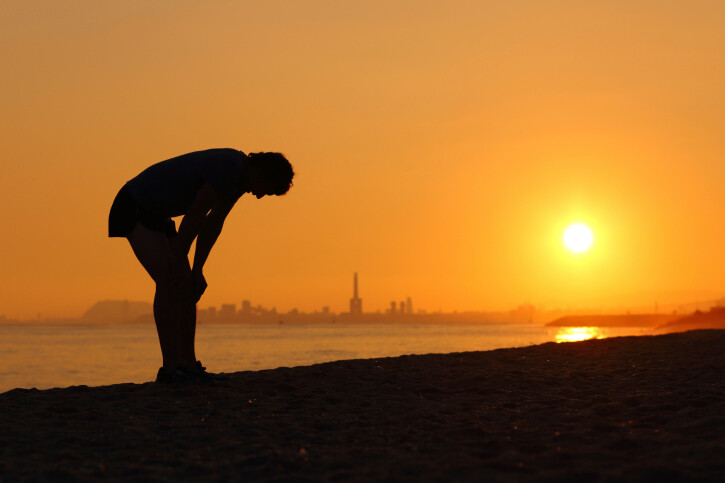
Should a person always feel sore after a hard workout?
If you’re never experienced DOMS in your training, perhaps you’re not training hard enough! It is equally important that you’re not just constantly exercising through soreness. We are always seeking the optimal balance between training and recovery. Without recovery, the body will not adapt, performance will plateau or worsen, and the risk of injury and illness increase. While it might not feel like it, rest days are sometimes the best thing you can do for your running.

Where should runners draw the line on soreness?
If soreness is affecting performance or causing extreme discomfort, the body is trying to communicate that it needs more rest. Poor sleep, getting sick often, irritability and bad moods, plateauing progress and lack of motivation can all be signs of overreaching or overtraining.
Many runners use RPE (Rating of Perceived Exertion) to get a subjective measure of your training load. Pair this with your own ratings of sleep, fatigue, mood and muscle soreness to see how your body is responding. Even with elite athletes, sports scientists use subjective measures to gauge how the athlete is responding to the program.
When should a runner be concerned about what they’re feeling?
A feeling of pain (rather than soreness) can be a red flag, and time to consider consulting a medical practitioner. Think of soreness as more of a tender, dull ache that you feel within a whole muscle group, and pain as a sharper, more specific sensation.
Pain is normally the nervous system trying to protect the body from something that is amiss. Pay attention to general soreness not subsiding after three or so days as well as swelling, bruising, wounds or difficulty putting weight on an area.
If you do have an injury, don’t panic–it’s not necessarily the end of training. When elite athletes are undergoing rehabilitation, we embrace it as an opportunity to work on other areas of their physical capacity (while prioritizing and protecting the injury first and foremost).
(08/03/2023) ⚡AMPby Keeley Milne
Jenny Simpson, U.S. mile legend, to race Olympic marathon trials
Jenny Simpson, the most decorated U.S. female miler in history, is moving up in distance and plans to race the 2024 Olympic Marathon Trials on Feb. 3 in Orlando, near where she grew up.
“It’s an easy decision for me to run the marathon Trials in Orlando,” she wrote in an email after making the announcement in an Instagram live video with the Orlando Track Shack. “For a long time I’ve flirted with the idea of going the full distance and with Orlando hosting the Trials, I just can’t miss the chance to go back home.”
Simpson, 36, announced last October that she was shifting focus from the track, where she was a world champion and Olympic bronze medalist in the 1500m, to longer races on the roads.
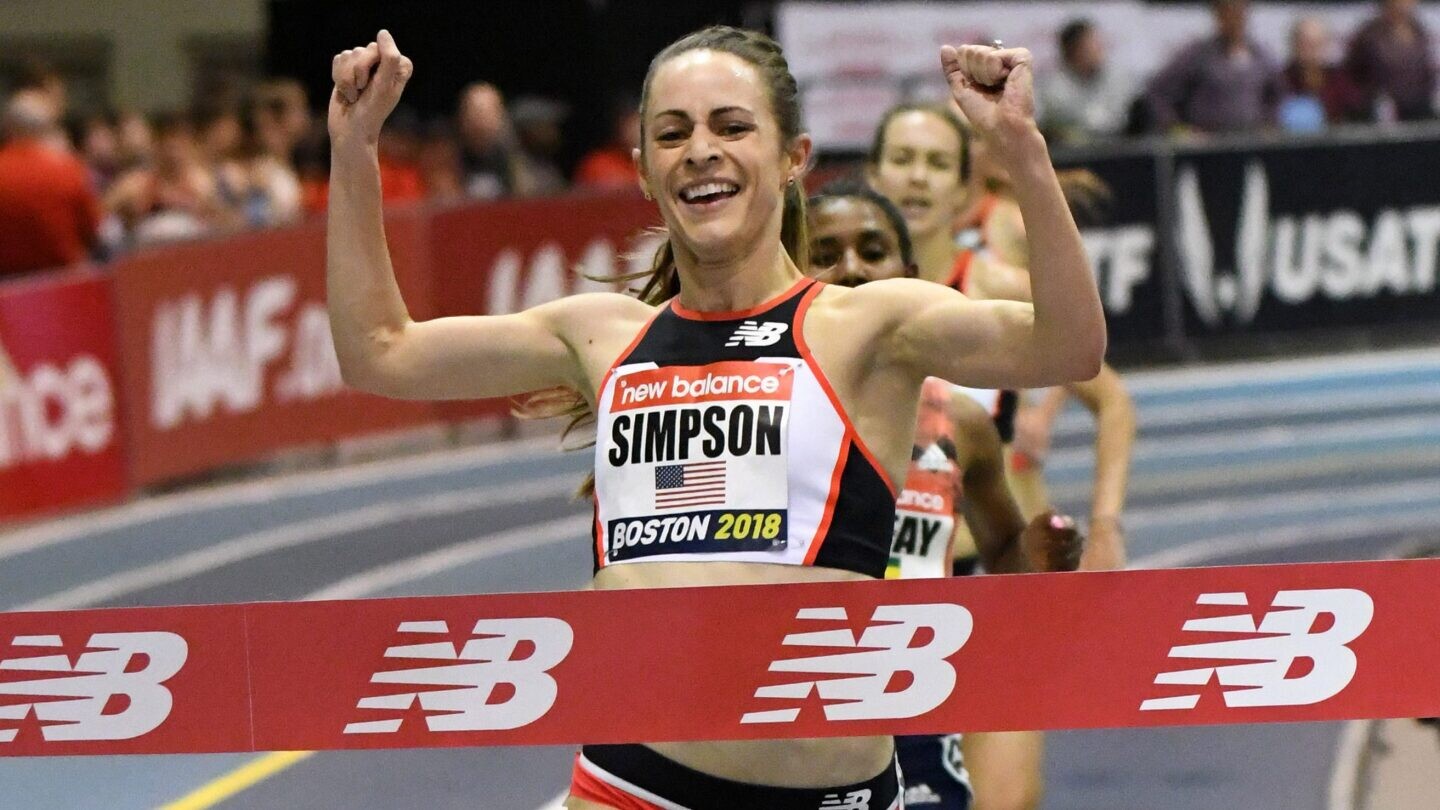
Typically for distance runners that accomplished, it means an eventual move all the way up to the marathon. Simpson messaged then that her chances of racing over 26.2 miles were “51% :).”
A month later, Orlando was announced as the host of the 2024 Olympic Marathon Trials. Simpson’s family moved to Florida when she was in third grade, and she went to high school in Oviedo, which is 15 miles northeast of Orlando.
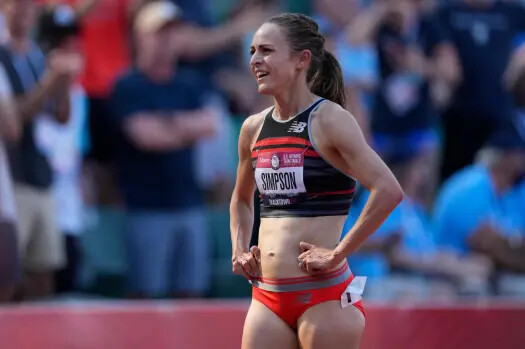
“It’ll be fun to literally come back to the beginnings of my running and take in the scenery of the place where I ran my first few races,” Simpson said in Tuesday’s video.
Simpson’s last track race was at the Tokyo Olympic Trials, where she was 10th in the 1500m final. It was her first time not placing in the top three at a U.S. outdoor championships since 2006 and first time not being on an Olympic team since 2004.
In September 2021, Simpson ran the Cherry Blossom 10-mile road race in Washington, D.C., nearly three times as long as the farthest distance she had raced as a pro up to that point.
She then focused much of her time in 2022 helping her Colorado community heal and rebuild from a late December 2021 fire.
She ran 5km and 10-mile road races late in 2022, then on Jan. 15 of this year placed ninth in the Houston half marathon in 70 minutes, 35 seconds to beat the Olympic Trials qualifying time of 72 minutes. That was her most recent race, according to World Athletics.
Simpson attended the 2020 marathon trials to watch husband Jason run. Jason has not qualified for next year’s trials yet but is still hopeful.
One U.S. woman has made Olympic teams in both the 1500m and the marathon in her career -- Francie Larrieu-Smith, who made her first team in the 1500m at age 19 and her last in the marathon at 39, according to Olympedia.org.
Simpson hasn’t said whether she will race a marathon in the fall or if the trials will be her debut at the distance, “but the next six months will be all about getting ready to go the extra 25.2 miles,” she wrote.
The list of marathon trials qualifiers already includes nine of the 15 fastest American women in history. The top three finishers on Feb. 3 will likely make up the Olympic team.
“As I get older, I didn’t want to run out of really good years to give to something that was so intriguing to me for so long,” Simpson said of the marathon. “I’ve accomplished a lot already, and now I can do something that I want to do, not necessarily something that’s going to just objectively, absolutely pay off.”
(08/02/2023) ⚡AMPby Nick Zaccardi
2028 US Olympic Trials Marathon
Most countries around the world use a selection committee to choose their Olympic Team Members, but not the USA. Prior to 1968, a series of races were used to select the USA Olympic Marathon team, but beginning in 1968 the format was changed to a single race on a single day with the top three finishers selected to be part...
more...World Athletics planning a new competition format for 2026
The innovative event aims to maintain the sport's momentum by showcasing the "best of the best" in athletics during non-Olympic and world championship years.
During a media call on Monday, World Athletics president Sebastian Coe provided more insights into a planned new format scheduled to be added to the international athletics calendar in 2026. The innovative event aims to maintain the sport’s momentum by showcasing the “best of the best” in athletics during non-Olympic and non-world-championship years.
Coe highlighted the significance of this new format, stating, “Although 2026 is often referred to as a ‘fallow year’ due to the absence of World Championships or Olympics, the new event aims to offer a fresh and different experience for fans and athletes alike.” The ultimate goal for World Athletics is to incorporate this format into the four-year cycle of athletics competitions.
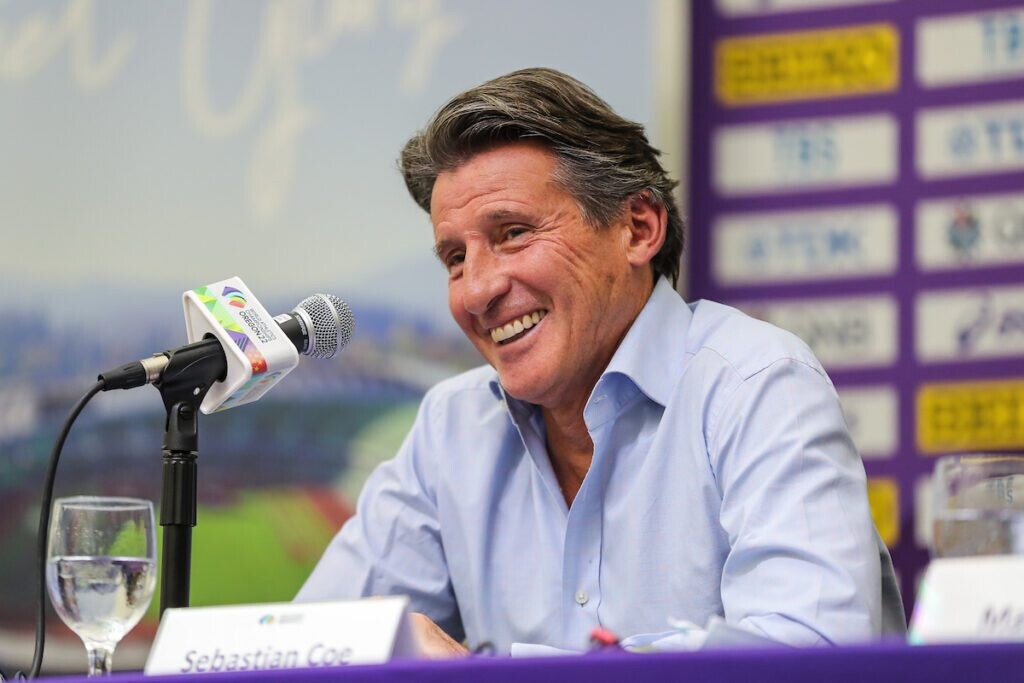
While the exact format is still being fine-tuned and potential hosts considered, the primary focus is to deliver two or three nights of high-quality athletics, featuring the world’s best athletes. The intention is to have smaller fields and no heats or cross-heats, creating an action-packed spectacle specifically designed for television viewers. “We haven’t entirely agreed on the format, and we are still working with potential hosts here, so there’s more to come,” Coe added.
It is speculated that the new format may draw parallels to the existing Diamond League Final, which invites top athletes from each Diamond League meet to compete in a two-day championship event.
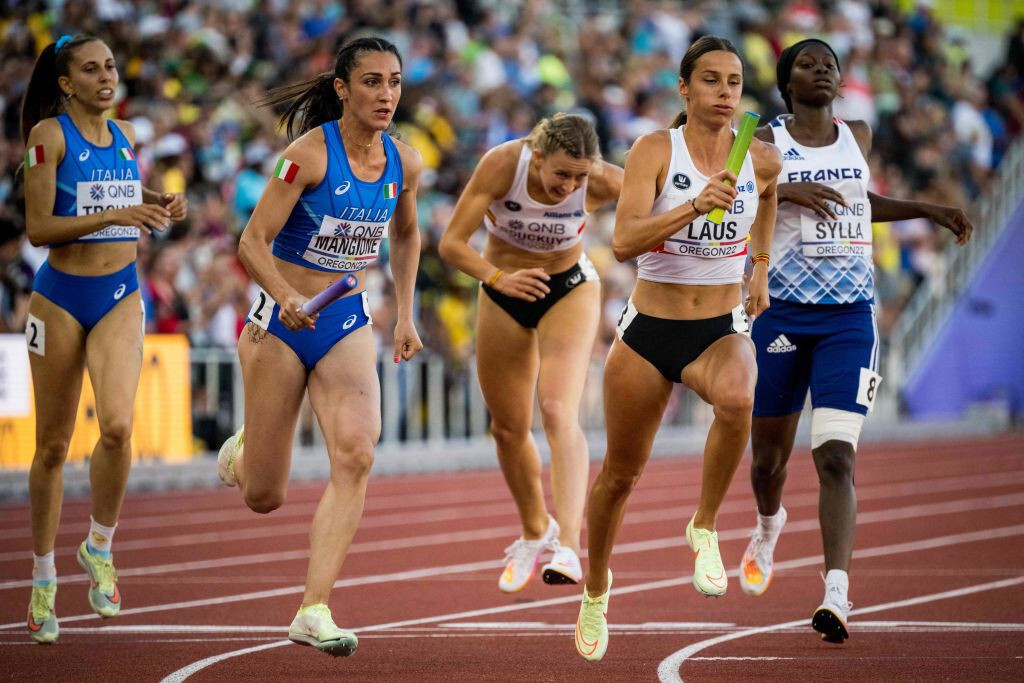
Coe has served as the World Athletics President since 2015 and is set to stand unopposed for a third term at the upcoming World Athletics Congress in Budapest on Aug. 17, ahead of the 2023 World Athletics Championships. Regarding potential investment from countries like Saudi Arabia to enhance the sport’s growth, Coe emphasized the organization is taking a cautious approach, stating, “My default position is that investment from any country or sector looking to enter our sport would be looked at very carefully.” He also pointed out that the executive board has previously declined investments from certain sectors and countries, indicating that any potential investment would undergo thorough evaluation before being accepted.
As athletics enthusiasts eagerly await further details on this new format, the prospect of witnessing a condensed showcase of top-tier athletes and exhilarating performances in 2026 promises to be a game-changer for the sport.
(08/02/2023) ⚡AMPby World Athletics
Ukrainian team prepares for World Athletics Championships
The Ukrainian athletics team will gather in Slovakia this week for a final training camp before travelling to Hungary for the World Athletics Championships Budapest 23, starting in less than three weeks (August 19).
World Athletics’ Ukraine Fund and the International Olympic Committee’s Solidarity Fund have combined to provide training camp accommodation for 40 athletes and officials in Banska Bystrica, Slovakia, which will allow Ukraine’s top athletes to complete their final preparations for their most important competition of the year.
World Athletics has provided additional accommodation for three athletes and their families for an extended period in Bankska Bystrica, from 1 June to 30 September.

World Athletics President Sebastian Coe said: “We understand how important and inspirational Ukraine’s athletes are to their country at this terrible time and we want to give them every opportunity to compete and excel, despite the great hardship being visited on them and their communities by this horrific war. They have lost so much and the least we can do is help them to keep their athletics dreams alive. I am full of admiration for their fortitude and resilience and I am looking forward to welcoming the Ukrainian team to the National Athletics Centre in Budapest in the coming weeks.”
The general secretary of the Ukrainian Athletic Association Iolanta Khropach offered her “heartfelt thanks” for the “important financial assistance provided during this terrible war in our country”.

“Your unwavering belief in us has made a profound impact on the life of our team and the opportunities to prepare for world-class competitions,” she said. “Thanks to your support, we have been able to provide the best athletes of the Ukrainian team with the necessary conditions on the final stage of the preparation to the World Athletic Championships in Budapest to achieve their sports goals. We are happy to see your willingness to lend a helping hand in difficult times for us during the war.”
World Athletics and the US Olympic and Paralympic Committee funded a similar programme to help the Ukrainian team prepare for the World Athletics Championships Oregon22 last year, where two athletes emerged as medallists. World indoor champion Yaroslava Mahuchikh won the silver medal in the women’s high jump and Andriy Protsenko won bronze in the men’s high jump.
The IOC contributed an additional US$20,000 to support the Ukrainian team at the World Athletics U20 Championships in Cali last year.
Through its Ukraine Fund, World Athletics distributed more than US$220,000 last year to support Ukrainian athletes preparing for the World Championships and the World Athletics U20 Championships in response to the crisis caused by Russia’s invasion of Ukraine, and is distributing a further US$190,000 this year to support Ukrainian athletes preparing for Budapest.
This fund was launched by World Athletics, the Member Meetings of Diamond League Association and the International Athletics Foundation in April 2022 with the purpose of assisting professional athletes, immediate family members and their support personnel affected by Russia’s invasion of their home country.
This is in addition to the Solidarity Fund of US$7.5 million established by the International Olympic Committee (IOC) in February 2022 to support Ukrainian athletes and the Ukrainian Olympic community.
(08/02/2023) ⚡AMPby World Athletics
World Athletics Championships Budapest 23
From August 19-27, 2023, Budapest will host the world's third largest sporting event, the World Athletics Championships. It is the largest sporting event in the history of Hungary, attended by athletes from more than 200 countries, whose news will reach more than one billion people. Athletics is the foundation of all sports. It represents strength, speed, dexterity and endurance, the...
more...Struggling for a new PB? Your genetics could be to blame
You’re doing everything right–nailing all your workouts, fueling properly and not going too hard on your easy days–but the time on the finish clock just won’t budge. What gives? According to a new study, it might be because of your genetics. Recent research out of the University of Essex in the U.K. discovered that less than 31 per cent of people have the genetic makeup that allows them to maximize their training and see the best results.
The study
The eight-week study involved 45 participants (25 men and 20 women) between 20 and 40 years old. The participants completed the Cooper 12-minute Run Test at the beginning of the study, in the middle and again at the end. This test requires participants to run as far as they can in 12 minutes.
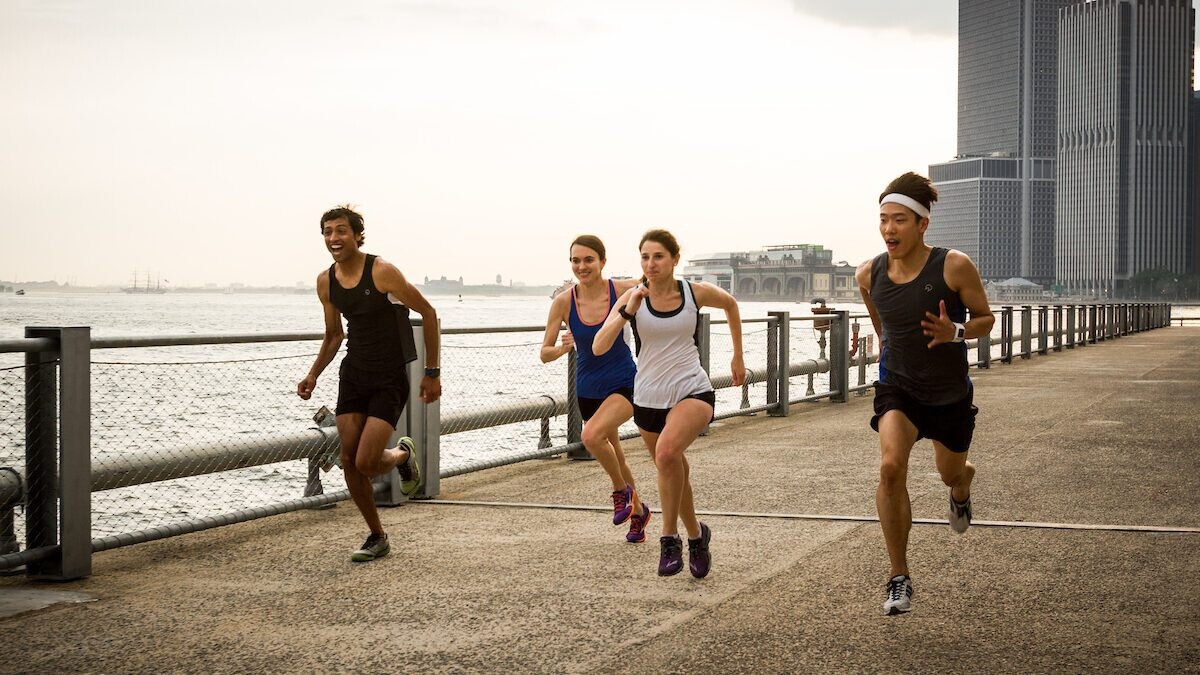
Throughout the eight weeks, each participant completed the same training protocol–three weekly runs, with the duration increased from 20 to 30 minutes over the course of the eight-week study.
After performing a genotype analysis and statistical analysis on participants, researchers discovered that each of the top performers had a combination of key gene variants called single nucleotide polymorphisms (SNPs) that were linked to running performance. Participants who had these SNPs improved by an average of 11.5 per cent over the eight-week period, while those who did not saw little to no improvement, even after following the same training program.
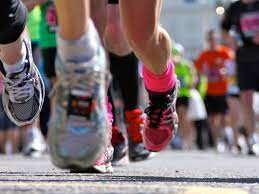
What does this mean for runners?
There are a few key takeaways from this study, the first and perhaps most obvious being that yes, there is a genetic component to success in running. If you are not one of the lucky few who have these SNPs, though, it doesn’t necessarily mean you’ll never snag a new PB.
While this study does highlight the need for favourable genetics if you want to be a prolific runner, there are a few caveats. The first is that eight weeks is a very short training block. While it’s true that someone with natural running talent will likely see more significant improvements in a short time compared to the rest of us, that doesn’t mean that someone without those genetics won’t see improvement over a longer period. It may take several months of consistent, dedicated training for you to see the same results, and there’s nothing wrong with that.
Secondly, the training program that each participant followed during the study only involved steady-state running, which may not be the optimal way to train for everyone. Some runners respond more to other forms of training, like speedwork or hill repeats, so if you’re feeling stuck, it may be time to switch things up.
Finally, it’s important to remember that while getting a shiny new PB is fun, there are so many other reasons to get out and run. Run because it makes you feel good, run because it improves your health, run because it makes you a better spouse, parent, friend or co-worker–or all of the above. The enjoyment you get from running will last far longer than the afterglow of a new personal best, anyway.
(08/02/2023) ⚡AMPby Brittany Hambleton
2024 U.S. Olympic Marathon Trials to start at 12 noon
USA Track and Field (USATF) caused a stir on social media on Tuesday after announcing in an email addressed to athletes that the 2024 Olympic Marathon Trials would begin at 12 noon, due to broadcasting rights. The marathon trials are scheduled to take place in Orlando, Fla., on Feb. 3, 2024.
The late start time has already caused worry for many coaches and athletes due to the potential for high temperatures. In February, the average temperatures in Orlando range from a low of 13 C to a high of 23 C, but in recent years, it has not been uncommon for temperatures to soar to 30 C–which would be detrimental to performance and potentially unsafe for elite marathoners.
According to Runners World, the email sent to athletes mentions that the Local Organizing Committee (LOC) in Orlando has extensive experience in planning and executing high-level events and has contingencies in place for any potential challenges, including weather-related ones.
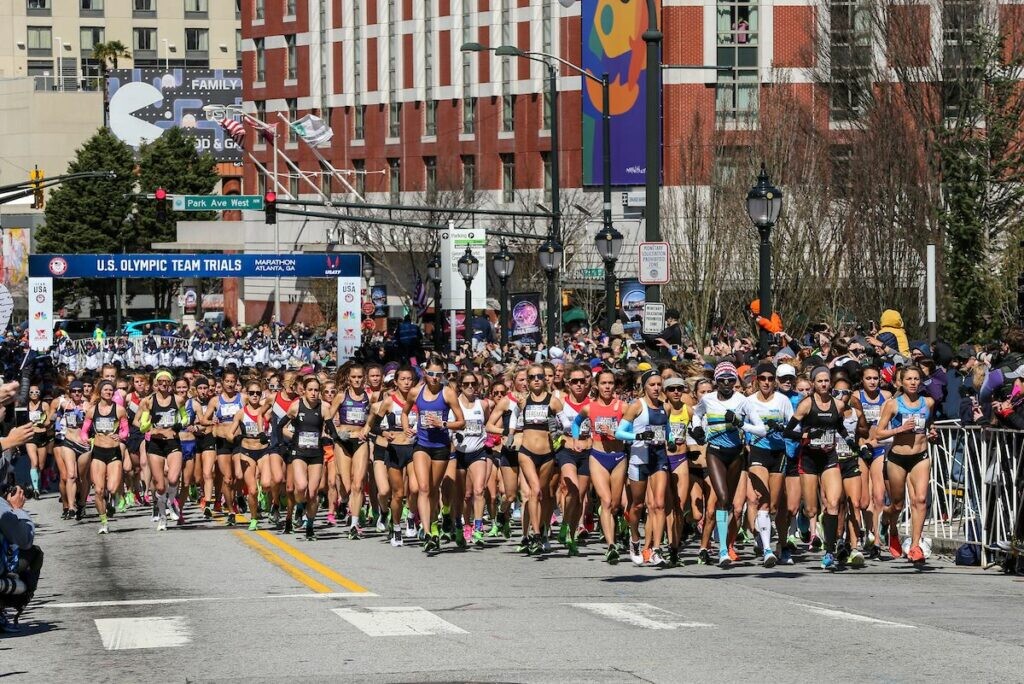
The decision to set the start time at noon is believed to be influenced by executives at NBC, the network broadcasting the event. The email highlights that the race will be televised live on NBC for three hours, providing coverage of the men’s and women’s runners and races.
The Paris Olympic marathon, which is also expected to be warm, is scheduled for Aug. 10–the middle of summer in the French capital. But both the men’s and women’s races are set to begin at 8 a.m. local time. This disparity in start times has added to the concerns raised by the late start for the U.S. Trials in Orlando.
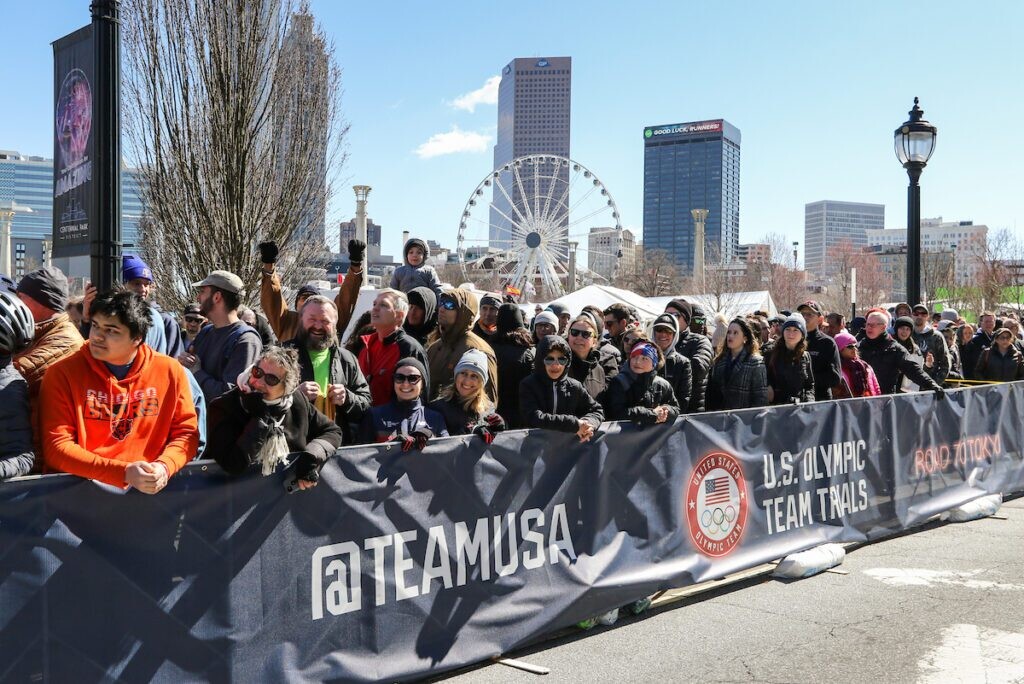
The U.S. Olympic Marathon Trials serves as the selection race for the men’s and women’s Olympic teams that will compete at the Summer Games in Paris. The top three finishers who also meet World Athletics’ qualifying standards will go on to represent Team USA at the Olympics.
Some athletes and coaches have expressed concern, while others seem to be looking forward to it. 2018 Boston Marathon champion Des Linden tweeted: “Warmer temps should slightly minimize the pace of super shoes and reward smarter racing. Count me in!”
U.S. ultrarunner Camille Herron said “We are seven months out from the Olympic Marathon Trials. No excuses to not be prepared for a potentially hot day in Florida.”
Renowned U.S. marathon coach Kevin Hanson, who currently has 13 athletes (eight women and five men) qualified for the U.S. Trials, stressed his disappointment that athletes’ health is not taken into consideration. “There is no amount of TV coverage that is worth the health of our athletes,” Hanson tweeted.
This isn’t the first time USATF has faced criticism for its handling of extreme heat during events. At the 2021 Olympic Track and Field Trials in Eugene, Ore., where temperatures were forecasted to reach highs of 40 C, several events were rescheduled for safety. However, the heptathlon was not, and athlete Taliyah Brooks collapsed on the track due to the heat and later filed a lawsuit against USATF.
In the 2016 Olympic Marathon Trials in Los Angeles, which began at 9 a.m., some athletes struggled on an unusually warm day, with temperatures reaching the mid-70s Fahrenheit. Shalane Flanagan, who placed third in 2:29:19, collapsed at the finish line, and the organizing committee and USATF later faced criticism for not providing adequate water on the course for the athletes.
(08/01/2023) ⚡AMPby Marley Dickinson
2028 US Olympic Trials Marathon
Most countries around the world use a selection committee to choose their Olympic Team Members, but not the USA. Prior to 1968, a series of races were used to select the USA Olympic Marathon team, but beginning in 1968 the format was changed to a single race on a single day with the top three finishers selected to be part...
more...Faith Kipyegon now plans to attack the 40-year-old 800m world record
Her main focus at the moment is to successfully defend her world title when she heads to Budapest later this month.
Triple world record Faith Kipyegon might be targeting the 40-year-old 800m world record if a chance presents itself.
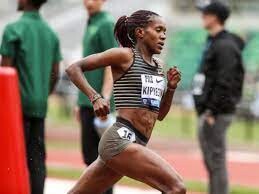
Kipyegon has a personal best time of 1:57.68, which she ran to win the Diamond League Meeting in Doha, Qatar in 2020. The last time she ran the two-lap race was last year during the Trials for the Commonwealth Games and World Championships where she finished.
After three world records, will Kipyegon consider lowering Czechia’s Jarmila Kratochvílova world record time of 1:53.48?
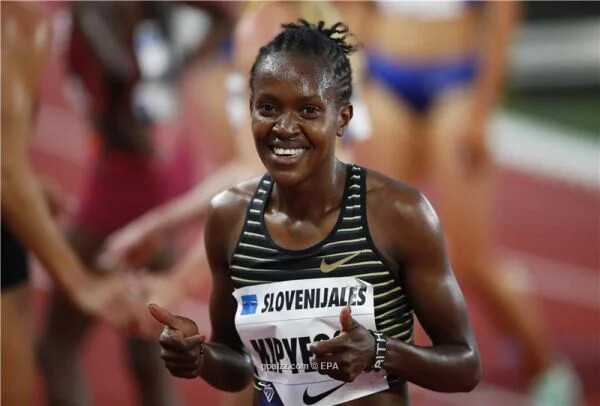
“I don’t know…800m is not easy…but anything is possible. For now, I leave that one for Mary Moraa, she is capable…or Athing Mu and Keely Hodgkinson.
They are all capable of breaking that barrier in the 800m. But if a chance comes whereby I am able to try, I’ll appreciate it,” Kipyegon told Olympics.com.
Her main focus at the moment is to successfully defend her world title when she heads to Budapest later this month.
She admitted to pressure ahead of the event since she will be doubling in the 1500m and 5000m. Her performance at the World Championships will determine greatly whether she will also be doubling at the Paris Olympics.
“I can’t go there like just an athlete, now I have three world records, they expect a lot from me. But going to Budapest, I have to just be myself and run my races and see what will happen at the finish line.
Having fun, enjoying sports and even life is amazing… it has been the drive of our success. It helps mentally (by distracting) you from thinking of races every day and upcoming races and what you want to achieve or what will be the outcome,” she said.
(08/01/2023) ⚡AMPby Abigael Wuafula
World Athletics Championships Budapest 23
From August 19-27, 2023, Budapest will host the world's third largest sporting event, the World Athletics Championships. It is the largest sporting event in the history of Hungary, attended by athletes from more than 200 countries, whose news will reach more than one billion people. Athletics is the foundation of all sports. It represents strength, speed, dexterity and endurance, the...
more...Kenya’s Hellen Obiri highlights field for Beach to Beacon 10K
Kenya’s Hellen Obiri highlights field for Beach to Beacon 10K on Saturday
Obiri, the 2023 Boston Marathon winner and the only woman to win world championships outdoors, indoors and in cross country, will compete at Beach to Beacon for the first time.
Hellen Obiri of Kenya won the women’s division of the Boston Marathon in April. On Saturday, she’ll compete for the first time in the TD Beach to Beacon 10K in Cape Elizabeth. Charles Krupa/Associated Press
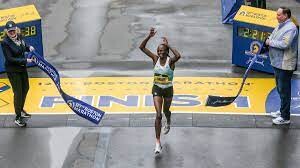
Kenya’s Hellen Obiri, the 2023 Boston Marathon champion, highlights a group of elite runners who will compete Saturday in the TD Beach to Beacon 10K road race in Cape Elizabeth, race officials announced Monday.
Obiri – a two-time Olympic silver medalist and the only woman to win world championships outdoors, indoors and in cross country – will compete at Beach to Beacon for the first time. She’ll be joined by fellow Kenyan and two-time Boston Marathon champion Edna Kiplagat.
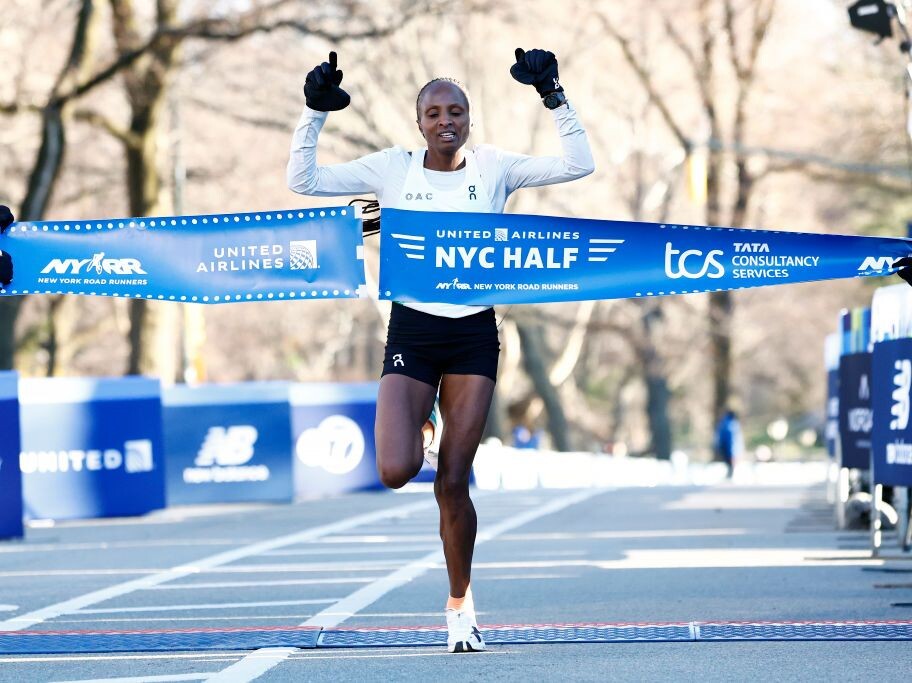
The women’s division also will feature Keira D’Amato of Virginia, who set an American marathon record (2 hours, 19 minutes and 12 seconds) last year, and Sanford native Rachel Schneider Smith, who competed for the United States in the 5,000 meters at the Tokyo Olympics in 2021 and placed fifth at last year’s Beach to Beacon.
A trio of Ethiopians – Addisu Yihune, Amedework Walelegn and Muktar Edris, a two-time world champion – are expected to contend for the men’s title. Top Americans in the field include Utah’s Conner Mantz, a two-time NCAA cross country champion, and Biya Simbassa, who placed third at the 2022 Beach to Beacon.
This year marks the 25th anniversary of Beach to Beacon, founded by Cape Elizabeth native and 1984 Olympic women’s marathon champion Joan Benoit Samuelson.
(08/01/2023) ⚡AMPTD Beach to Beacon 10K
Joan Benoit Samuelson, a native of Cape Elizabeth, Maine, won the first-ever women's Marathon at the 1984 Olympics in Los Angeles and is founder and chair of the TD Bank Beach to Beacon 10K. "A long time dream of mine has been realized" says Samuelson. "I've always wanted to create a race that brings runners to some of my most...
more...Brimin Misoi determined to defend Nairobi Marathon title
Nairobi City Marathon 42km champion Brimin Misoi will be back on the streets of the Kenyan capital to attempt to defend the title he won in 2022.
The second edition of Africa's richest marathon in terms of winners' prize money will be held on Sunday and will be majorly run on the Expressway.
Misoi, the winner of the 2022 Frankfurt Marathon is full of confidence and believes he has what it takes to defend his title. He said he is currently enjoying top shape and has undergone intensive training.
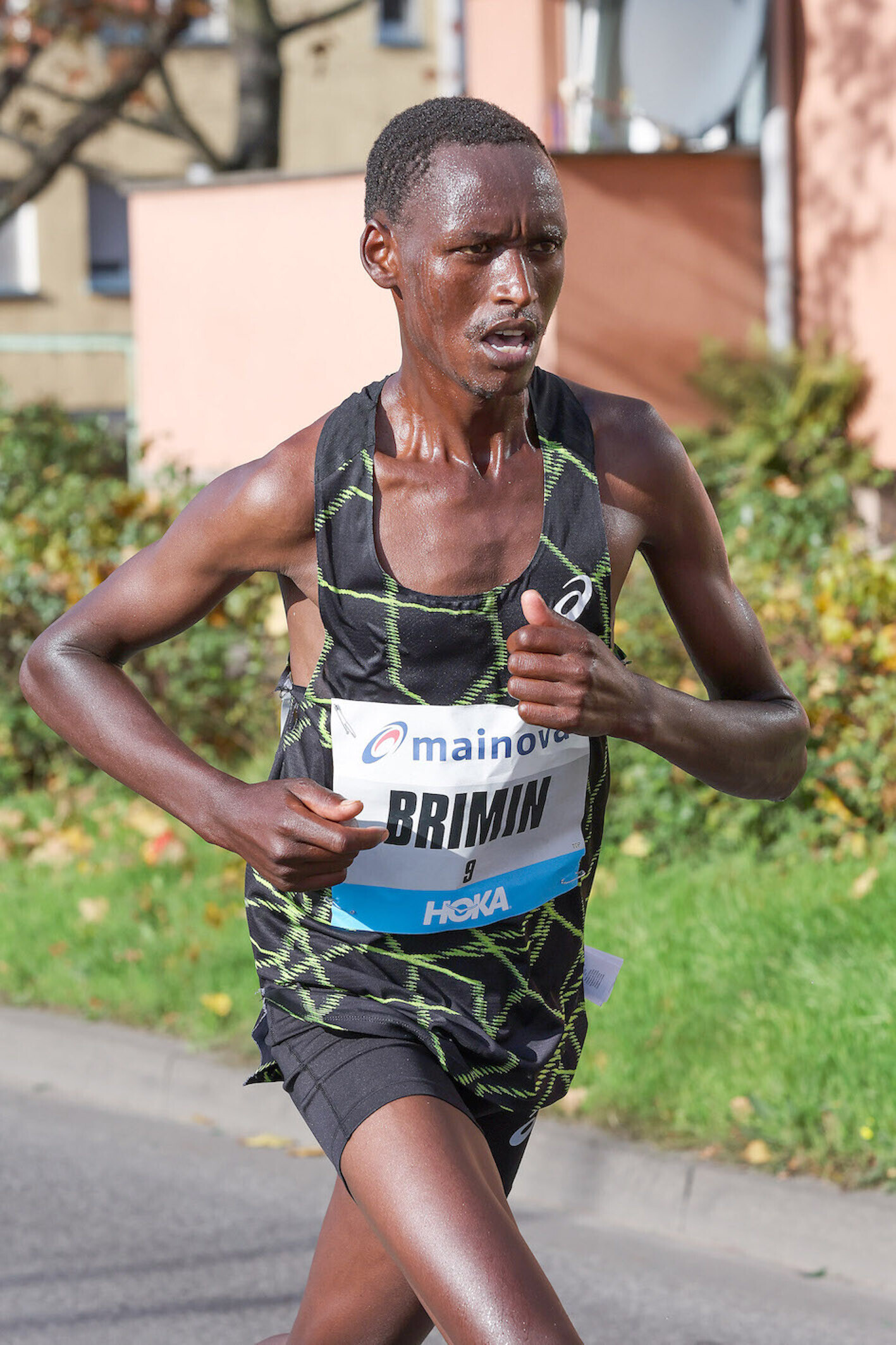
"I feel great and I believe in my training. I trust my abilities and I believe no one will beat me to the title. Nairobi's altitude is a bit lower compared to Kapkitony, Elgeyo Marakwet County where I train thus making it easier for me to win," he said.
The double Nairobi Standard Chartered Marathon winner clocked two hours and 8:03 minutes to win the race in 2022 after breaking off from the leading pack at the 34km mark.

The 35-year-old had a poor run in Japan at the Tokyo Marathon in March, where he finished 13th in 2:07:36.
"My target is to defend my title and lower the time I set last year. I target to run sub-2:06:11, which is my PB set in Germany last year," Misoi added.
This year's edition has attracted more than 13,000 athletes with the organisers targeting 15,000.
On his quest for title defence, Misoi will be up against a group of elite athletes who have registered for the race.
Among the names to watch out for during the race include Edwin Kemboi with a personal best of 2:06:52 and who finished fourth in this year’s Seoul Marathon in March.
Joshua Kipsang (2:08:09), Simon Kipkosgei (2:07:07), and Robert Kipkemboi (2:07:09) are among the fastest athletes who have also registered for the 42km race.
An Ethiopian quartet led by Haile Mekonnen with a PB of 2:14:13, Maseret Yitbarek (2:11:34), Desta Tafa (2:11:13) and Haile Assefa will also be in the chase for the Sh3.5million winner's purse.
In the women’s 42km race, Lydia Simiyu (2:25:44), Sheila Chepkoech (2:27:04) and Sharon Cheimo (2:33:03) are among the fastest Kenyans who will battle it out in the women’s 42km race.
Defending champion Agnes Barsosio who clocked 2:24:45 in last year's event pulled out of Sunday's race after picking a hamstring injury in training.
(08/01/2023) ⚡AMPby Samuel Nganga
NAIROBI MARATHON
Nairobi Marathon is an annual road running competition over the marathon distance held in October in Nairobi, Kenya. First held in 2003, the competition expanded and now includes a half marathon race along with the main race. It was part of "The Greatest Race on Earth", fully sponsored by Standard Chartered Bank....
more...18-year-old sprinter Issam Asinga breaks world junior 100m record
In a remarkable debut on the international stage, 18-year-old Issam Asinga of Suriname stunned the athletics world on Friday, shattering the U20 100m world record at the South American Championships in Sao Paulo, Brazil. Asinga clocked an impressive 9.89 seconds with a tailwind of (-0.8m/s) to become the first South American sprinter to break the 10-second barrier in the 100m.
Asinga’s blazing run surpassed the previous record of 9.91 seconds set by Botswana’s Letsile Tebogo at last year’s World U20 Championships in Cali, Colombia, and also broke the South American area record, bettering the 10.00 mark set by Brazil’s Robson da Silva in 1988.
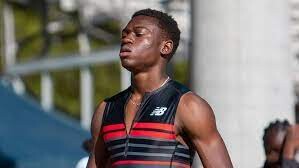
To make his record more impressive, his time was run at altitude, as Sao Paulo sits nearly 800m above sea level. Asinga’s new record also sparred other fast times in the field, with Brazil’s Erik Cardoso breaking the Brazilian national record for silver in 9.97.
The 18-year-old sprint phenom has made headlines in the 2023 season, running for Montverde Academy near Orlando, Fla. Earlier this year, he beat world champion Noah Lyles in a 100m race to break the U.S. high school record, and a week later, broke Lyles’s 200m high school record in 19.97 seconds.
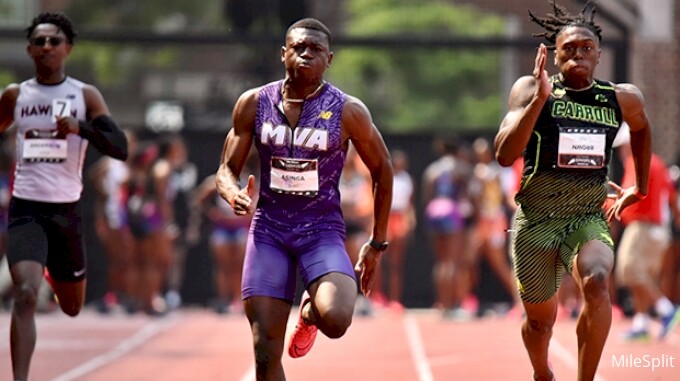
Asinga’s sights are now on the 2023 World Athletics Championships in Budapest this August, where he will run the sprint double. After worlds, Asinga will head to Texas A&M University in the NCAA on a full track and field scholarship. His exceptional talent runs in the family. His father, Tommy Asinga, holds multiple national records for Suriname and represented the country at three Olympic Games (1988, 1992 and 1996).
(07/31/2023) ⚡AMPby Marley Dickinson
Sir Mo Farah confirms final race in London before Olympic hero's retirement
Four-time Olympic gold medalist Sir Mo Farah has announced the Big Half will be his last race in London before retiring.
Farah, who won back-to-back Olympic golds in the 5,000m and 10,000m, revealed ahead of the London Marathon in April that 2023 would be his final year as a competitive athlete. The 40-year-old cited injuries as the reason behind his decision, admitting: "My body is not allowing me."
And it has now been confirmed his final competitive race in London, the city where he won his first two Olympic golds in 2012, will be the Big Half on September 3. It is an event he has won three times, most recently in 2022.
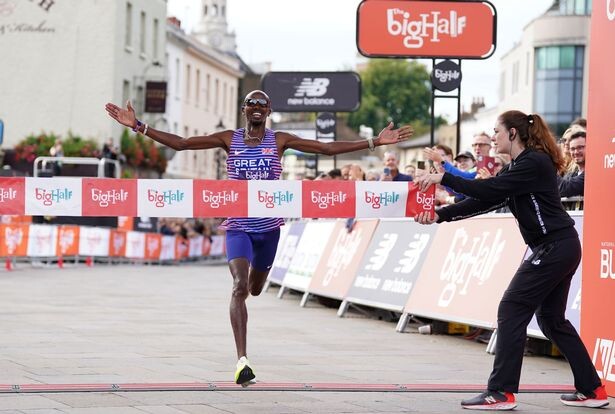
"I'm excited to run my last ever London race at The Big Half," Farah said. "It will be bittersweet, knowing it will be the last time I race competitively in my hometown but it's always such a great day and I know the London crowds will be cheering me on, as they always do. I look forward to being back in London and hope to bring home the win one final time."
Spencer Barden, Head of Elite Athletes at London Marathon Events which organises the Big Half, added: "It's fantastic to have Sir Mo leading the field at this year's The Big Half. Mo has had a phenomenal career and everyone at London Marathon Events wishes him all the best in his retirement.

"Before that though, we hope he signs off his racing career in London with another record-breaking win at The Big Half." However, the Great North Run on September 10 will be Farah's final race altogether.
"I have so many incredible memories of racing at the Great North Run, my first ever race there in 2013 was billed as one of the greatest men’s half marathons in history," he said. "It was a special experience to line up against Ethiopia's Kenenisa Bekele and the iconic Haile Gebrselassie.
"Kenenisa took the top spot that day, but there was so much support for me all along the course. Even at the finish line in the pouring rain, all I can remember was people shouting my name, it made me even more determined to come back and do them proud.
"From 2014 onwards I won the event in front of that incredible crowd six times. There were some really tough races, but the phenomenal support always saw me through.
"It's fitting the AJ Bell Great North Run will be my last ever race as an elite athlete. It will definitely be emotional, but I’m so happy to have the opportunity to celebrate the end of my professional career on that famous finish line."
(07/31/2023) ⚡AMPby Matthew Cooper
The Vitality Big Half
Created by London Marathon Events Ltd, in partnership with Sported,The Vitality Big Half is a community running festival, taking place in London in March. This one-day event offers a host of running distances, from a challenging half marathon to a free one-mile course, as well as a family-friendly festival of food, music and activities. What’s happening? Take part with friends...
more...Daisy Kimeli reigns supreme at the Bogota Half Marathon
Kenya’s Daisy Kimeli and Morocco’s Omar Ait Chitachen have reigned supreme in the women’s and men’s races respectively at the Bogota Half Marathon.
Kimeli, 28, was in the leading pack from gun to the 19th km mark where she unleashed a finishing kick to cut the tape in 1:15:13 ahead of Ethiopia’s Anchialem Haymanot who clocked 1:15:36. Colombia’s Angie Orjuela shone on home soil and sealed the podium in 1:15:43.
Defending champion Angela Tanui, who had entered the race with the hope of successfully reclaiming the title but unfortunately missed out on a podium finish. She was leading for the better part of the race but faded as the race intensified.
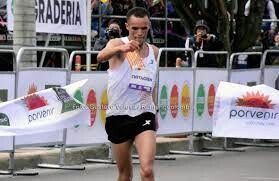
In the men’s race, Chitachen was in a class of his own as he also controlled the better part of the race before sprinting to the finish line. He crossed the finish line first in 1:03:51.
The Kenyan duo of Ezra Tanui and Edwin Soi finished second and third in respective times of 1:04:50 and 1:04:56.
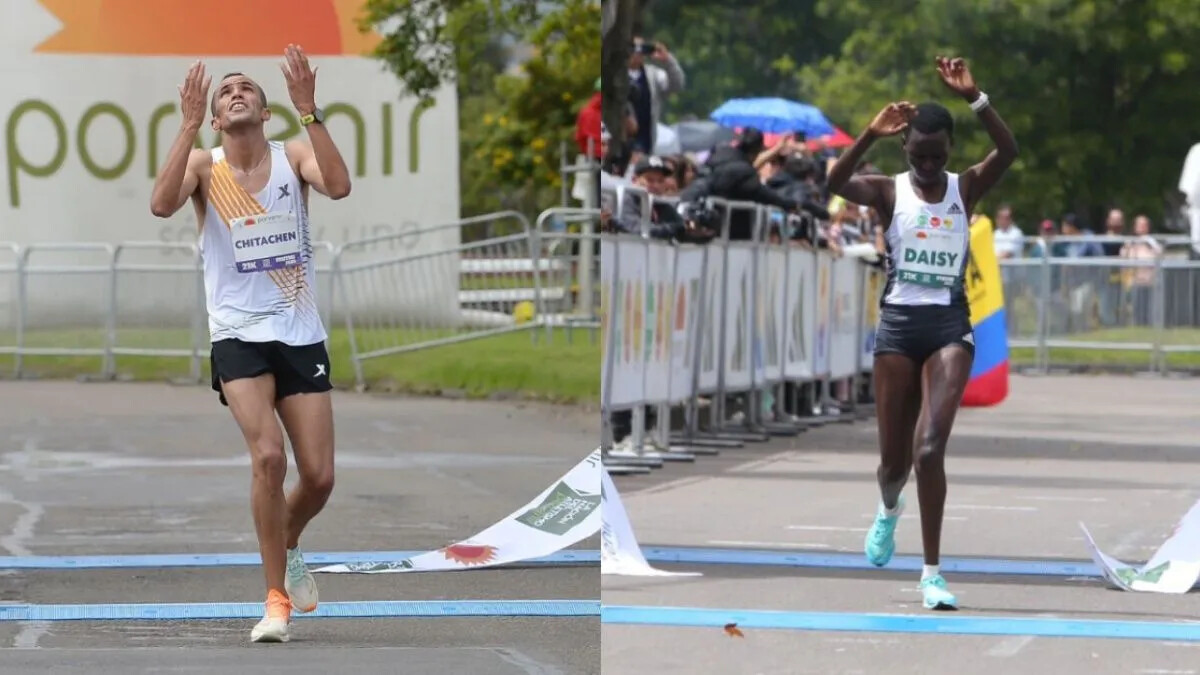
Soi, the defending champion, had also made a return to the streets of Colombia with the hopes of winning back-to-back titles but unfortunately, the field was too strong for him.
He was also looking comfortable in the leading pack but Chitachen reacted before him and he was forced to settle for third place.
(07/31/2023) ⚡AMPby Abigael Wuafula
Bogota Half Marathon
The Bogotá International Half Marathon, or mmB as it is traditionally known, is an annual road running competition over a half marathon distance 21.0975 kilometres (13.1094 mi) taking place in Bogotá, Colombia in late July or early August. Established in 2000, it holds IAAF Gold Label Road Race status, making it the first and thus far only South American race...
more...Pro-runner Allie Ostrander’s Five tips for avoiding injuries
Former American steeplechaser turned trail-elite Allie Ostrander shared her tips for runners to avoid injuries on social media recently, telling fans to consider it her “formal petition against running-related injuries.”
Ostrander announced her shift from track to trail in Feb. 2023 (along with her partnership with ultrarunning GOAT Kilian Jornet‘s brand NNormal) and is also a mental health and eating disorder awareness advocate.
Originally from Kenai, Alaska, Ostrander had a very successful NCAA career with Boise State University in Idaho, winning three straight NCAA titles in the 3,000m steeplechase. Her tips on avoiding injuries are excellent ones for all runners, whether they run on track, trail or roads.

Here are Ostrander’s suggestions, along with some ideas to get you started.
Run more uphill miles

“Uphill running is lower impact and higher output, so you work harder,” shared Ostrander, “but it puts less stress on your bones.” She suggests running on the treadmill at a 3–5 percent grade, running up a long hill and getting a ride down, or doing hill repeats and walking downhill between reps.
Replace easy miles with cross training
“You don’t have to replace every easy run with a bike sesh because, let’s be honest, running is way more fun, but cross-training can be a great tool to get in some aerobic training without the impact,” Ostrander says. She suggests replacing 1–2 runs a week with a cross-training session and explains that she uses the formula of 10min of XT=1 mile running.
Try: a standing bike workout.
Don’t be afraid to strength train, lift heavy, and build muscle
Building muscle will make you a stronger runner, and you’ll be better equipped to power through hard training. “It can also correct imbalances and improve running economy,” says Ostrander.
Try: these at-home strength workouts with Canadian ultrarunner Jazmine Lowther.
Fuel
“Being in an energy deficit increases injury risk and decreases adaptation to training,” explains Ostrander. She recommends focusing on consistently giving your body the energy it needs.
Rest days are important
“Rest allows your body to absorb all the training,” Ostrander says. “Don’t wait until you feel overly tired or have some sort of pain to give yourself a day off.” It can be challenging to really allow ourselves to take the time off we need, and Ostrander suggests scheduling rest days into your training plan to keep it as much a priority as hard training.
Try: recovery day yoga to relax and unwind.
(07/31/2023) ⚡AMPby Keeley Milne
A Higher VO2 Max May Offer Protections Against Cancer, Study Suggests
More evidence of the connection between cancer risk and exercise levels.
A new study found a link between higher cardiorespiratory fitness and lower risk of certain cancers.

The researchers also found an association between higher fitness level and lower risk of dying from cancer.
Cardiorespiratory fitness (CRF), marked by your VO2 max, refers to the capacity for your circulatory and respiratory systems to supply oxygen to the muscles during sustained exercise, and the American Heart Association notes that it’s an important health marker for both physical and mental health.
As new research in JAMA Network Open suggests, it’s also a factor in reducing risk of colon and lung cancer in men.
Looking at data from a large cohort study in Sweden, researchers analyzed health and physical activity information on almost 18,000 men between the ages of 18 to 75, collected over nearly 10 years. CRF was assessed using a cycle ergometer test, which measures heart rate and oxygen consumption.
They found that higher levels of cardiorespiratory fitness were associated with lower risk of developing colon and lung cancer. For those who did develop those cancers, higher fitness was associated with lower risk of death from those cancers within the study’s timeframe.
One possibly counterintuitive finding from the study is that higher CRF was associated with higher prostate cancer incidence. However, even in that result, researchers noted that those with high fitness levels showed a 5 percent lower death rate from that cancer.
Given the wide range in ages, researchers were able to determine that the cancer hazard risk was lowest for younger, non-smoking men at a normal weight and with the highest CRF.
Overall, researchers concluded that having very high CRF levels for any age could prevent up to 8 percent of all colon cancer cases, 4 percent of all deaths from lung cancer, and between 4 to 19 percent of deaths from prostate cancer. They added that it’s likely higher-intensity physical activity could have even more protective effects.
Although the recent study was done only on men, there is ample other research showing similar benefits for women in terms of both cancer prevention and longer survival rates for those who do develop cancer.
For example, a recent study in the British Journal of Sports Medicine about cancer recurrence in men and women with stage III colon cancer found that for physically inactive patients, disease recurrence peaked within two years of treatment, but that wasn’t true with physically active patients, according to that study’s lead author, Justin Brown, Ph.D., director of the Cancer Metabolism Program at Pennington Biomedical Research Center.
Brown told Runner’s World that even for people who had not been very physically active before a cancer diagnosis, making the effort to get consistent exercise can improve health outcomes overall. That means you don’t just potentially live longer through reduced cancer risk or lower recurrence risk, you live better as well.
“Whether someone has cancer or they’re considering what could lower their risk, there’s something about this disease that causes people to step back and evaluate decisions like how they’re treating their health,” Brown said. “Health is comprised of many components, of course, but physical activity is a key starting point, and a crucial factor when it comes to lowering your risk level with cancer.”
(07/30/2023) ⚡AMPby Runner’s World


